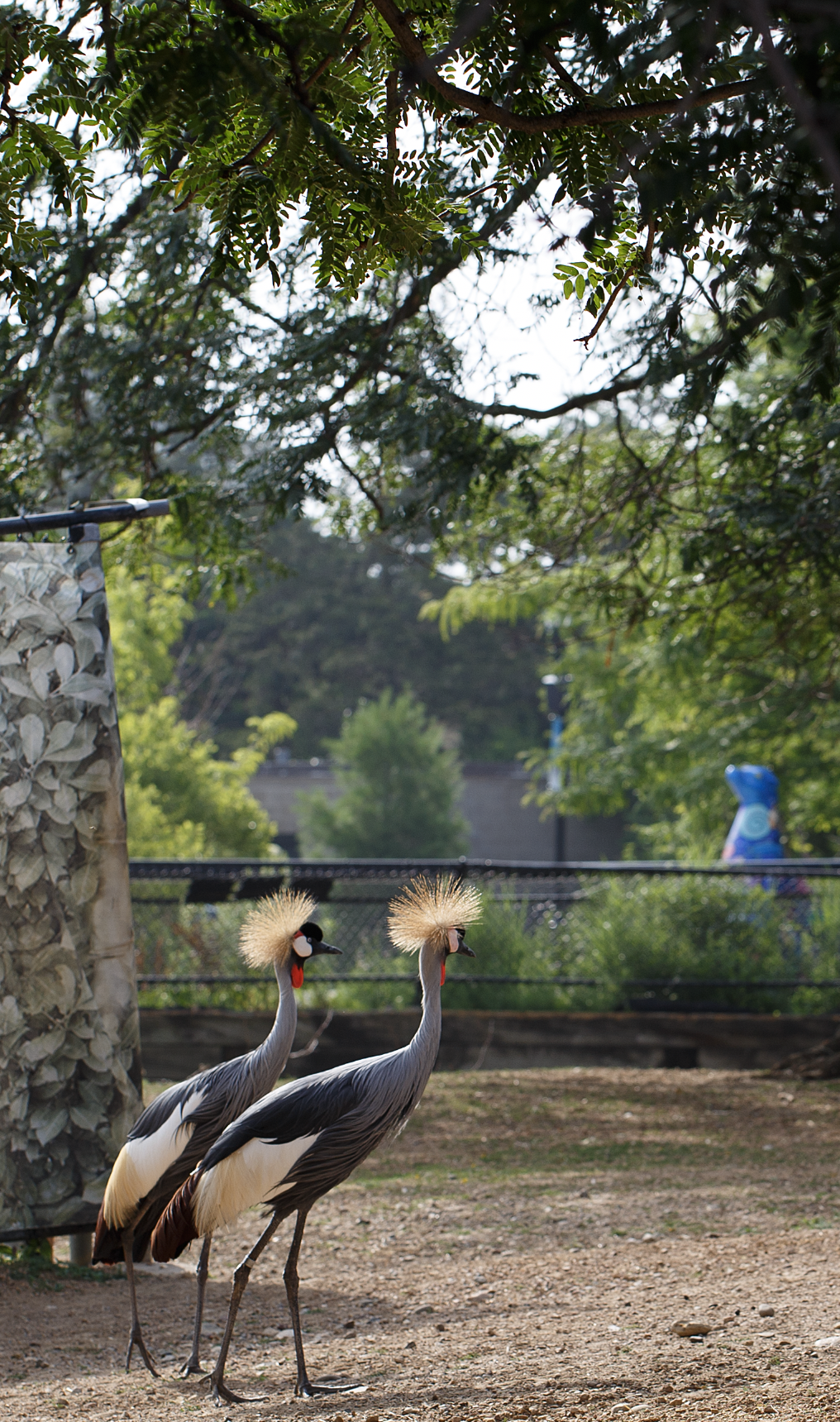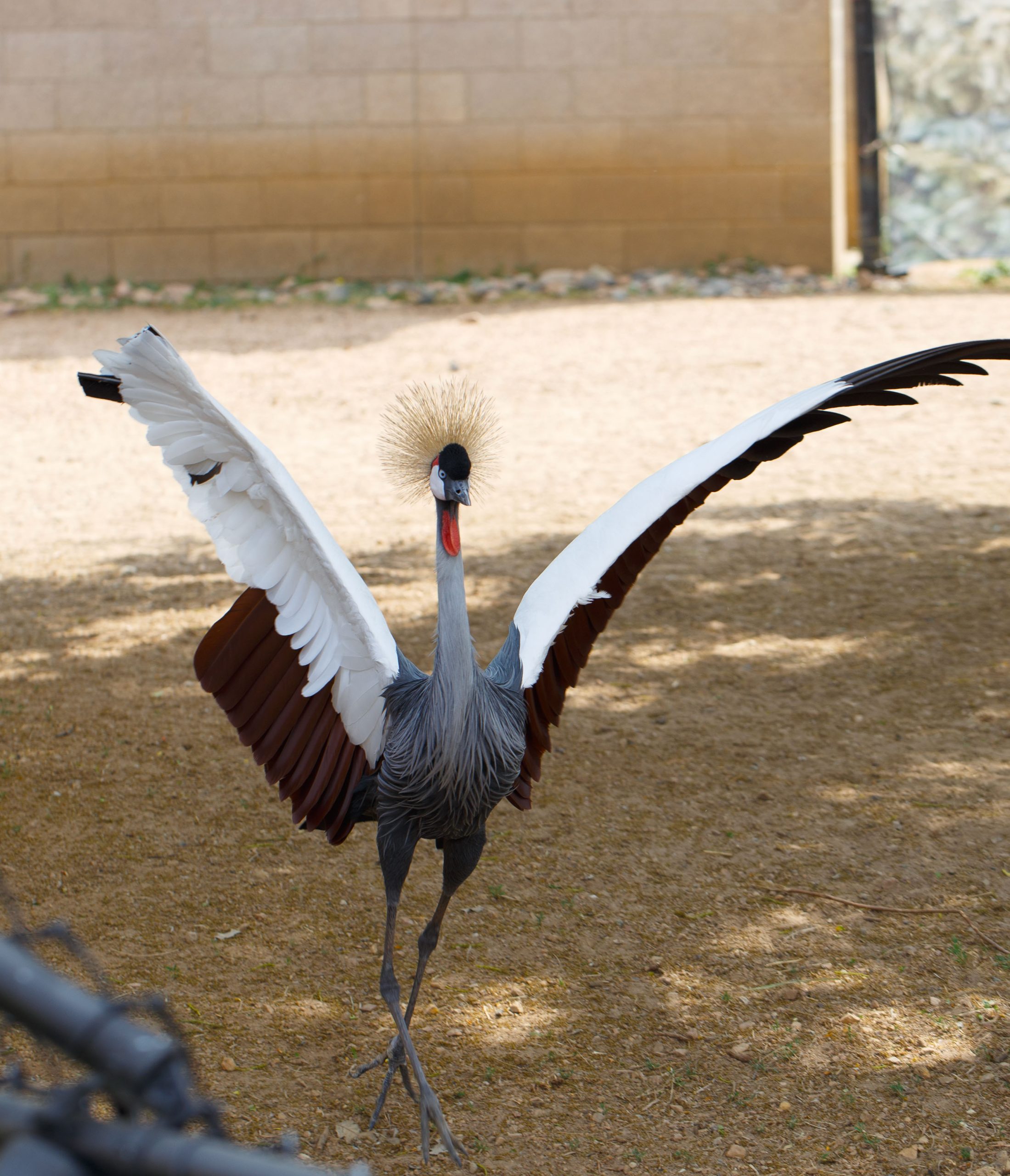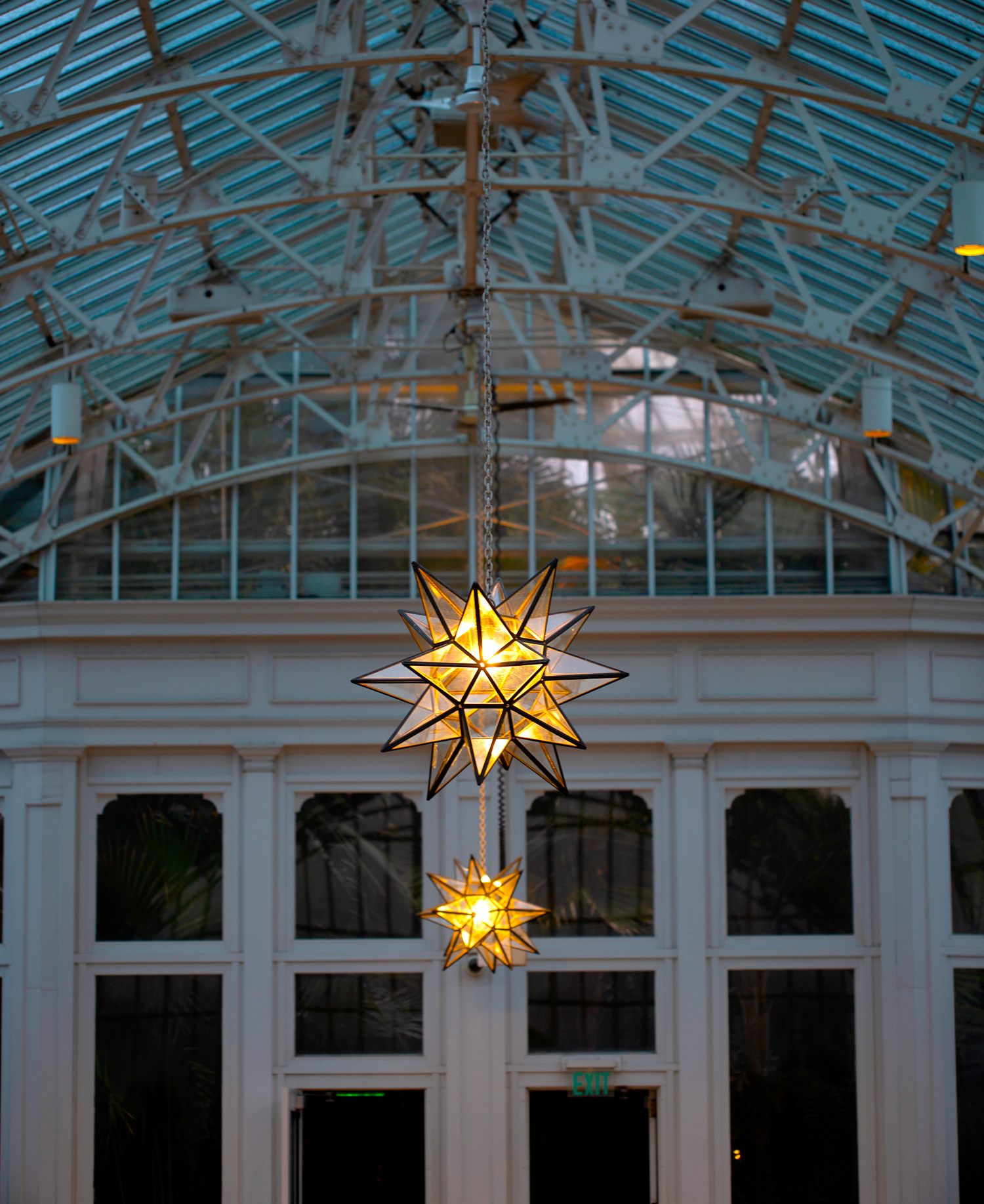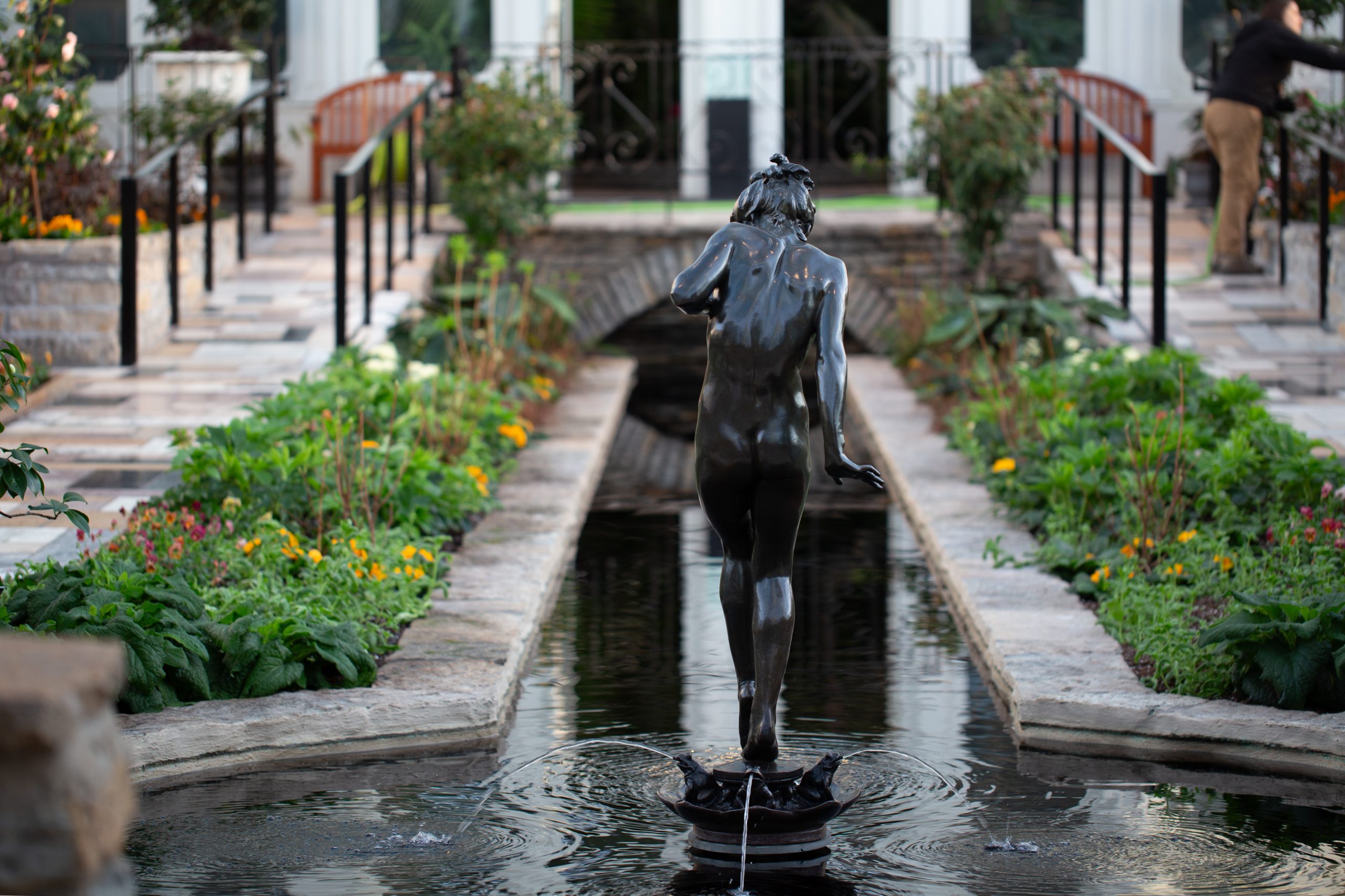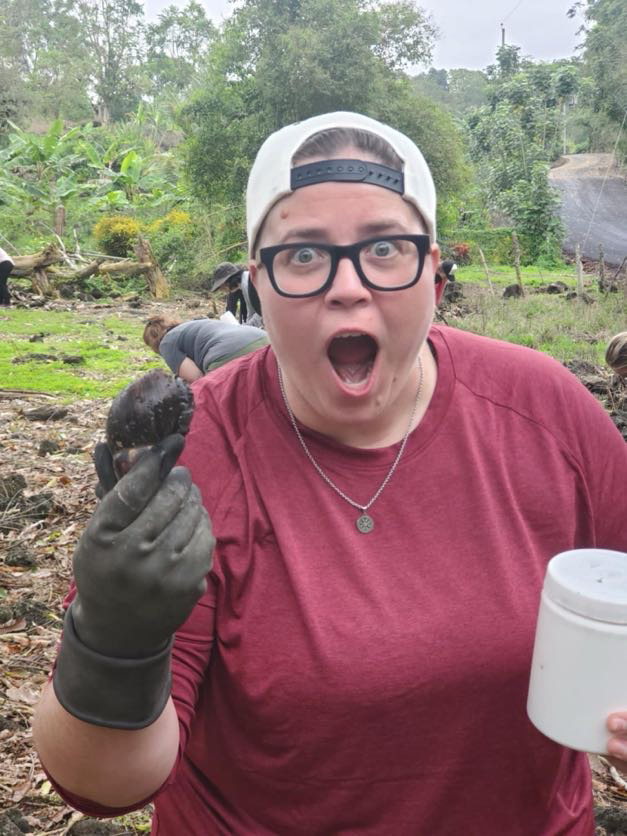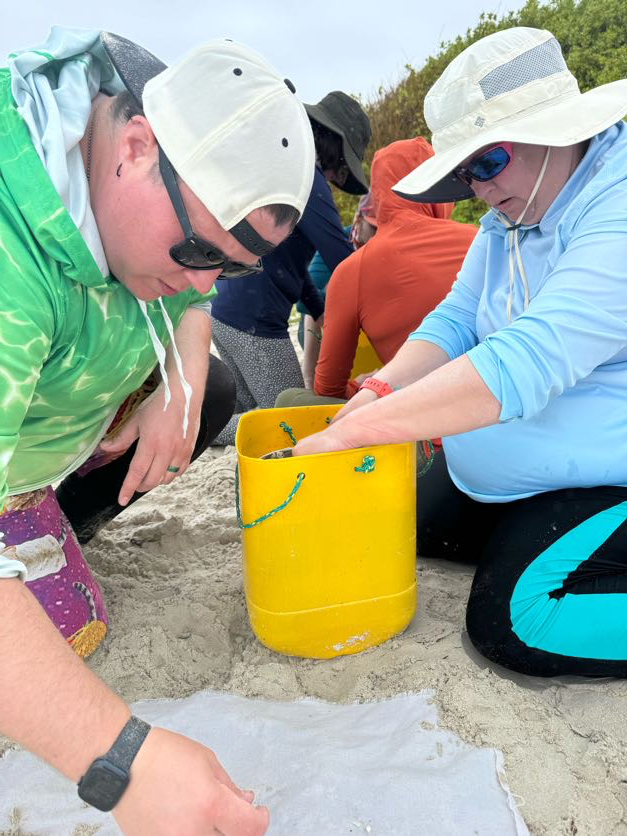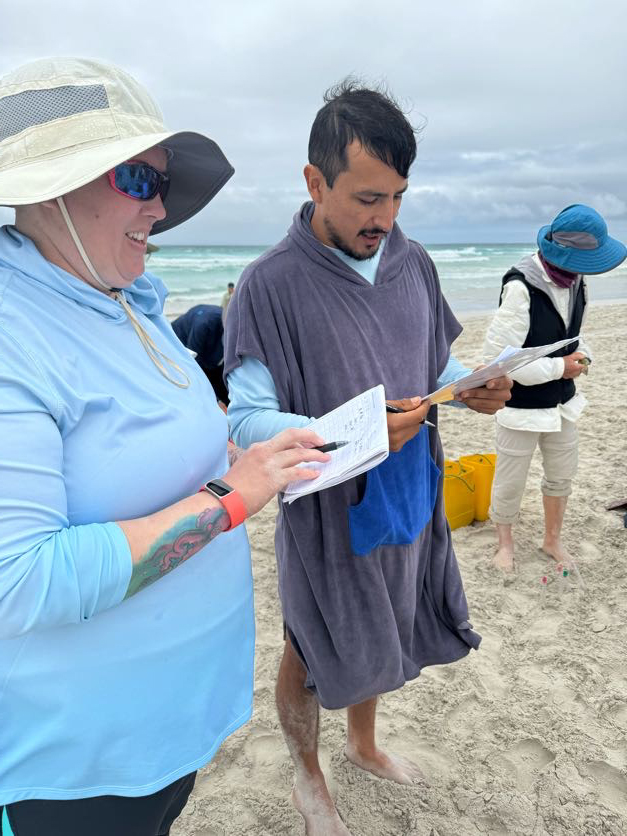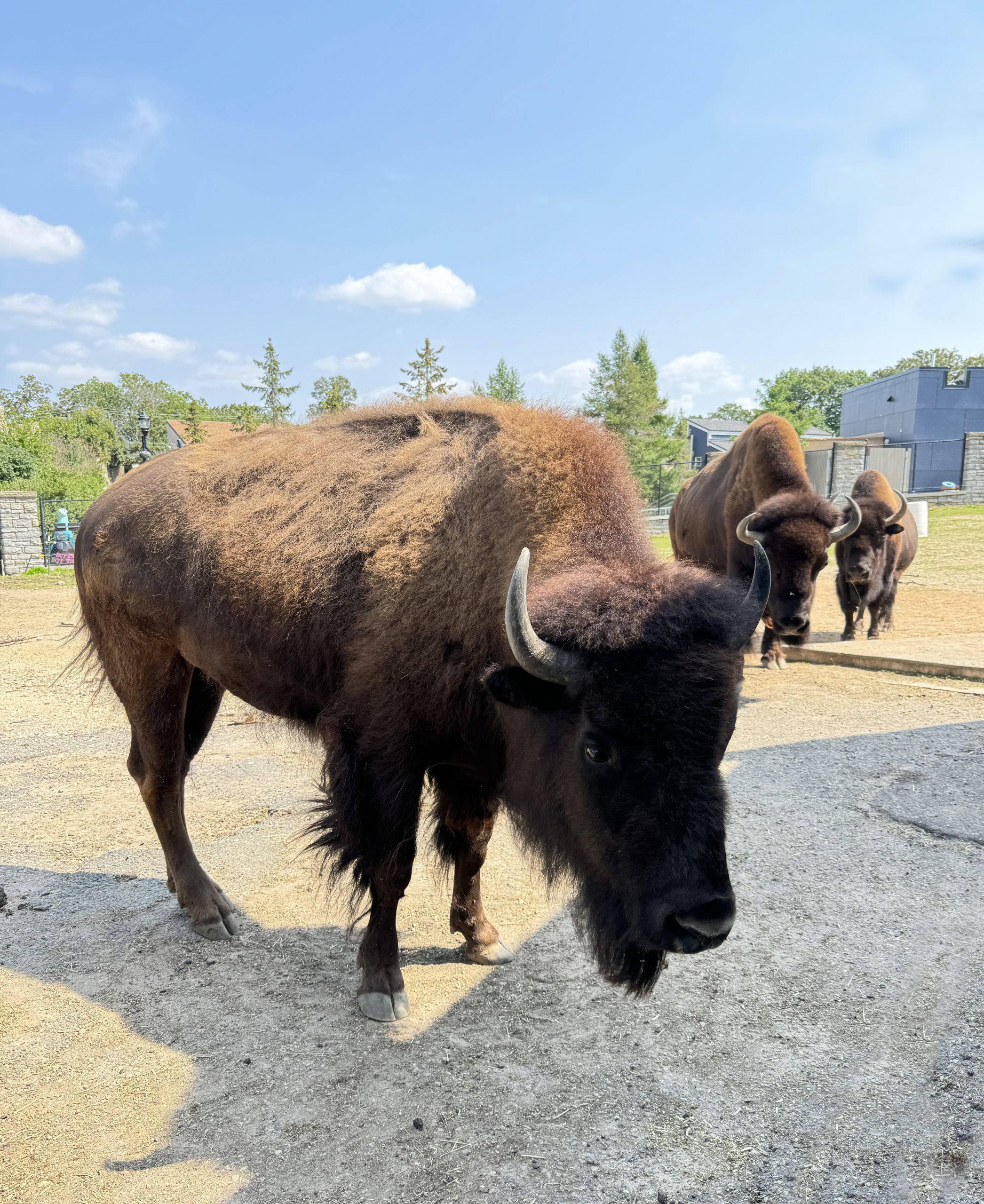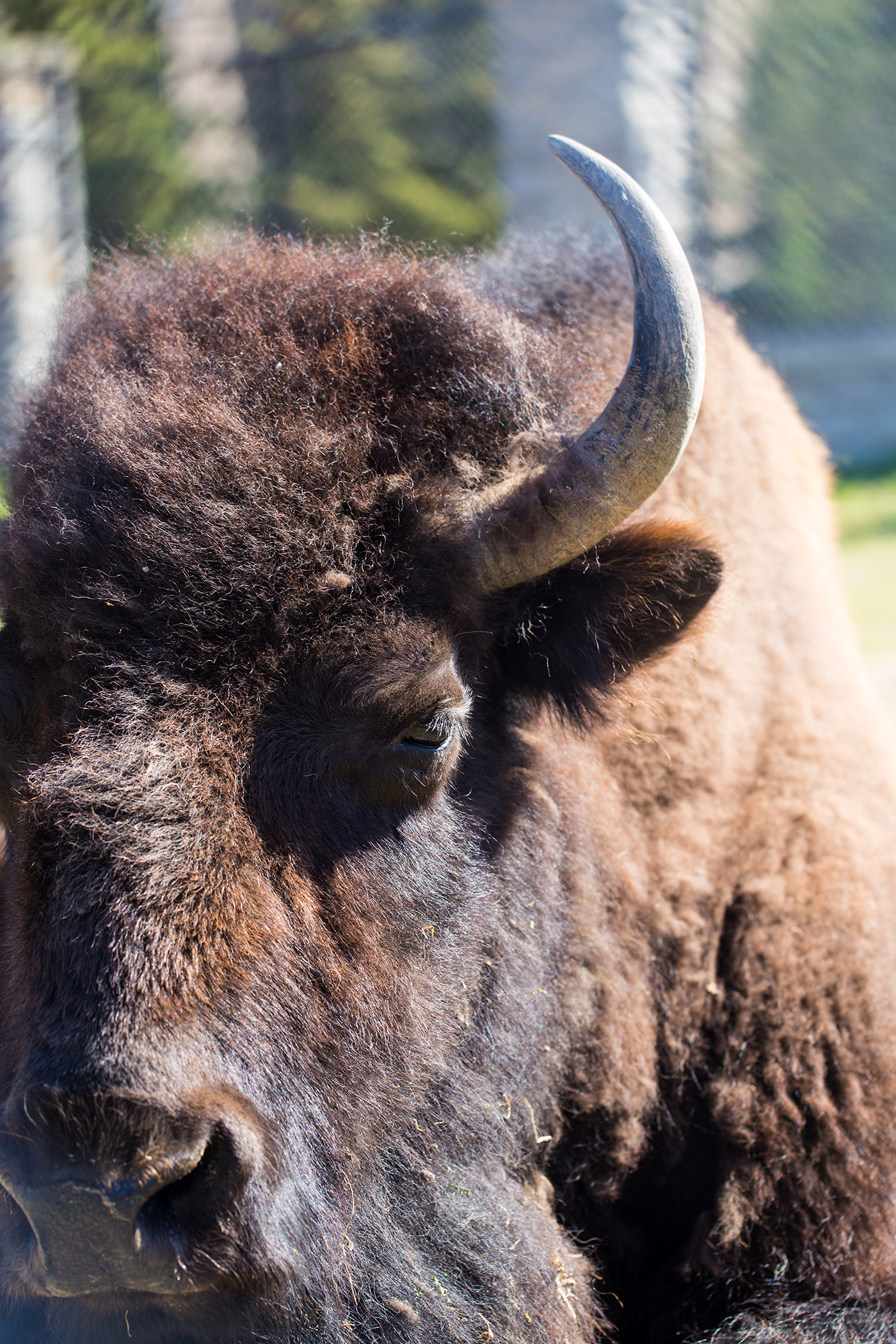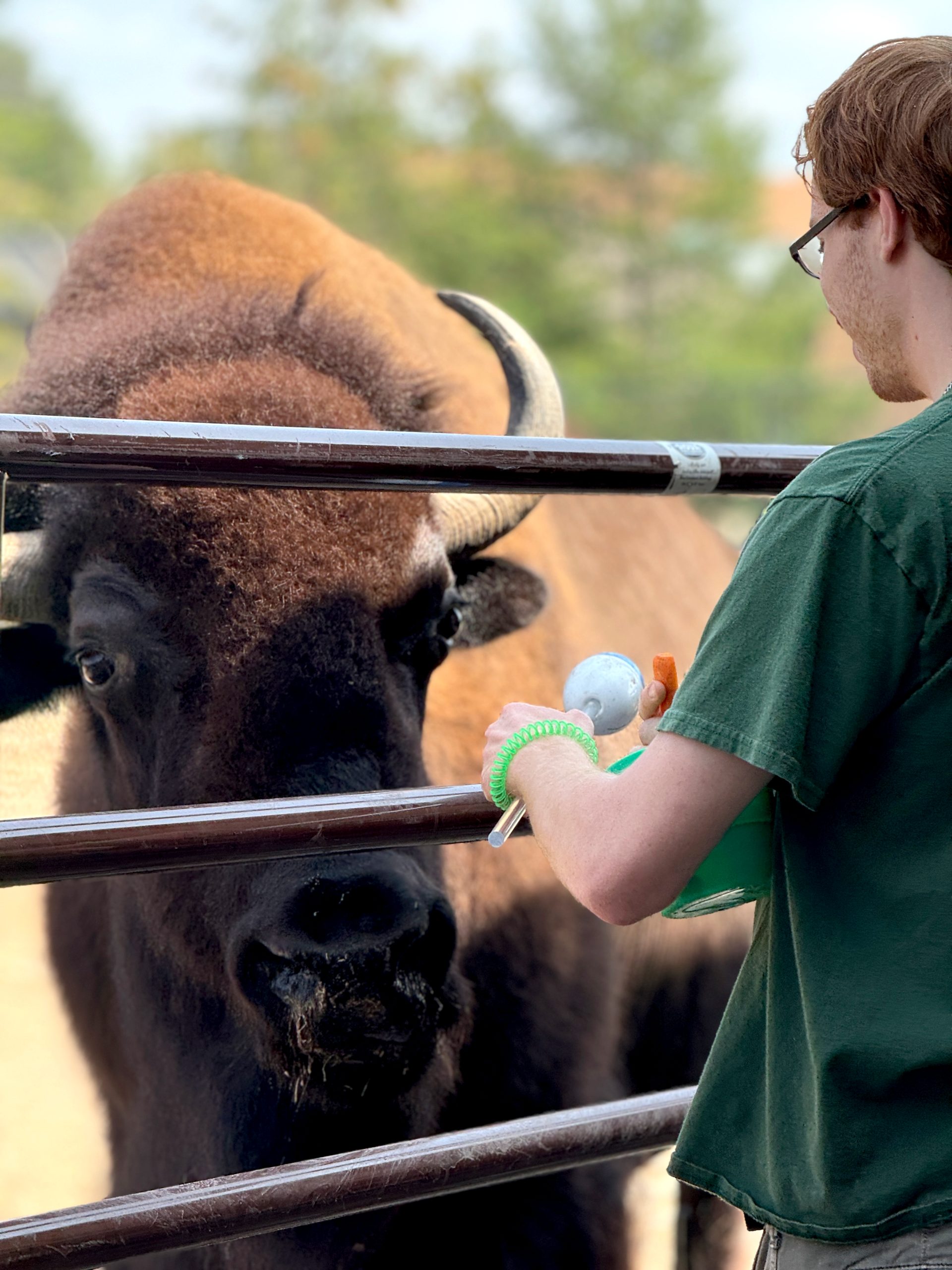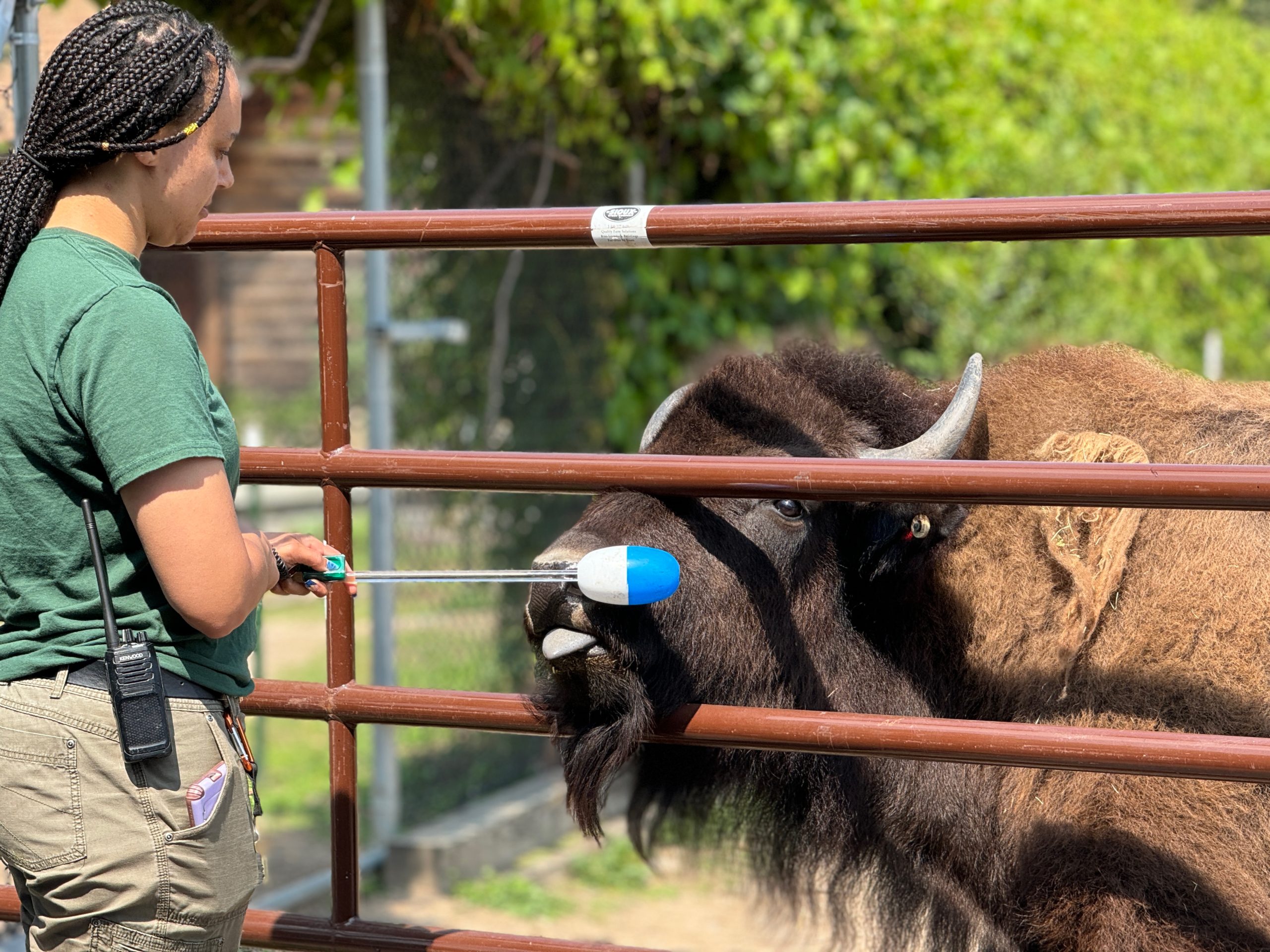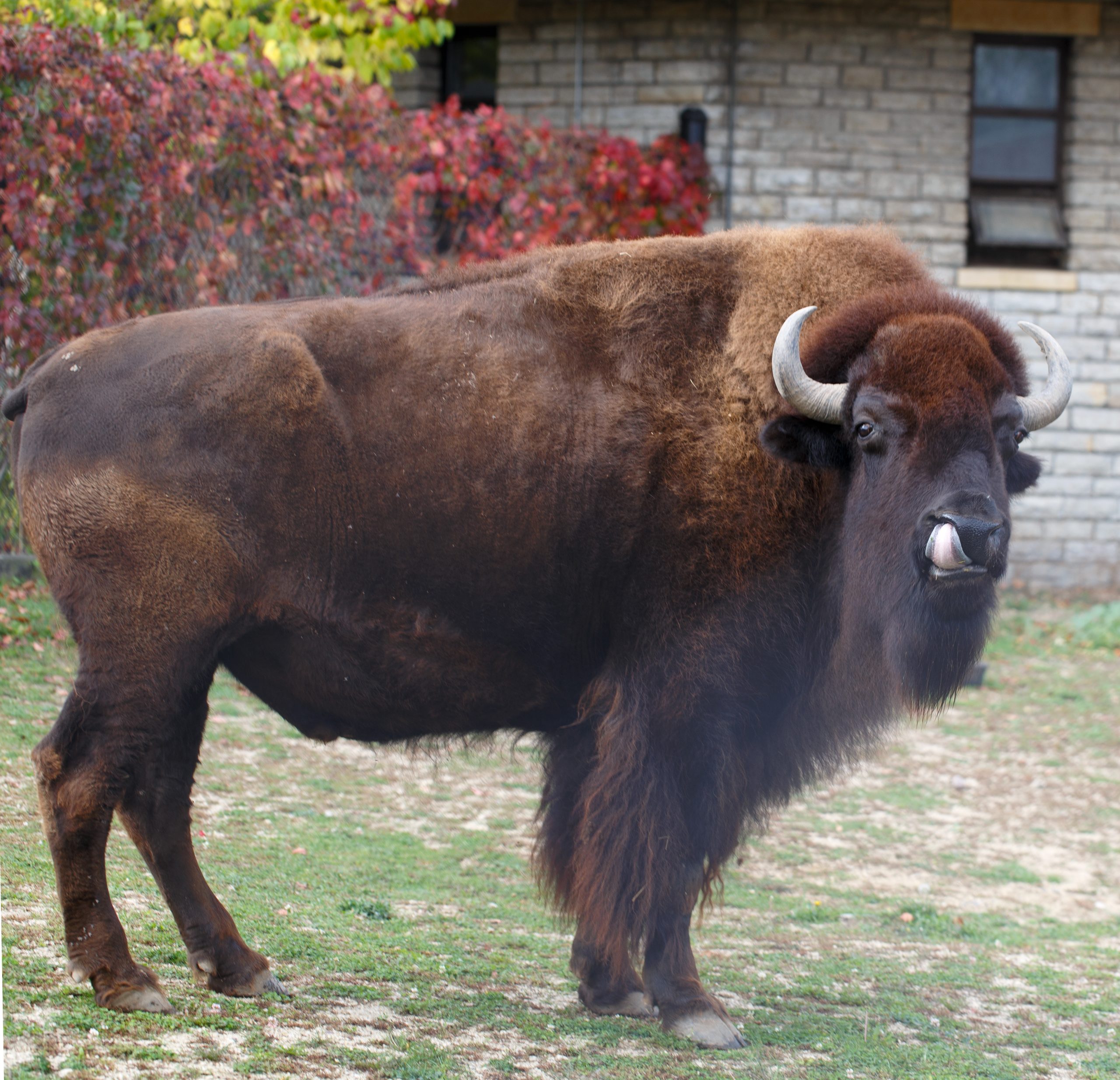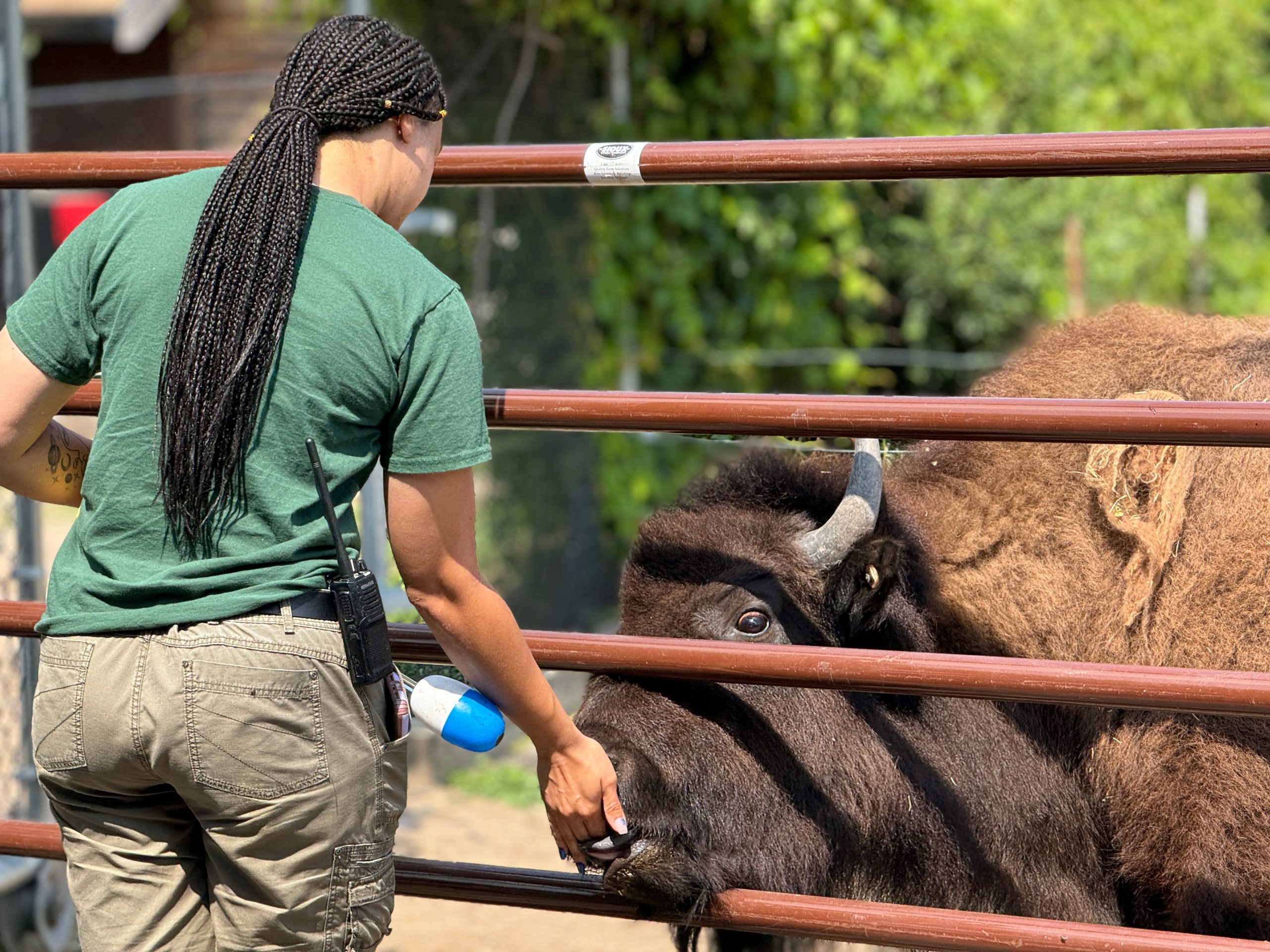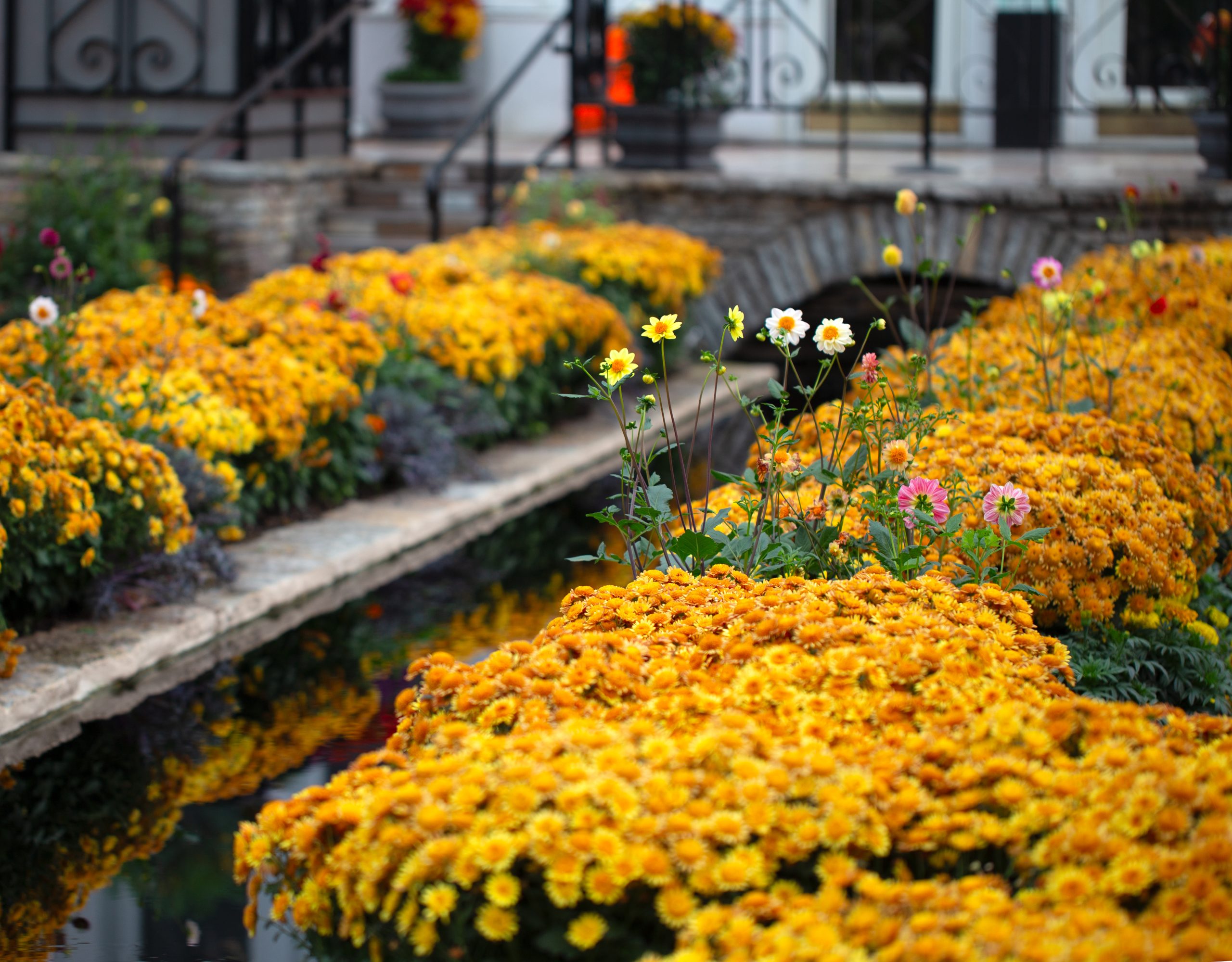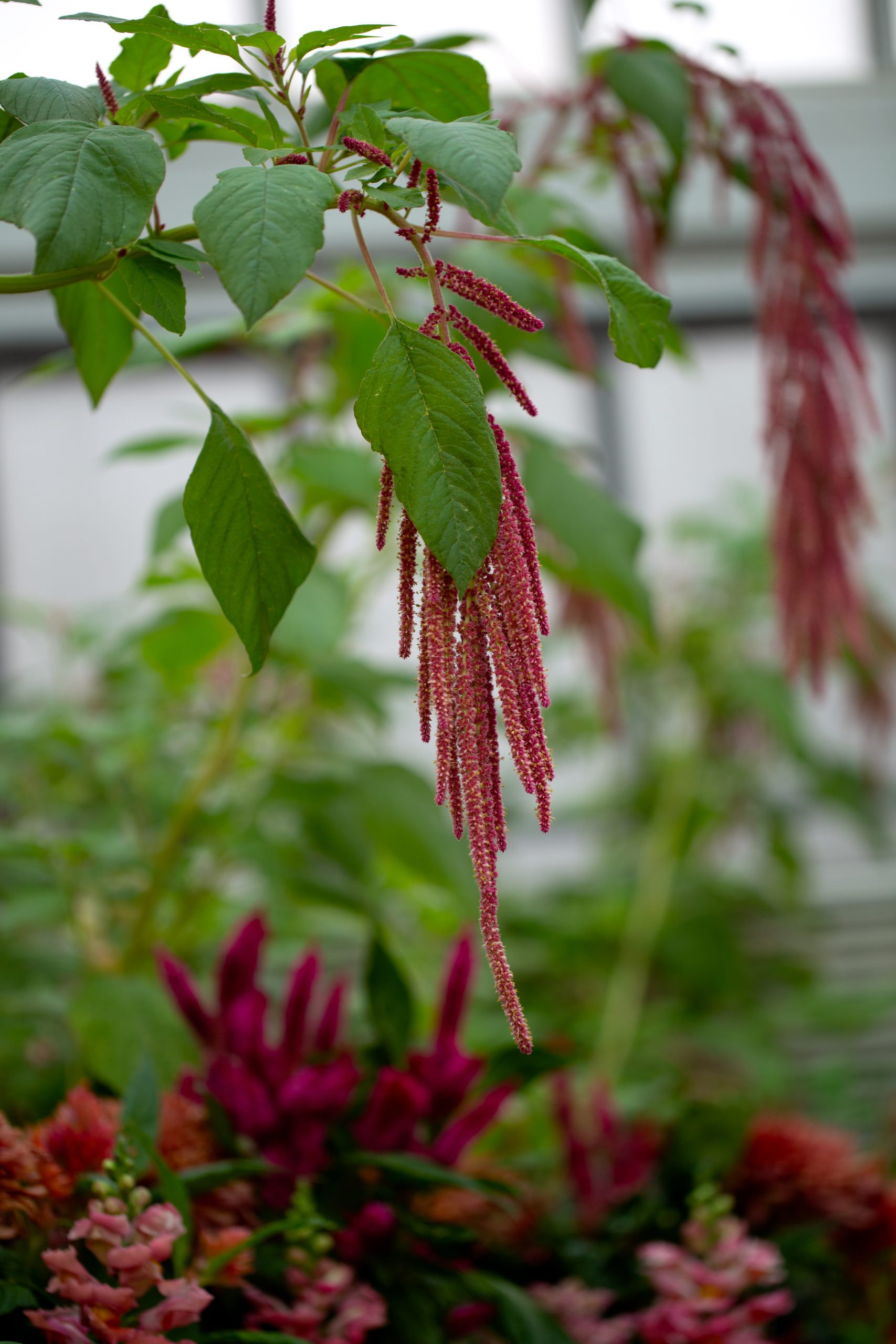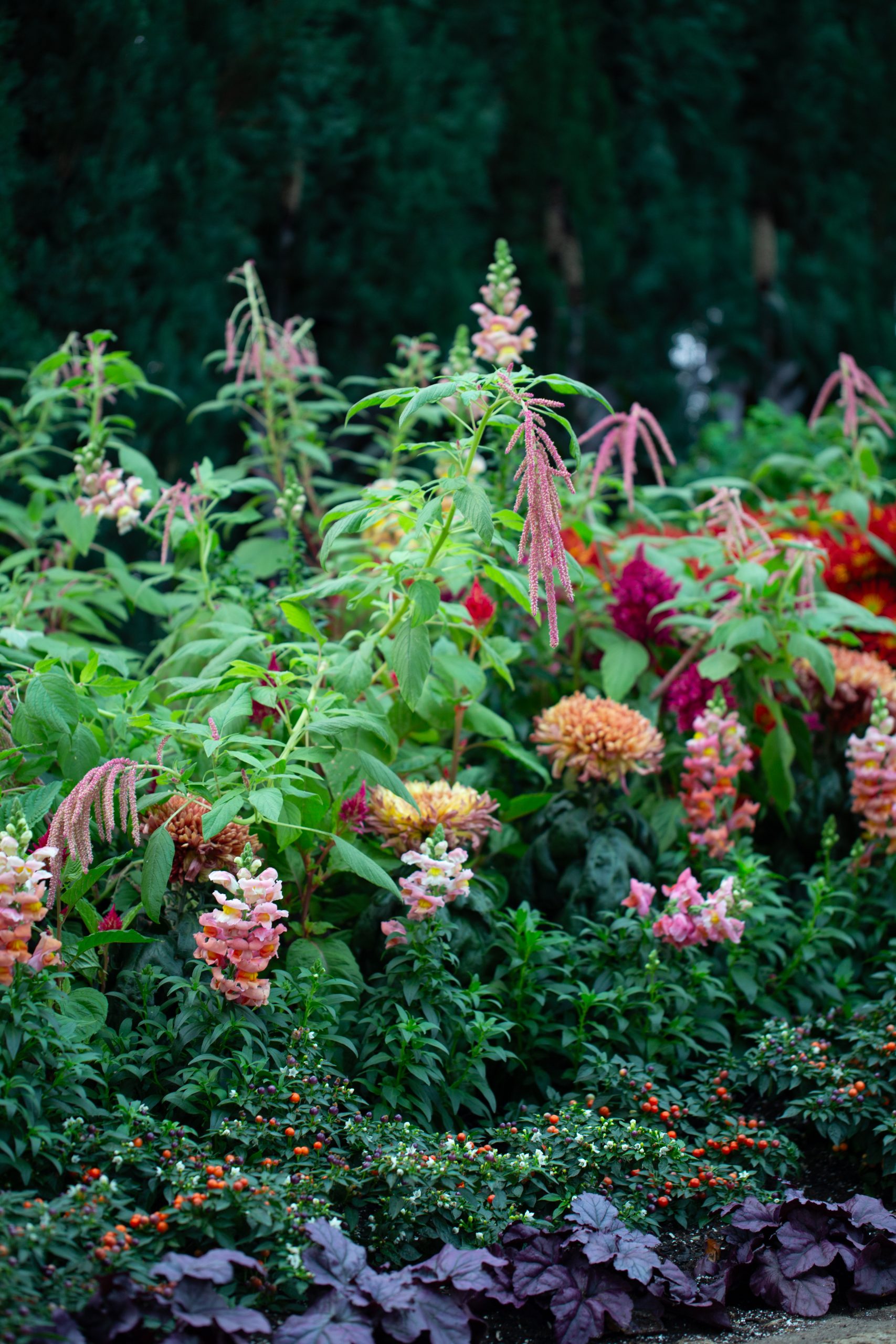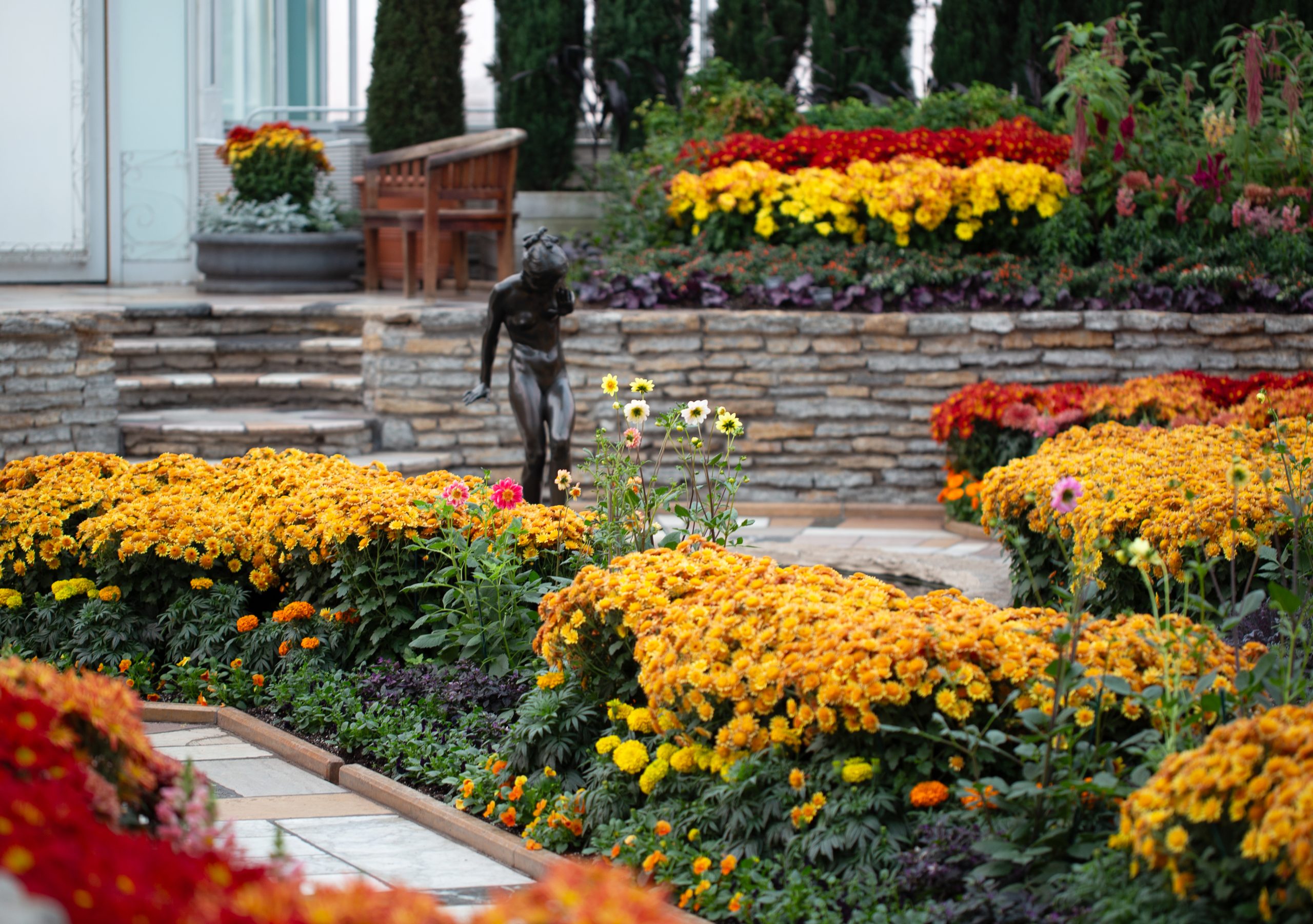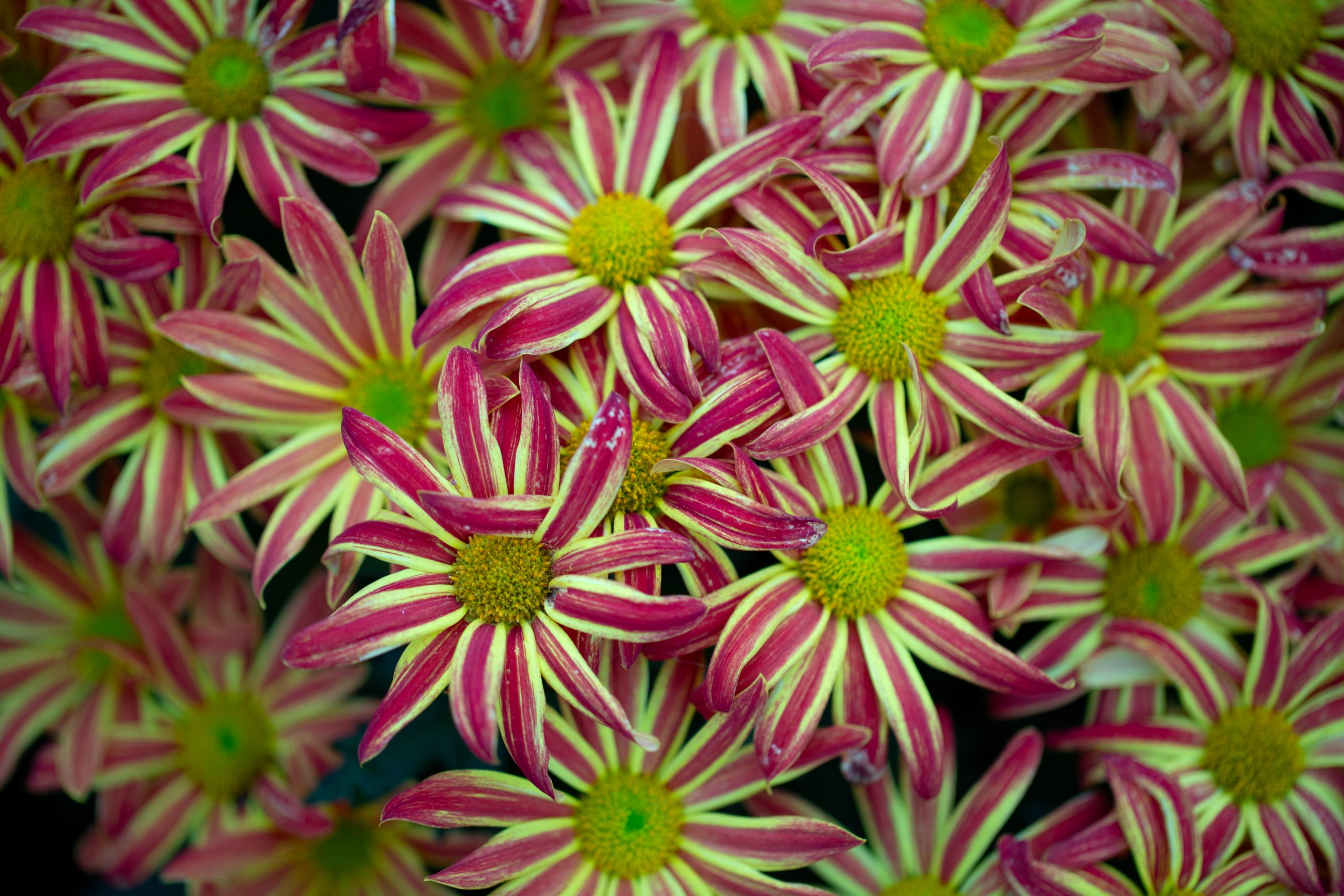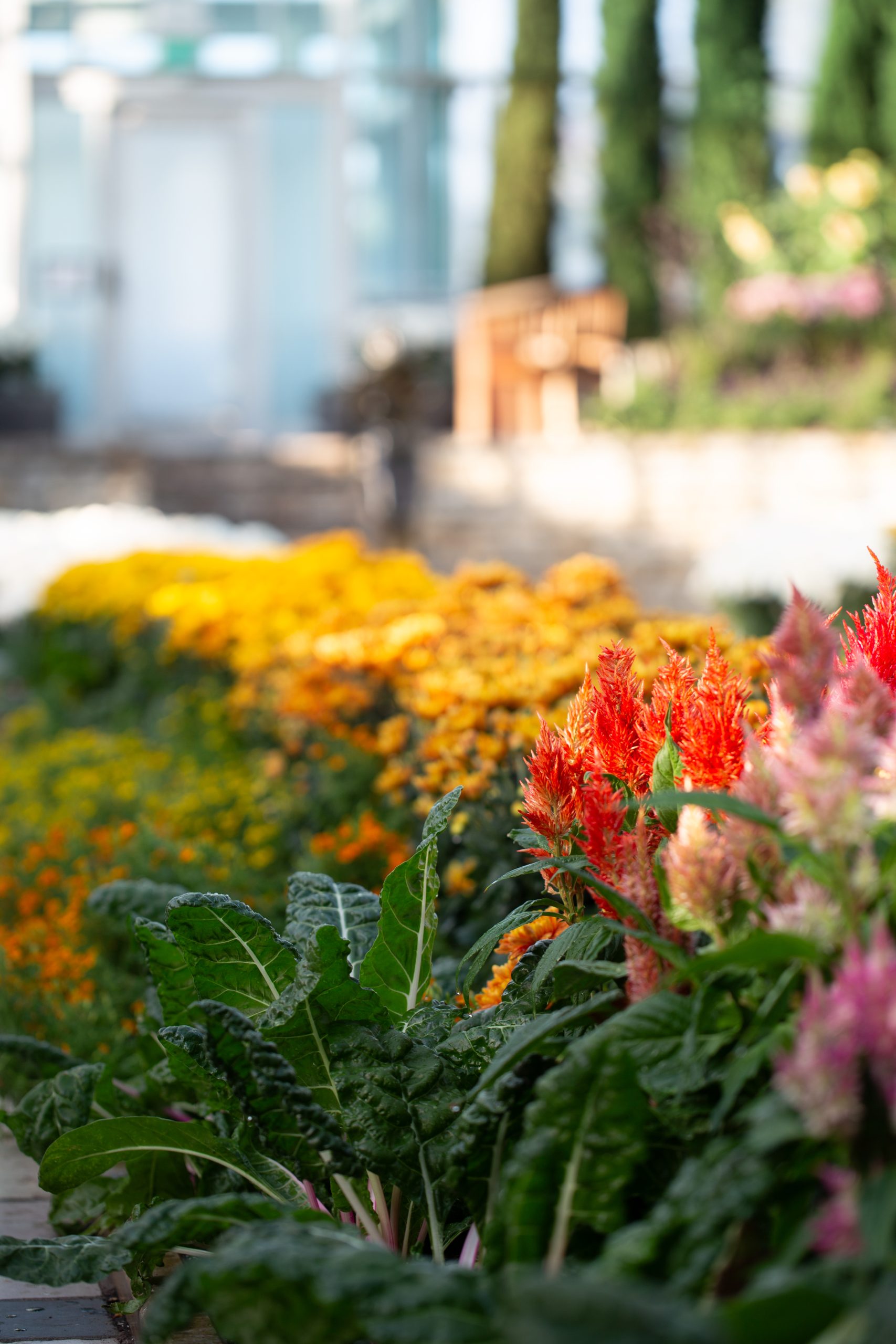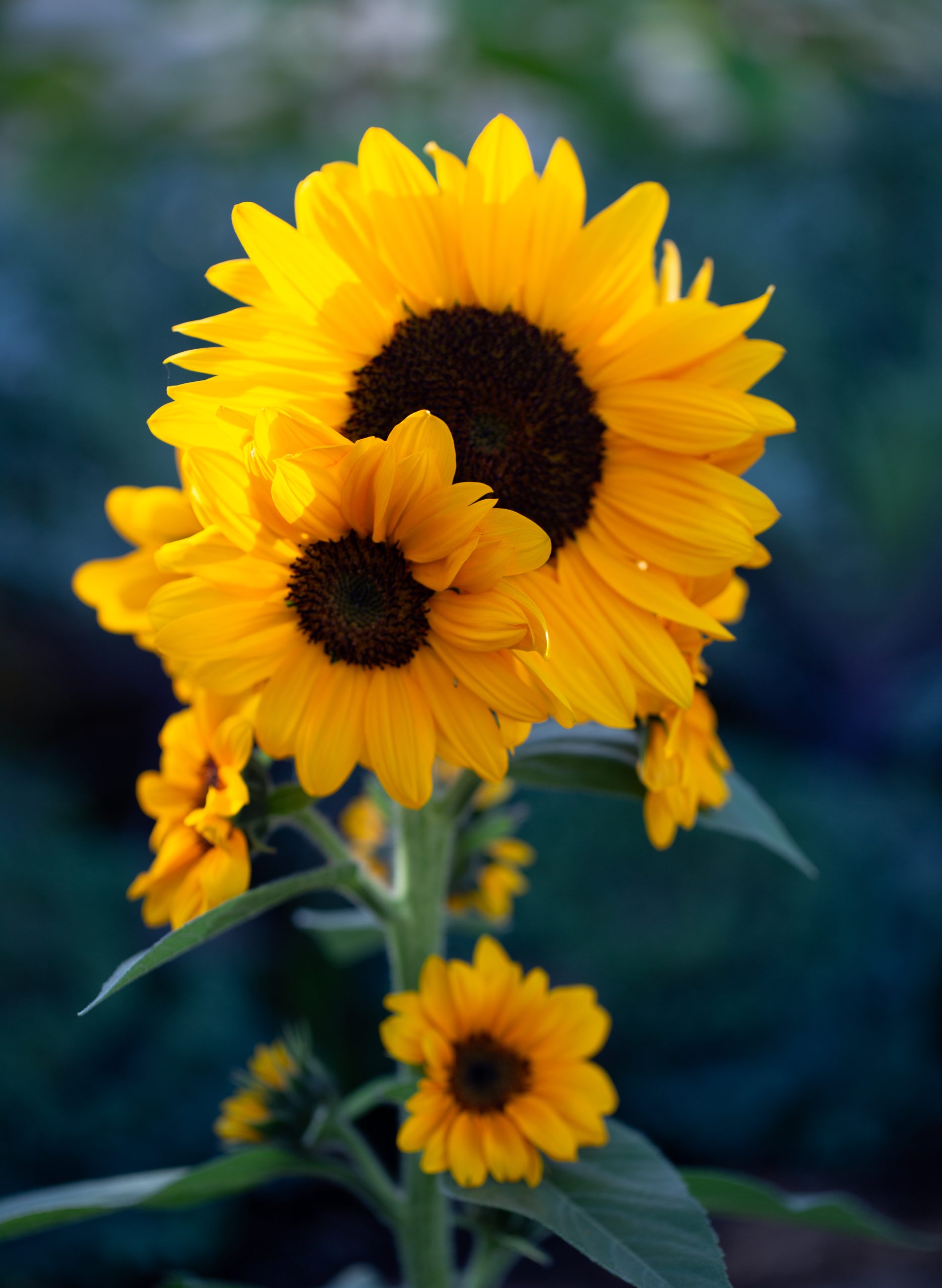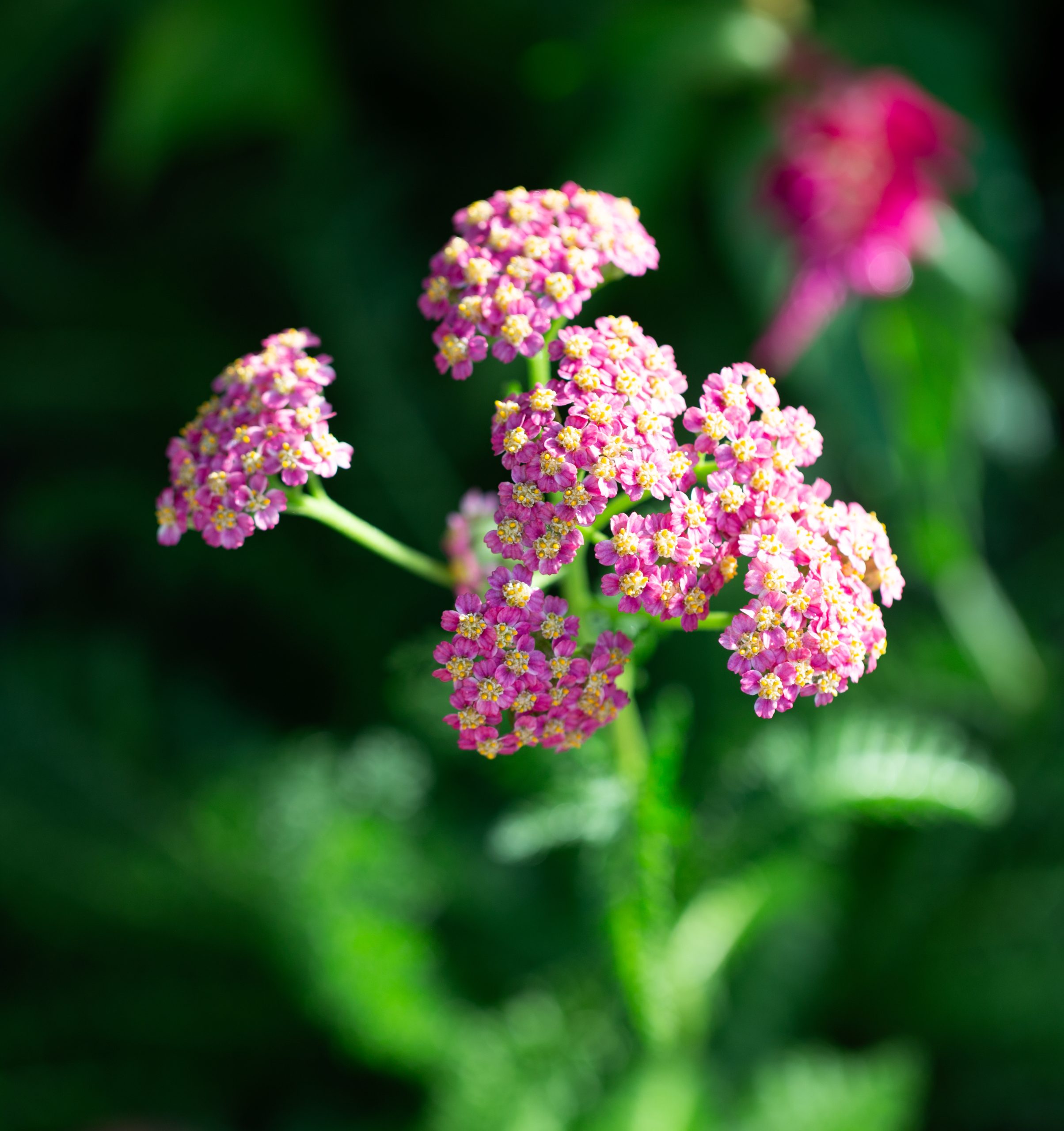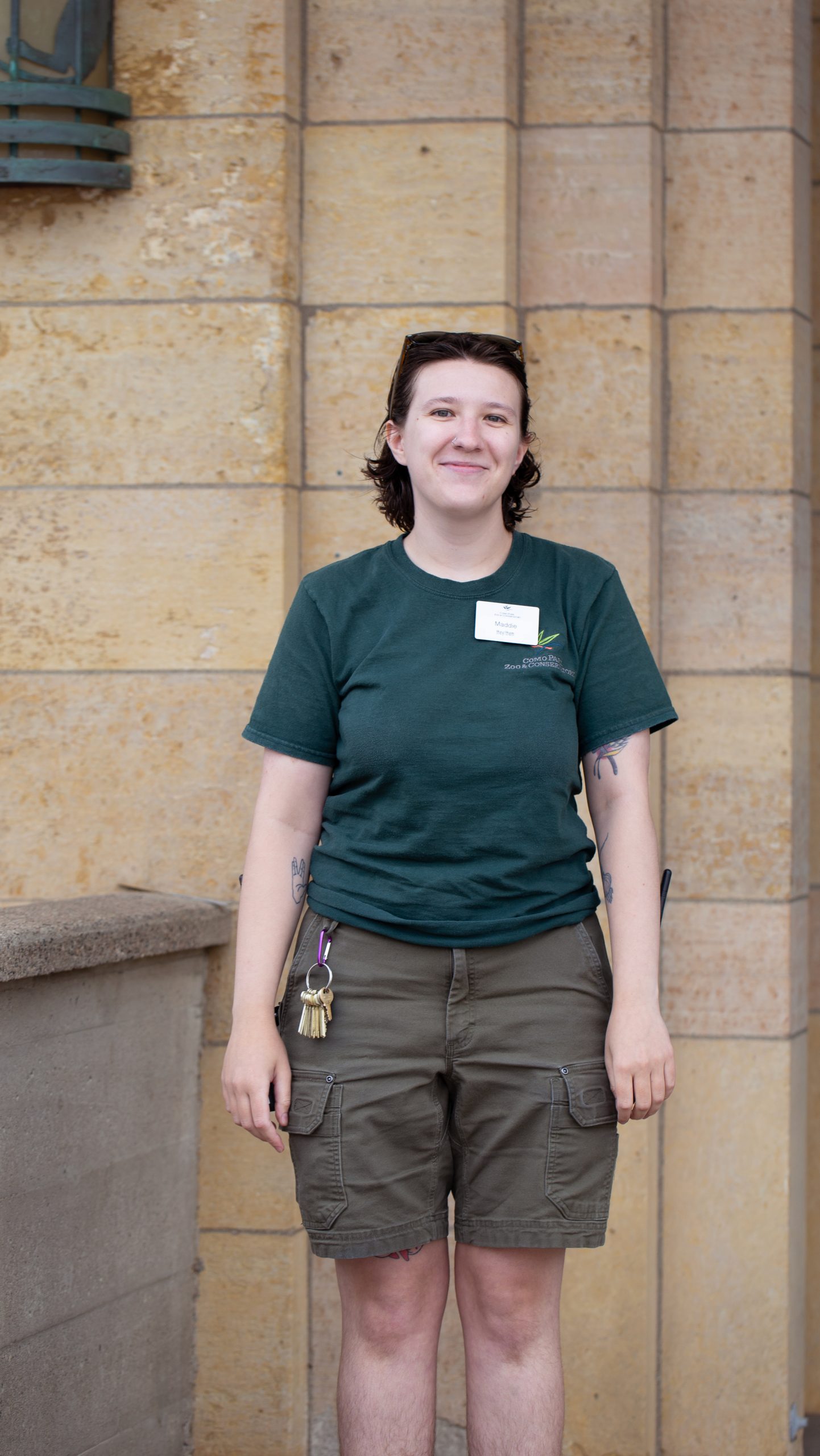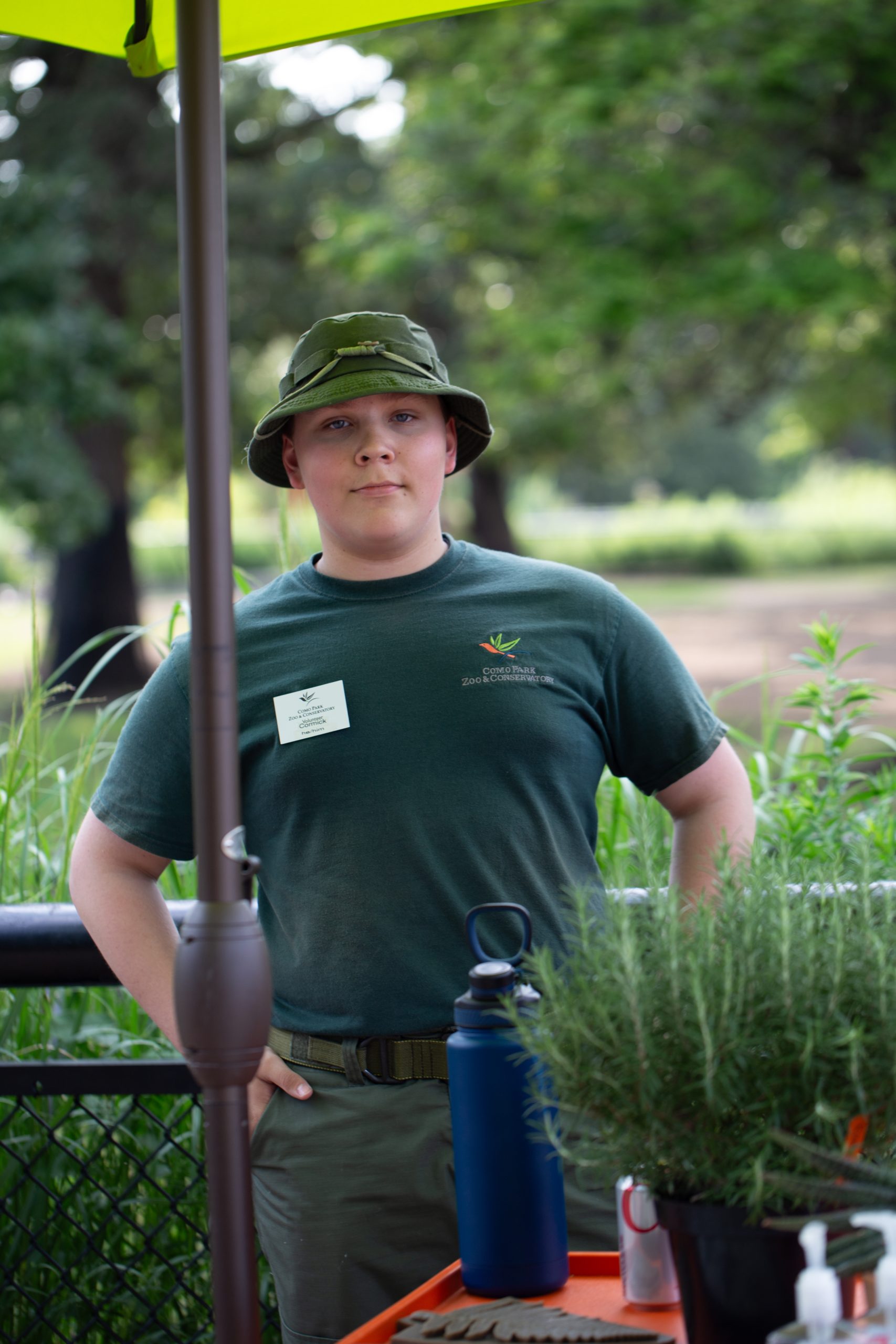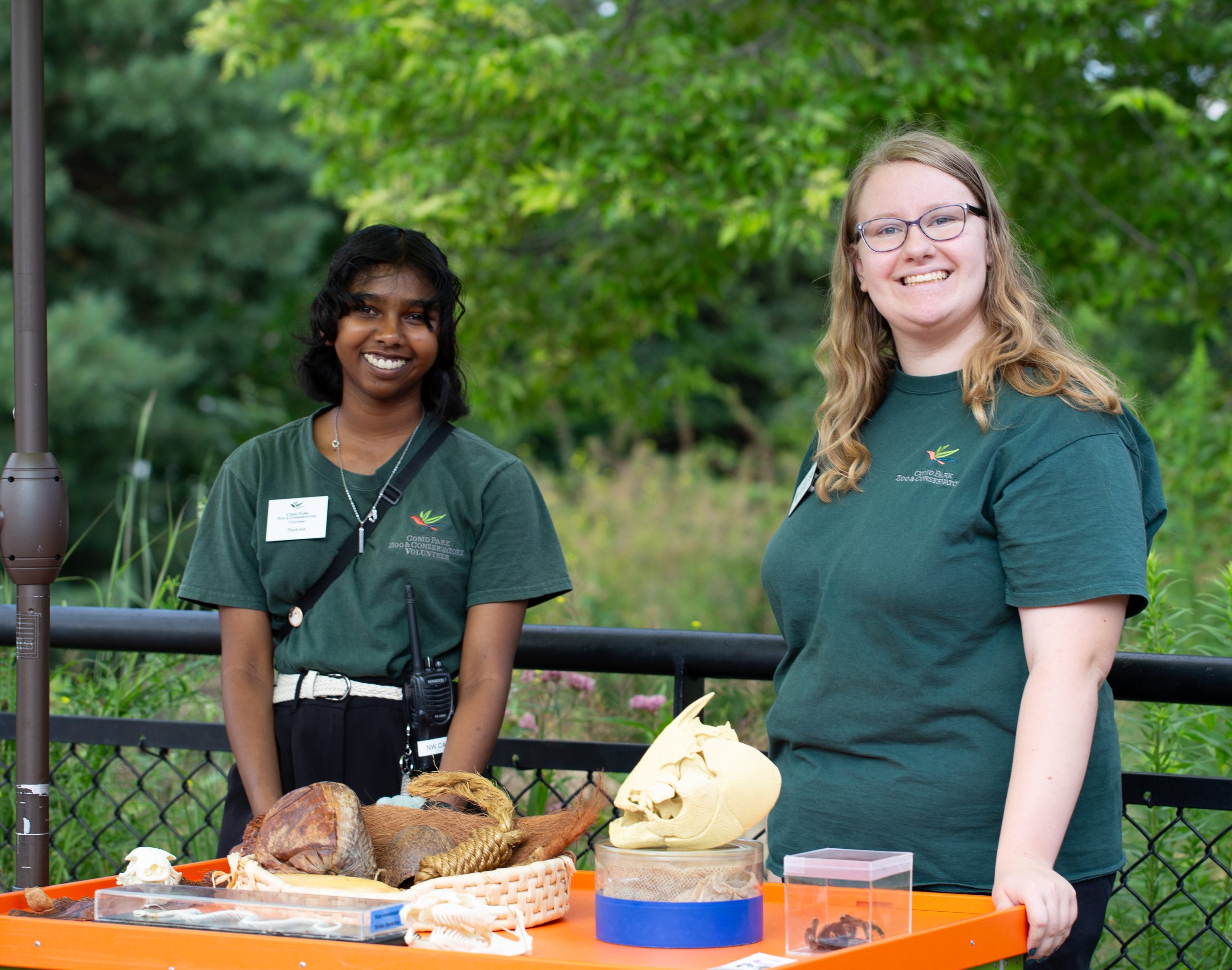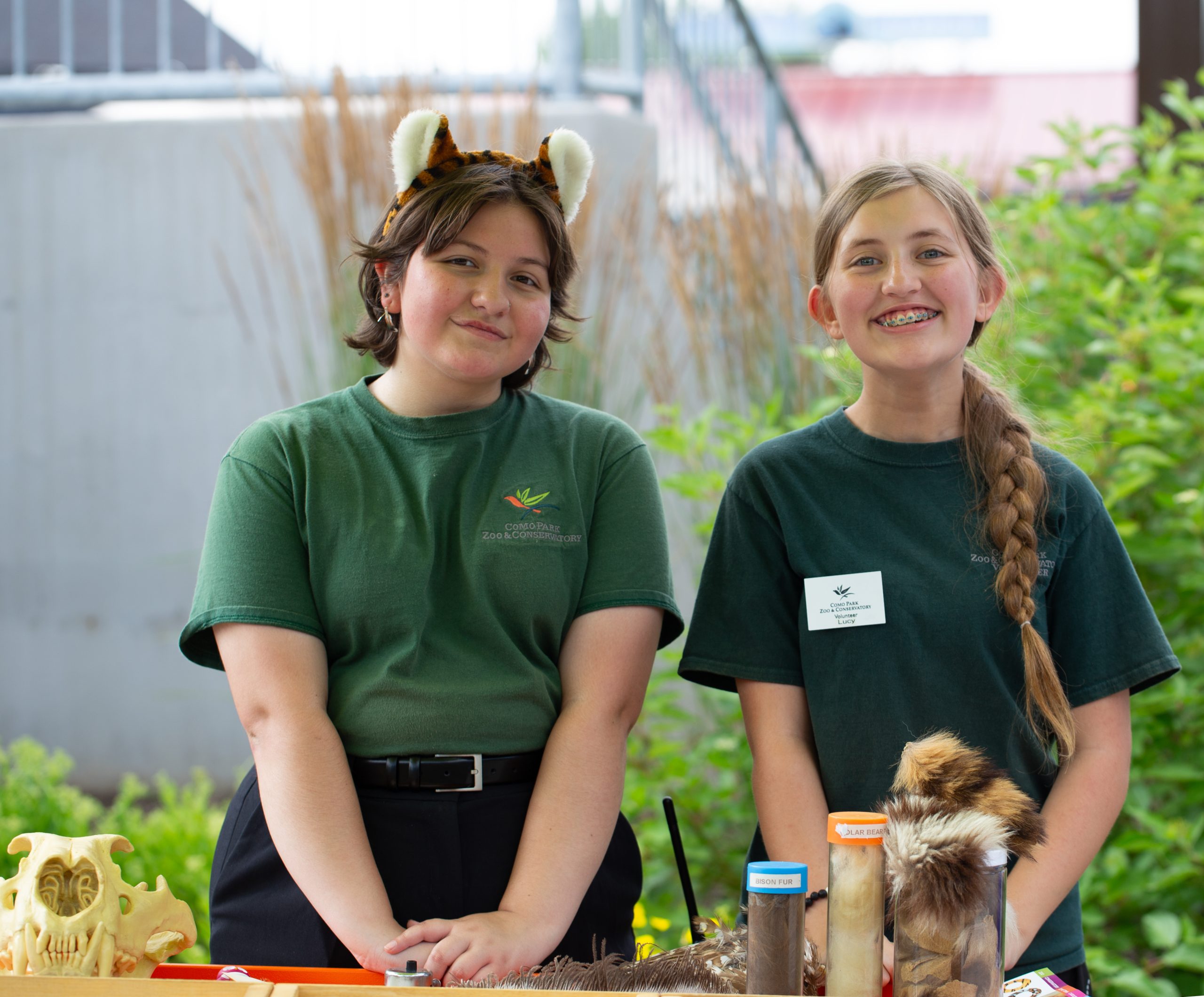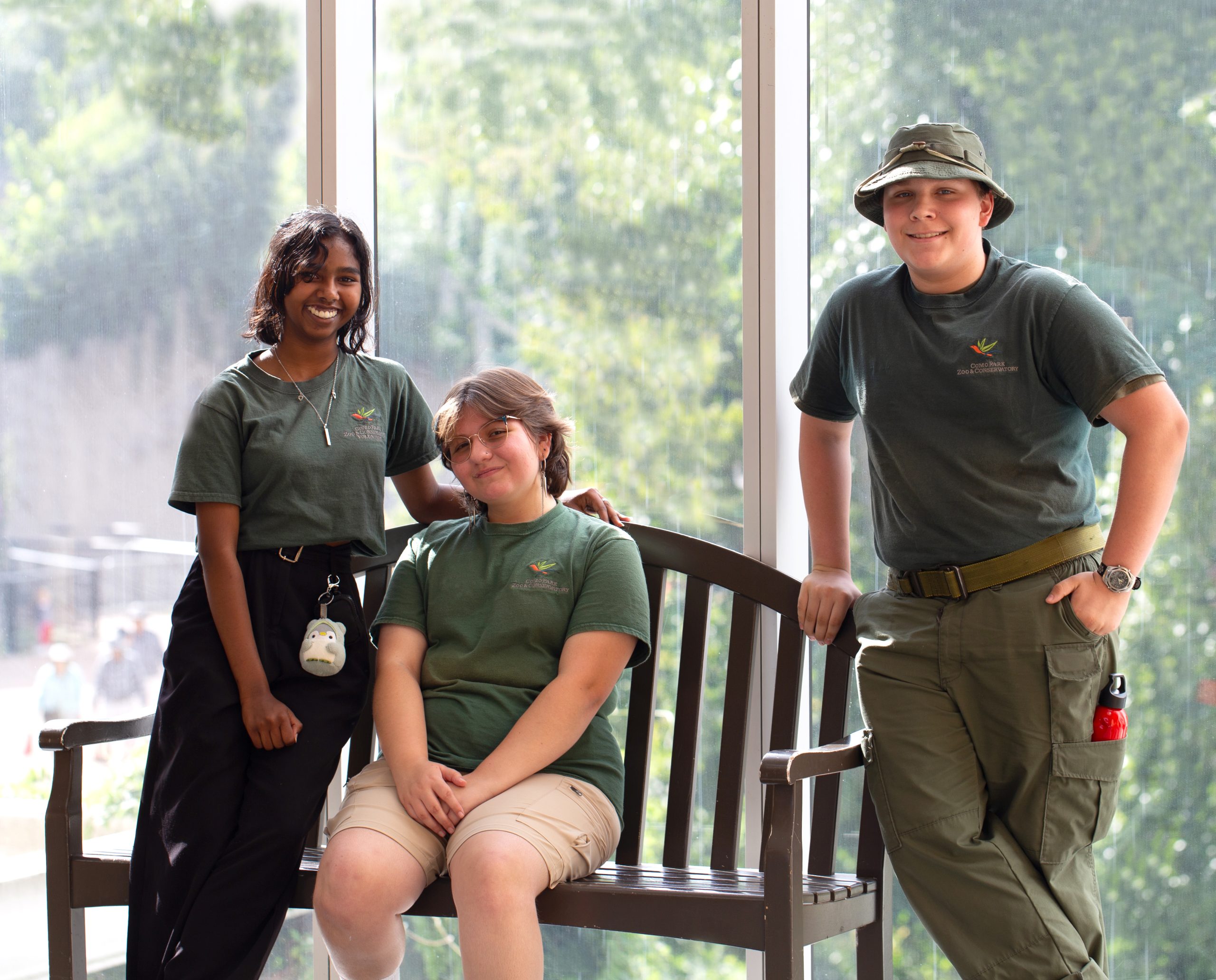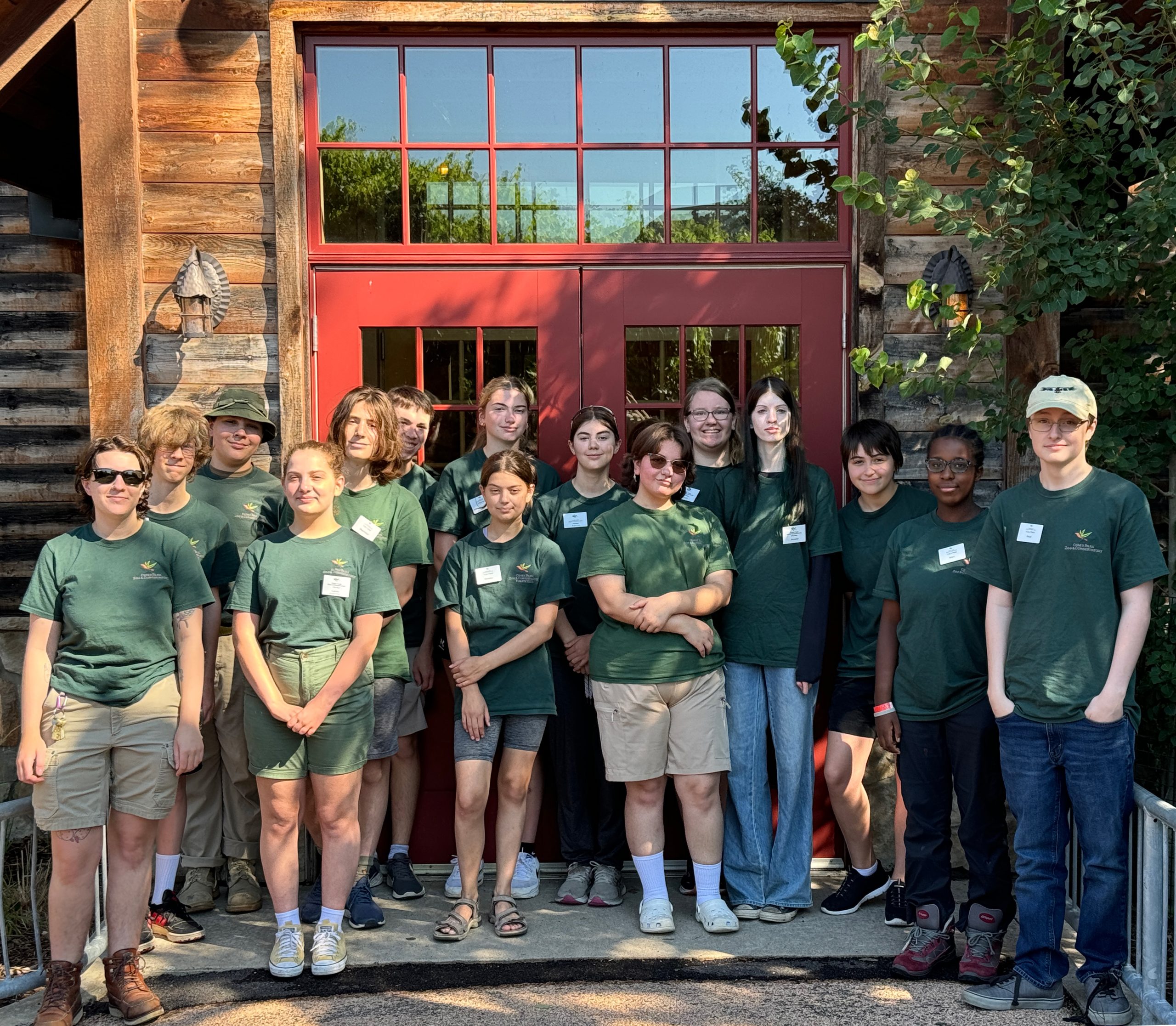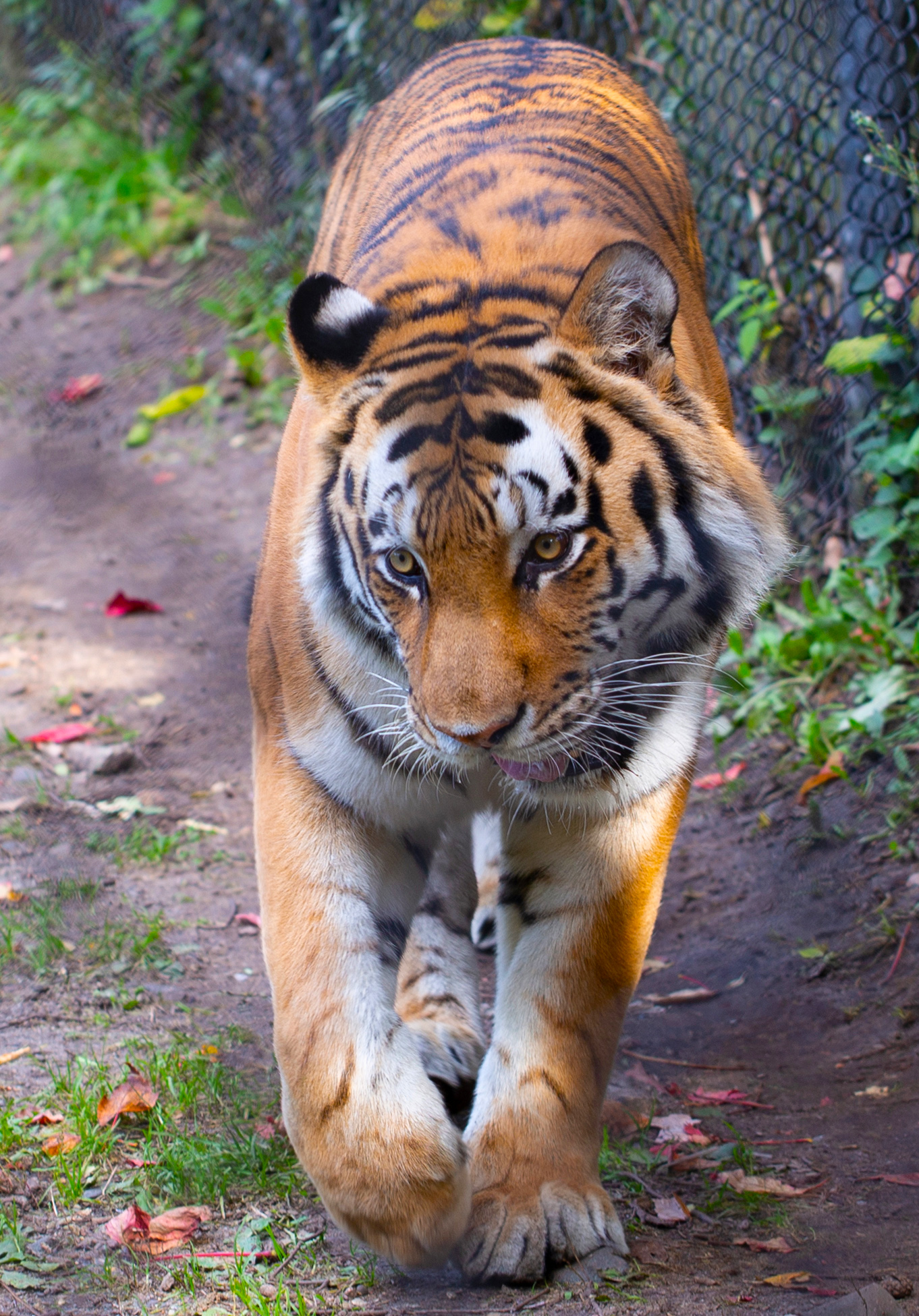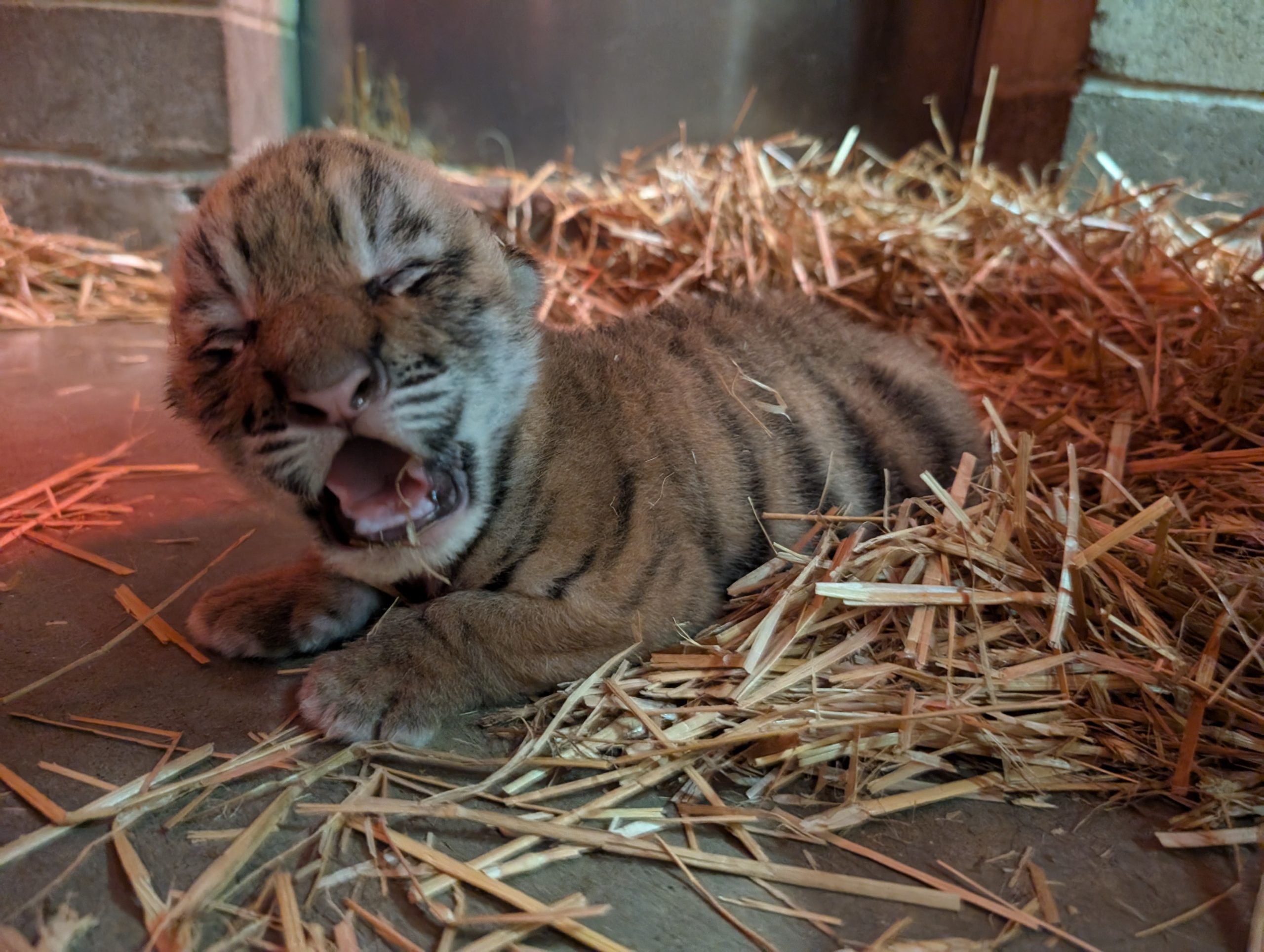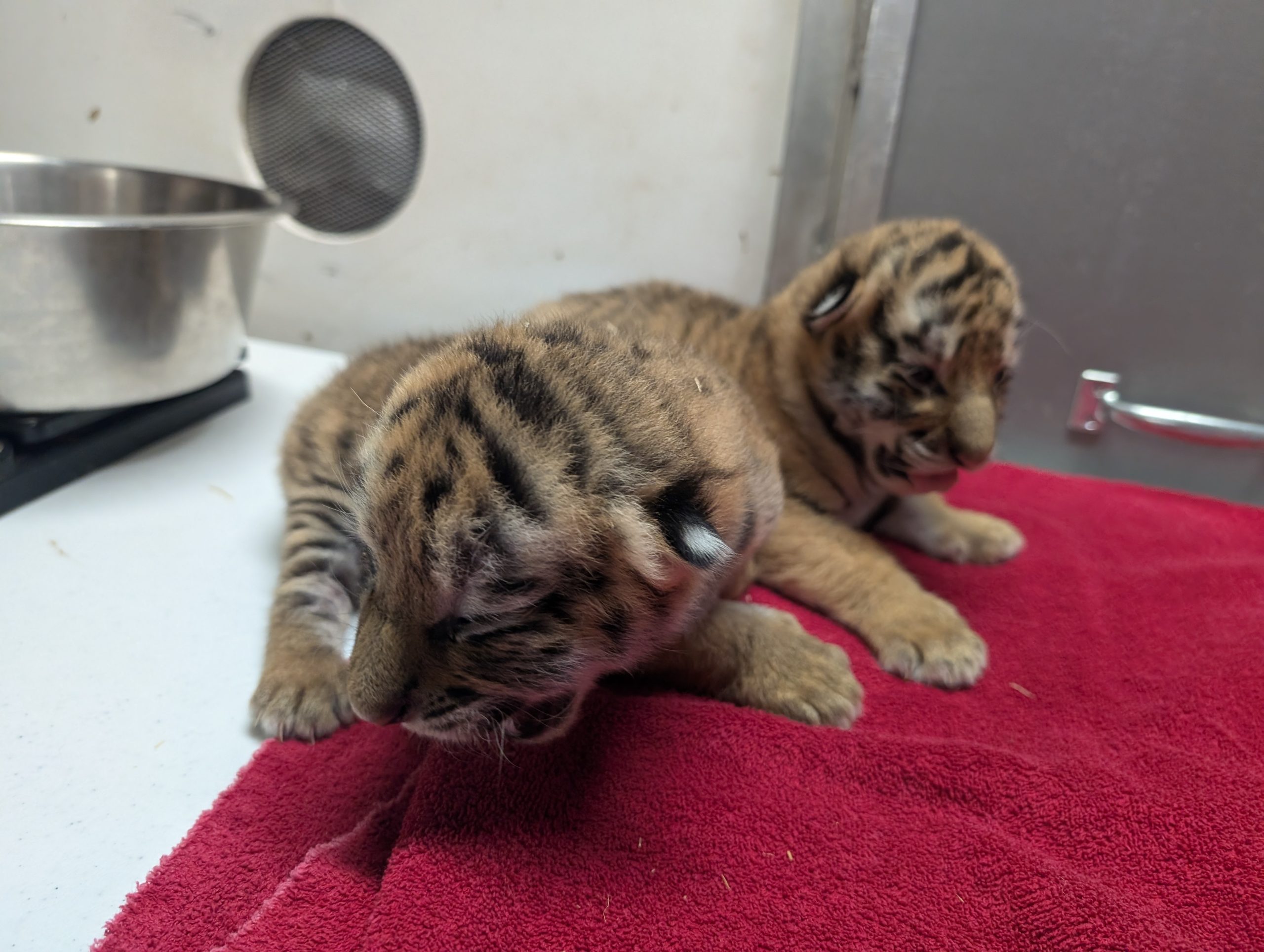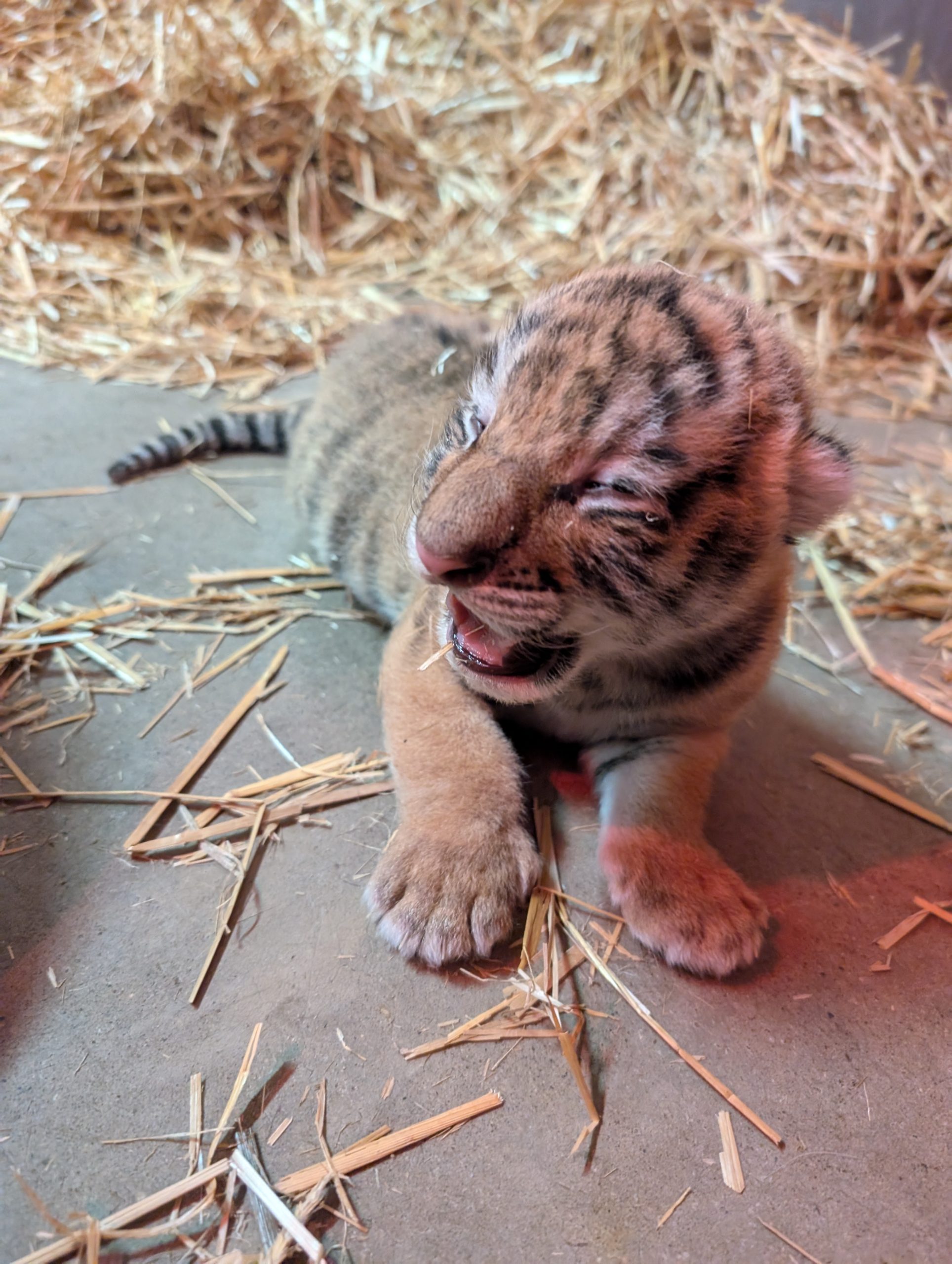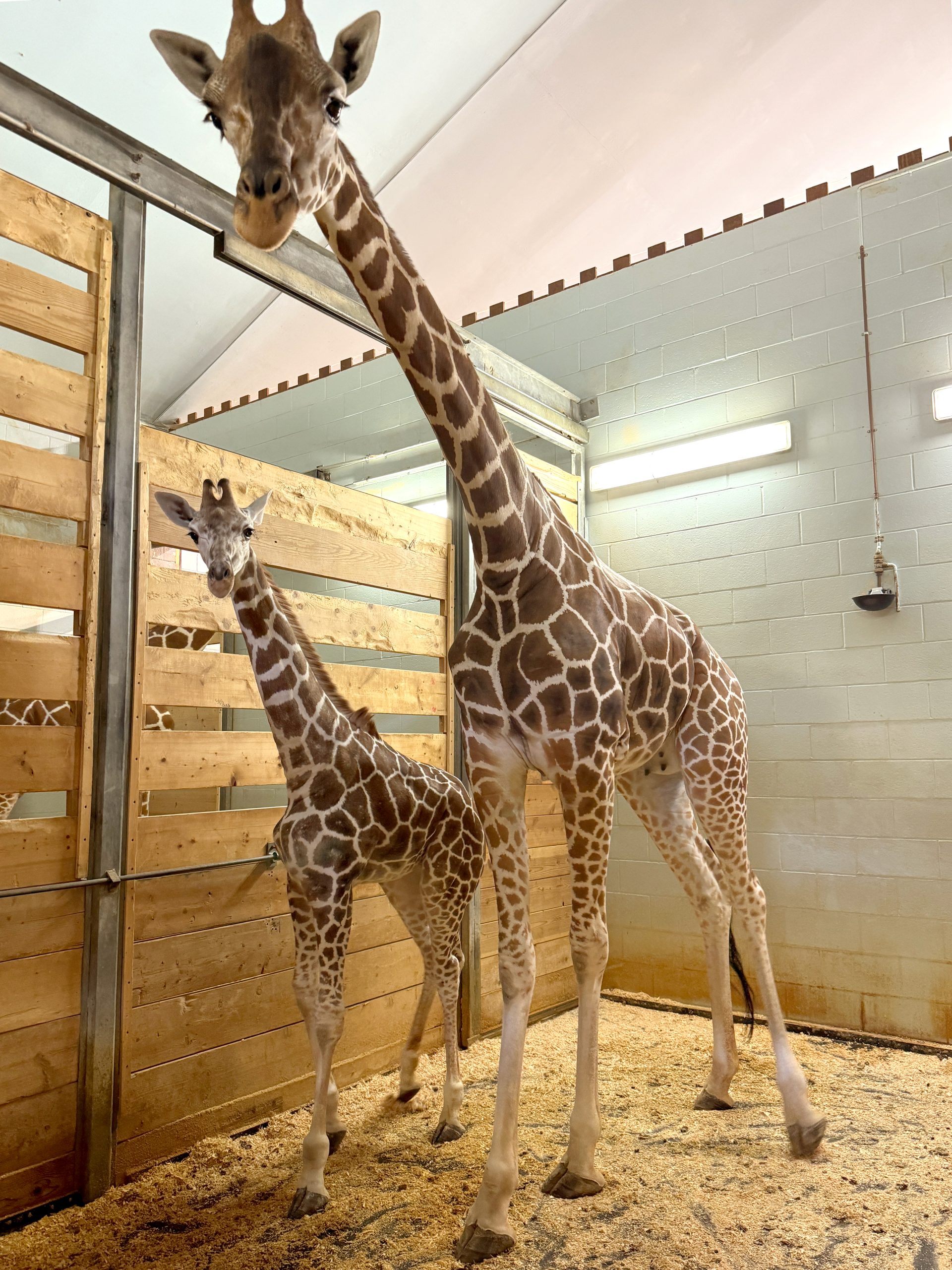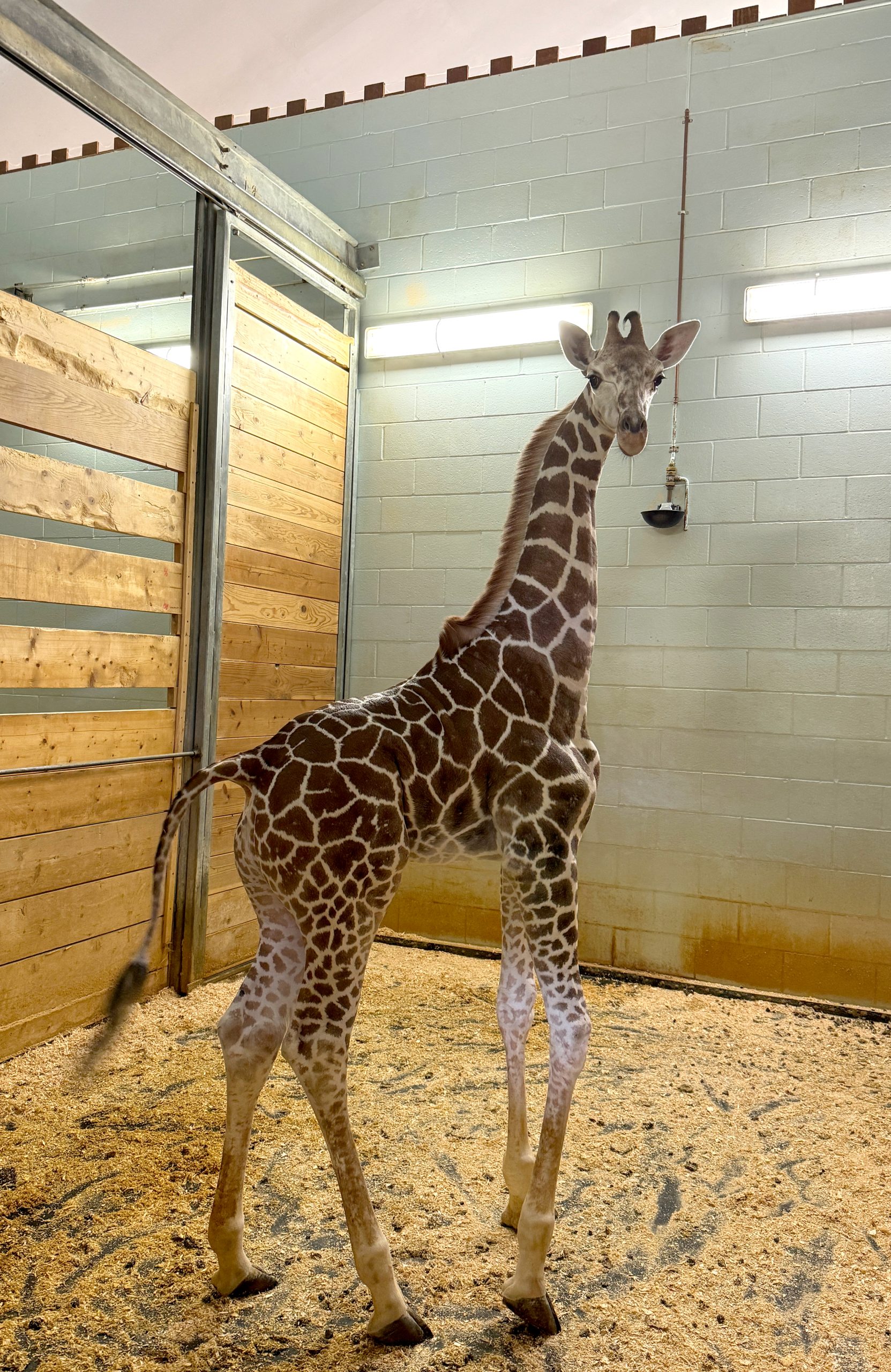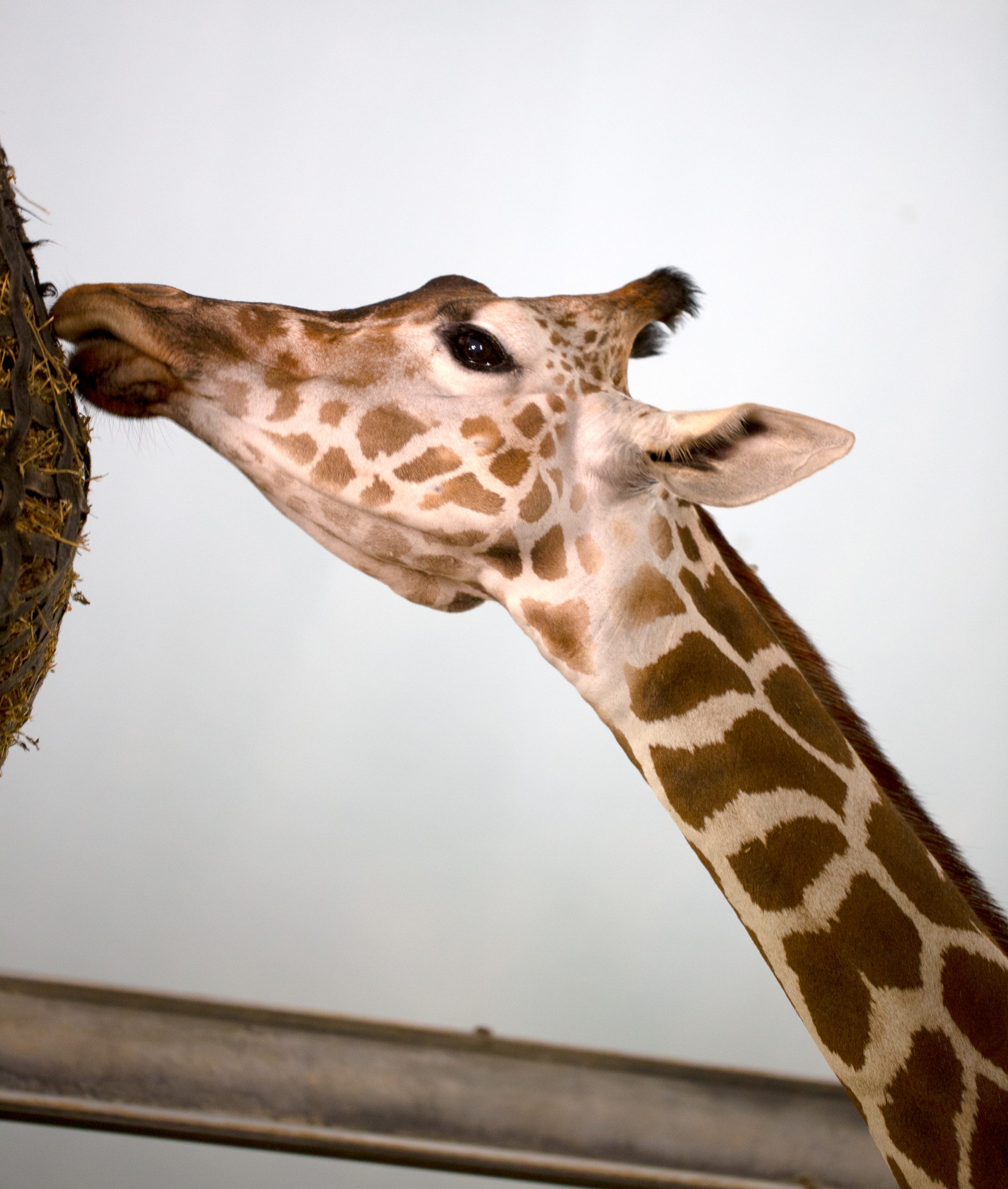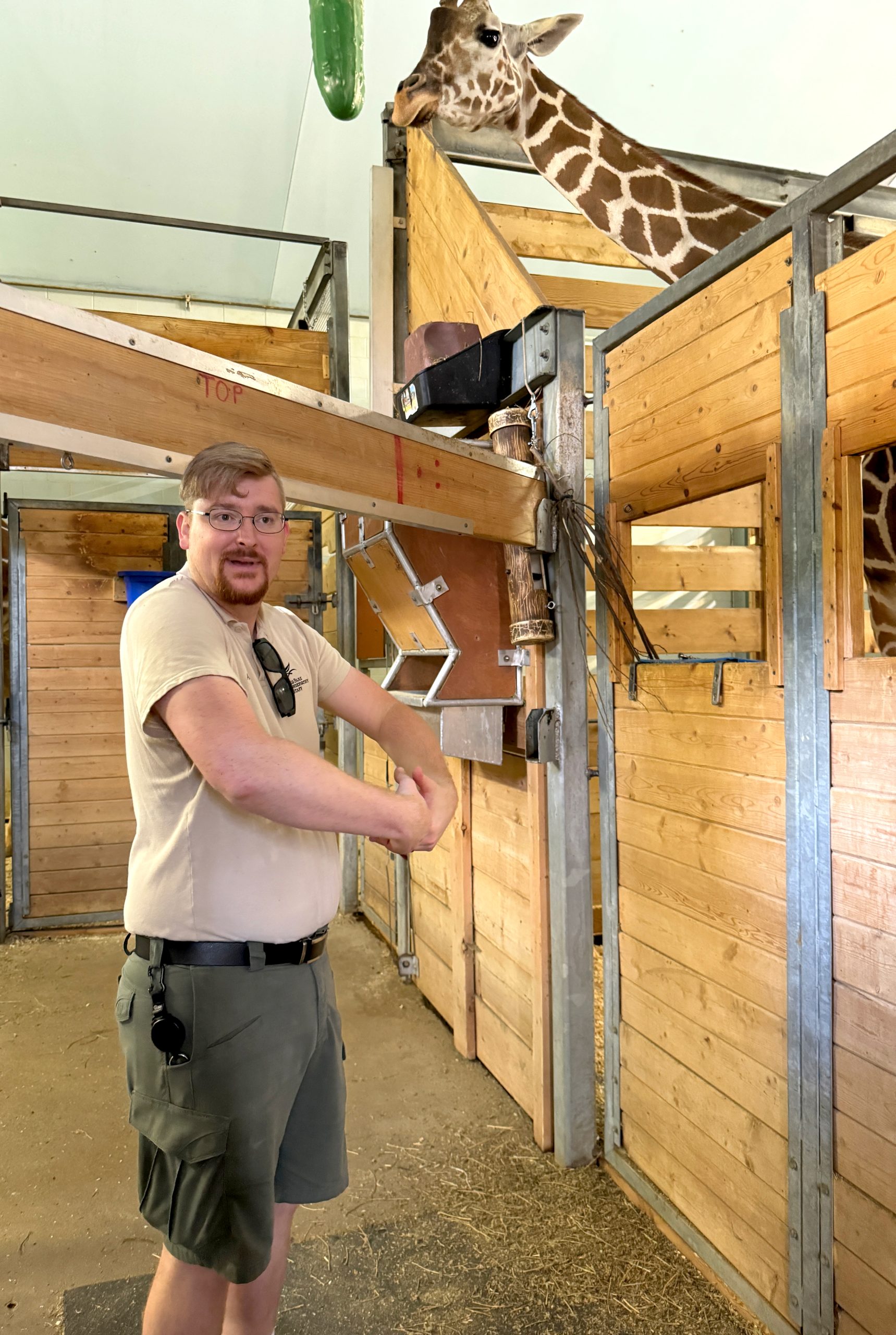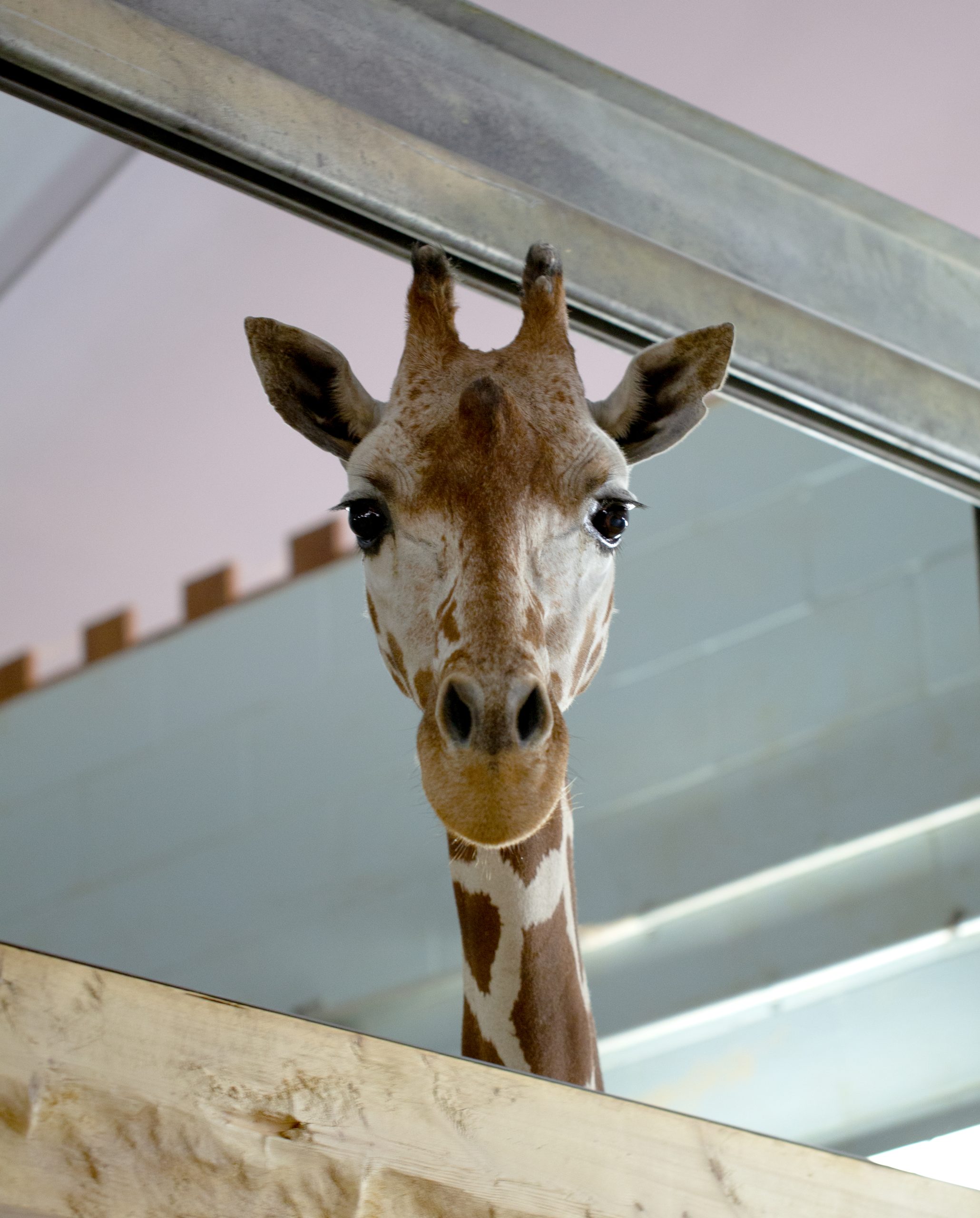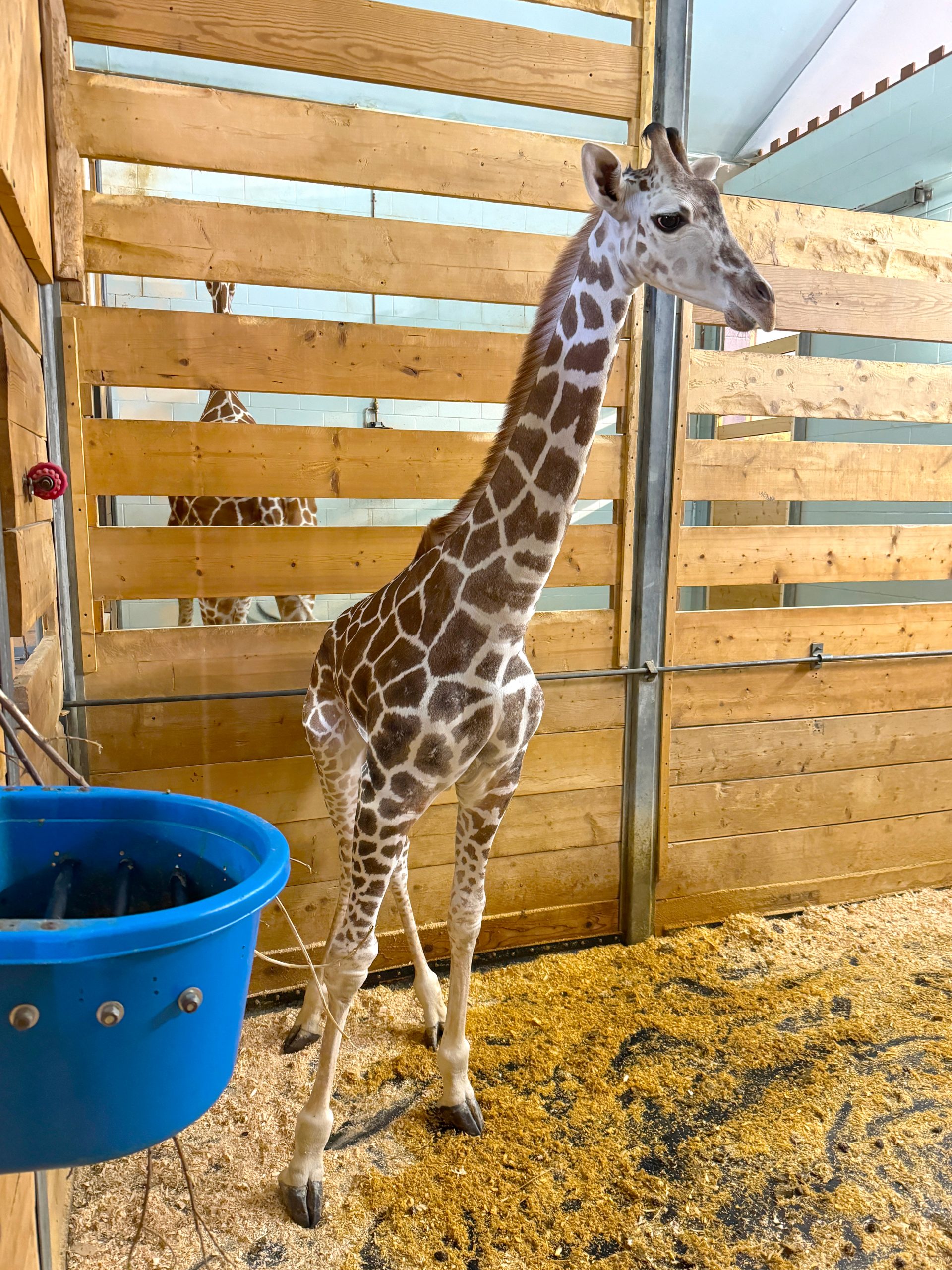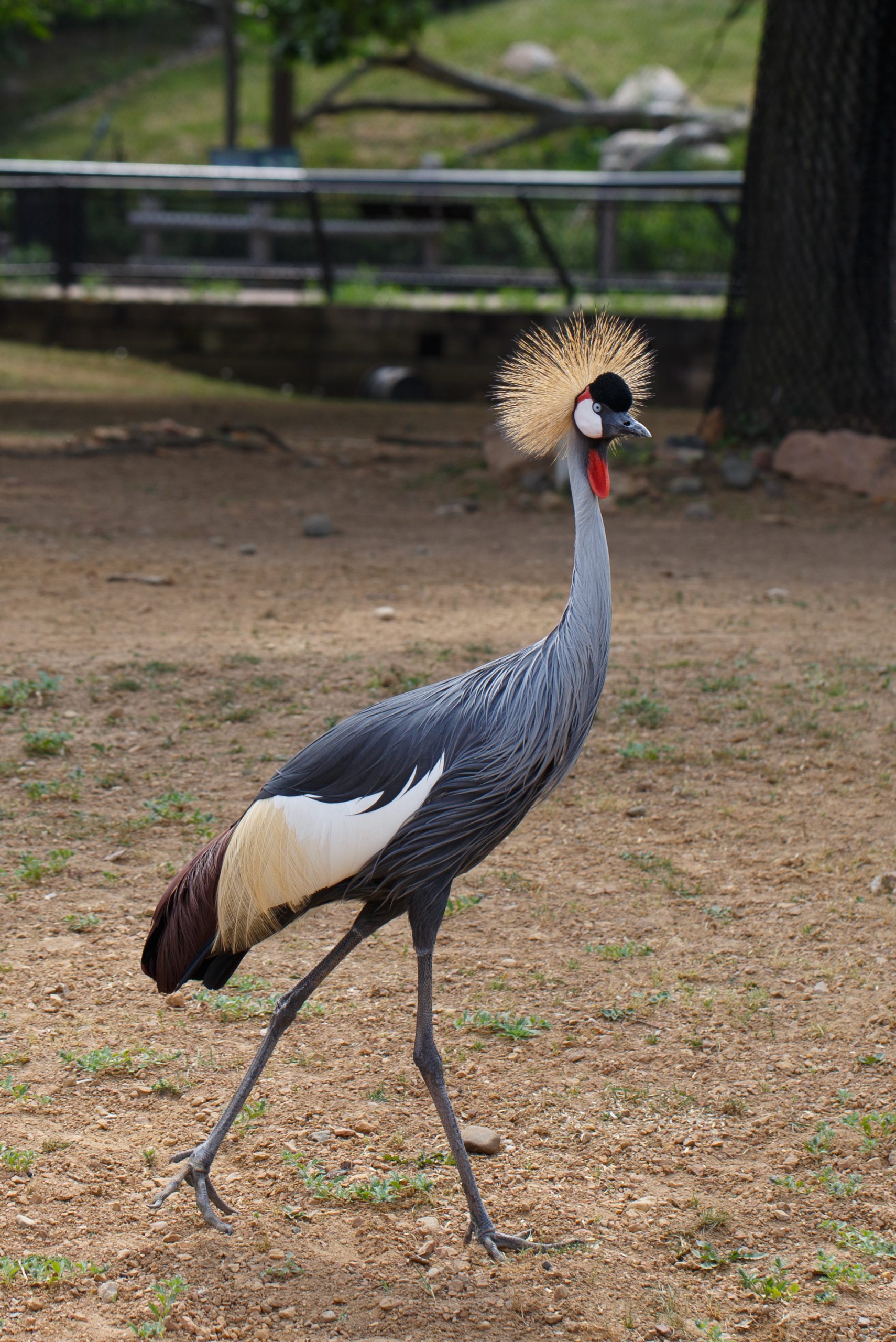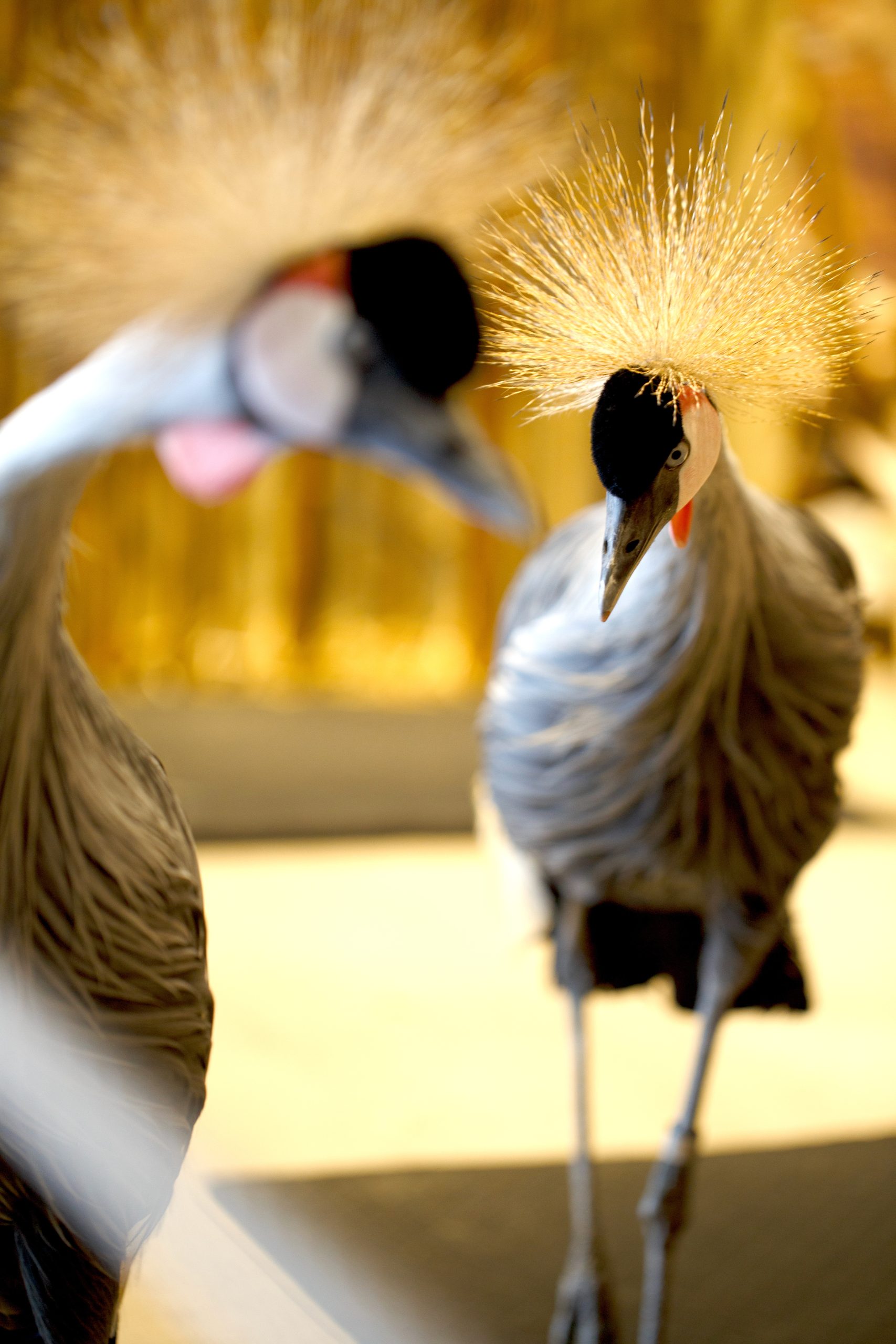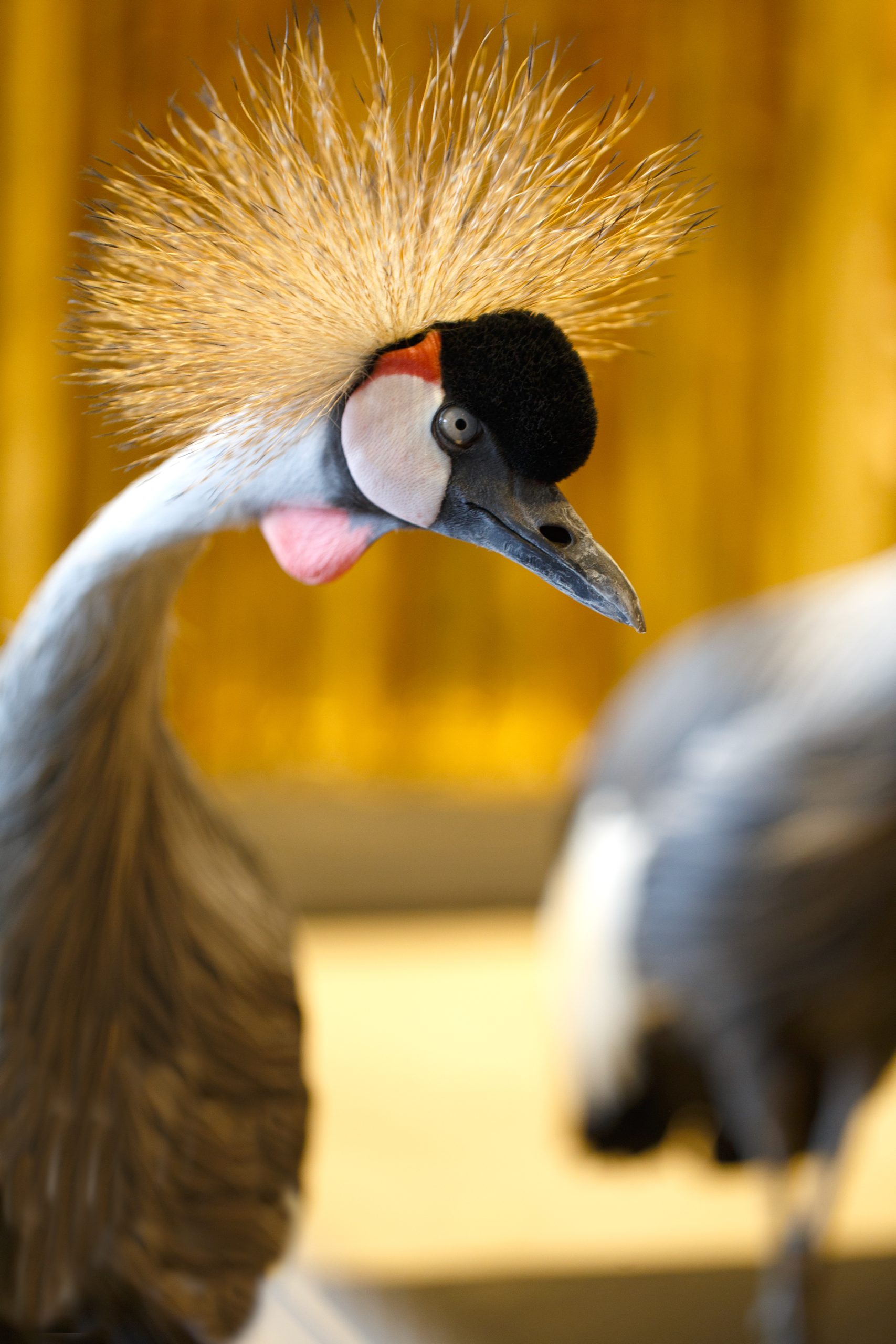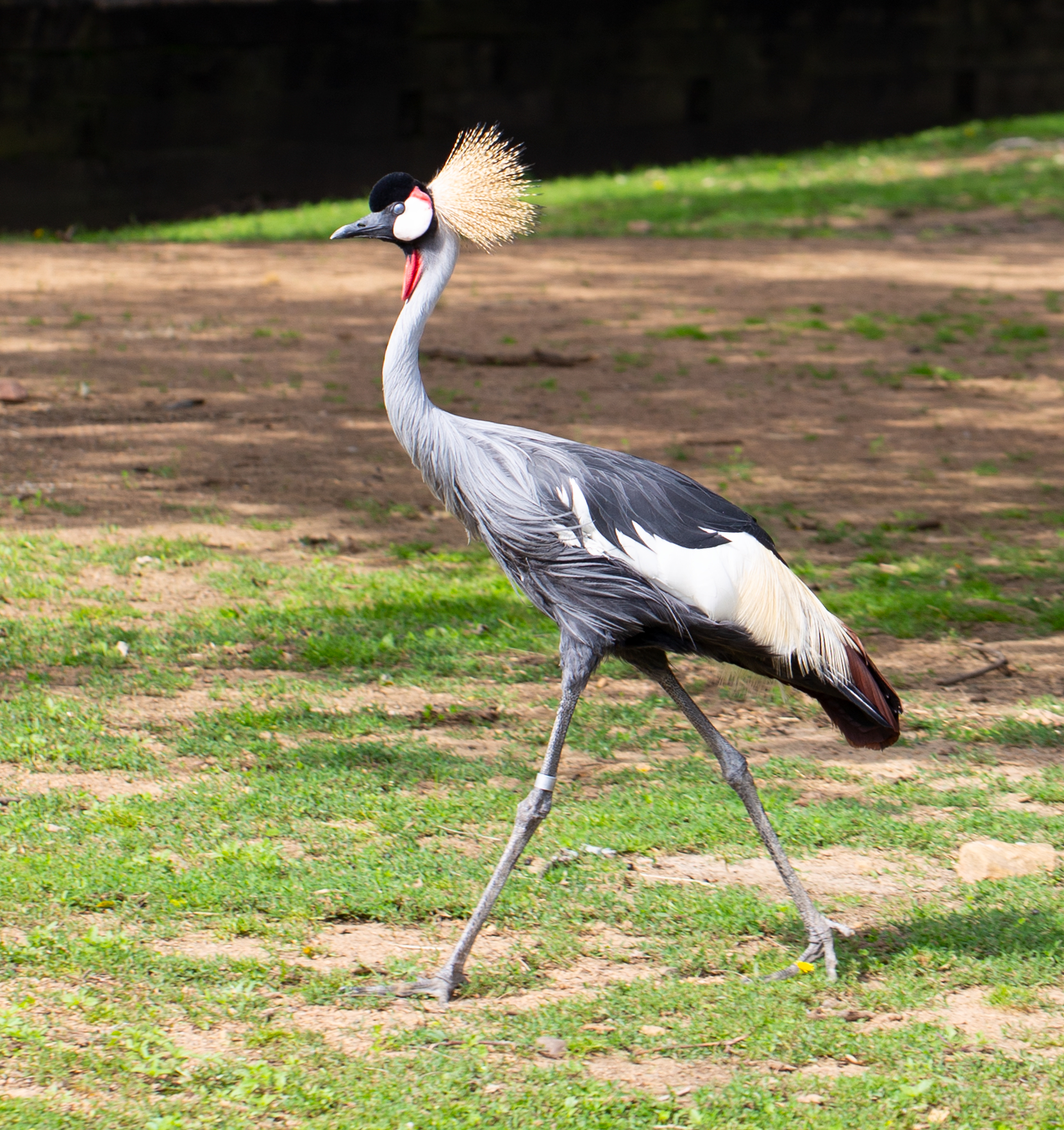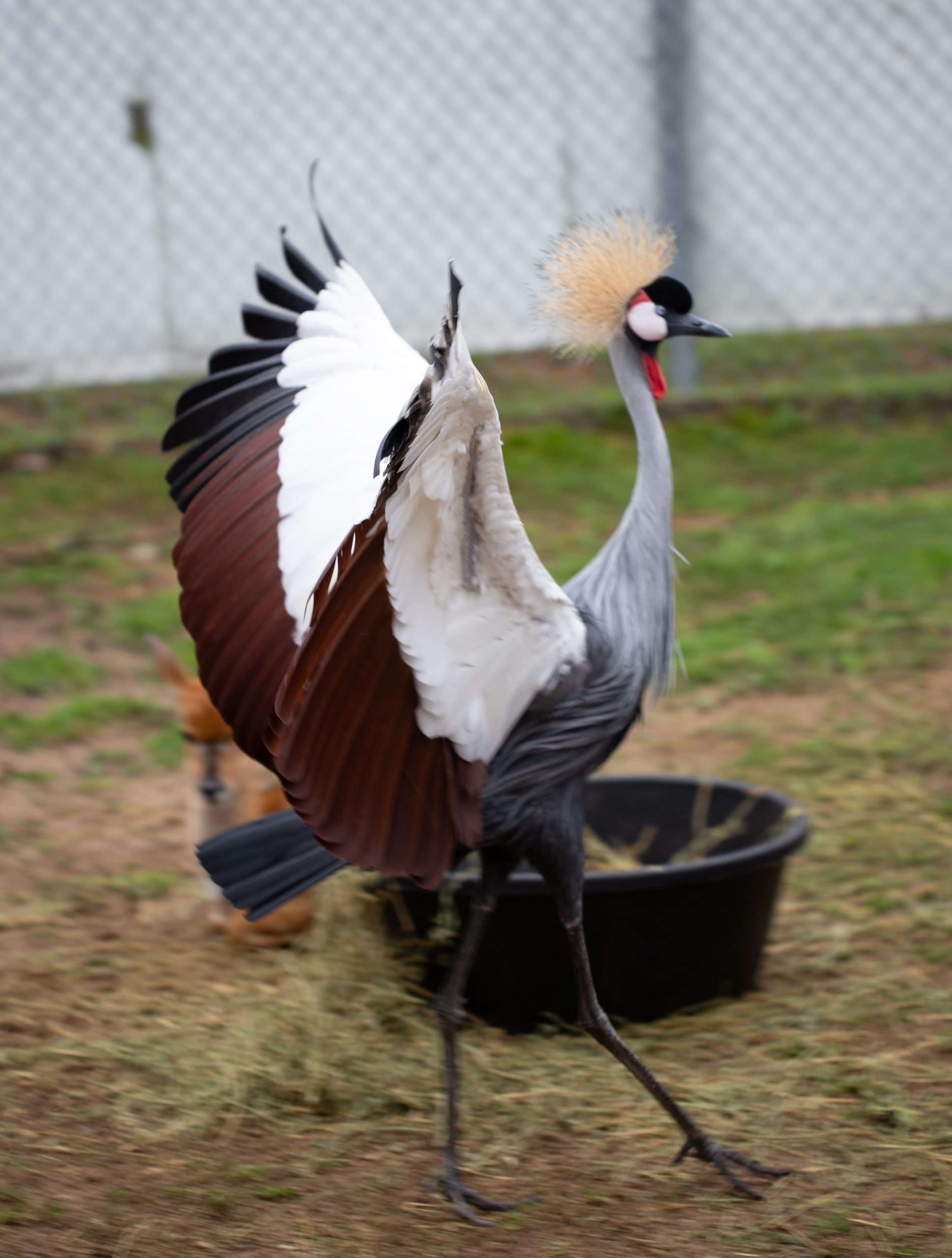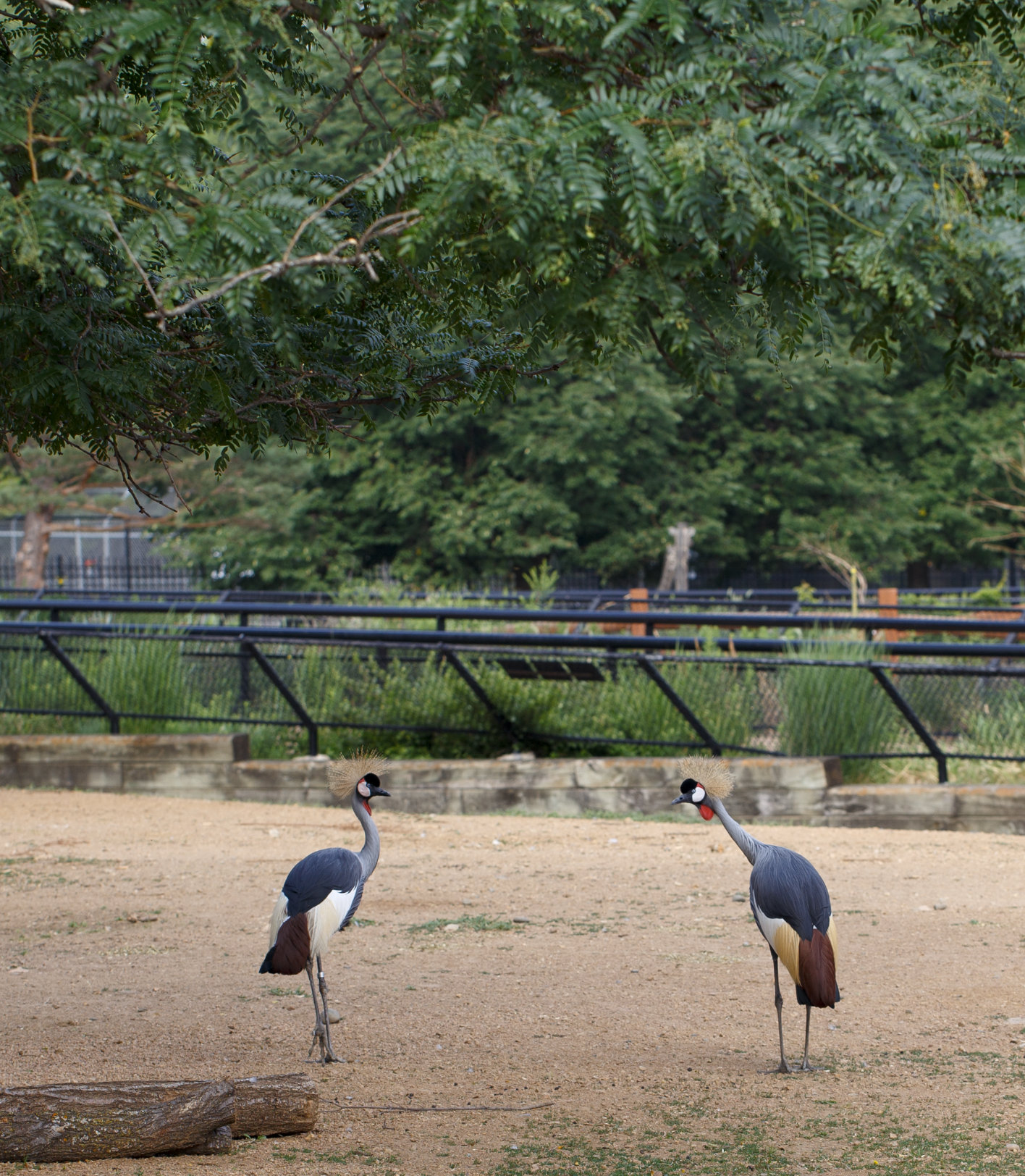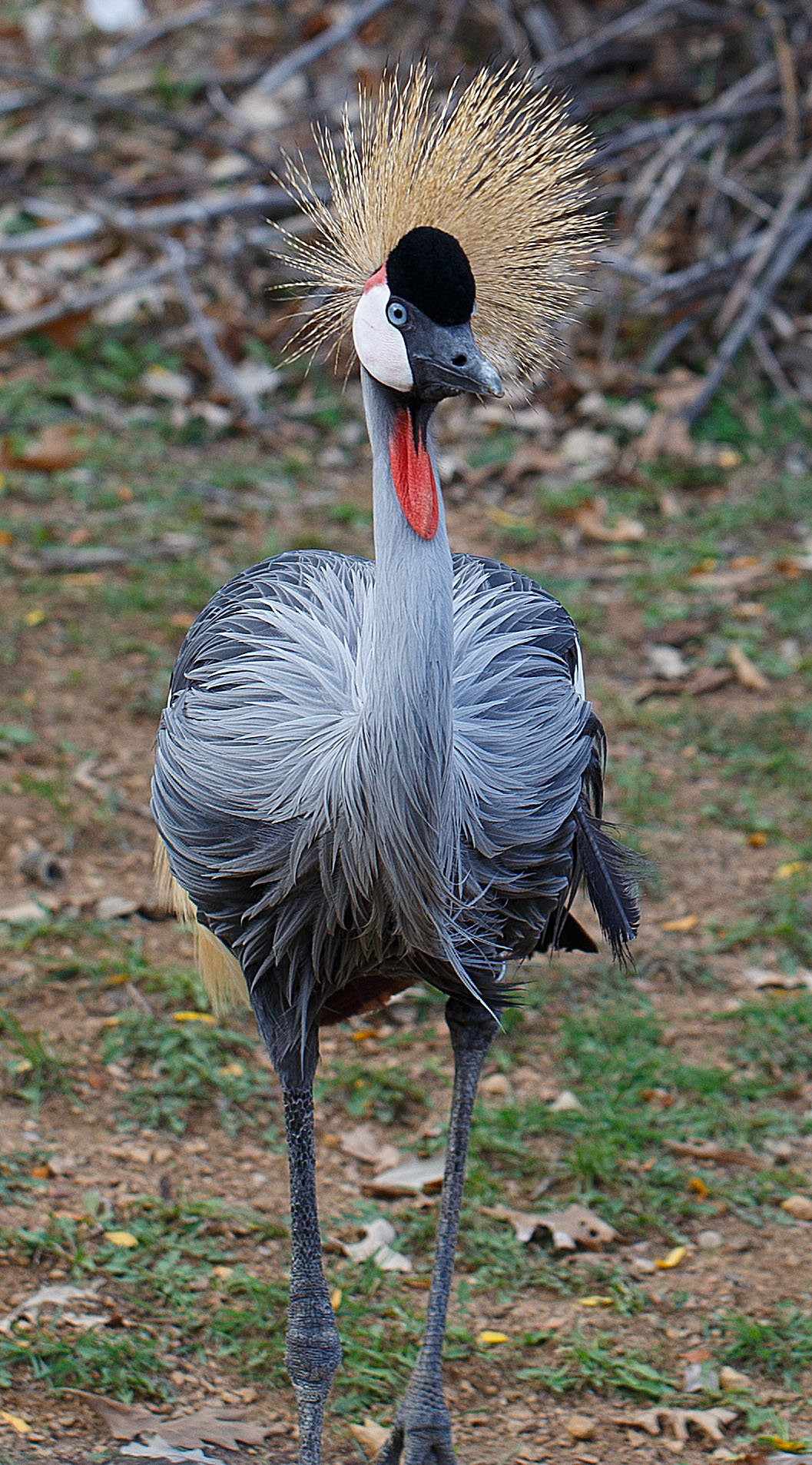Making Minnesota’s most beautiful room more accessible for the future
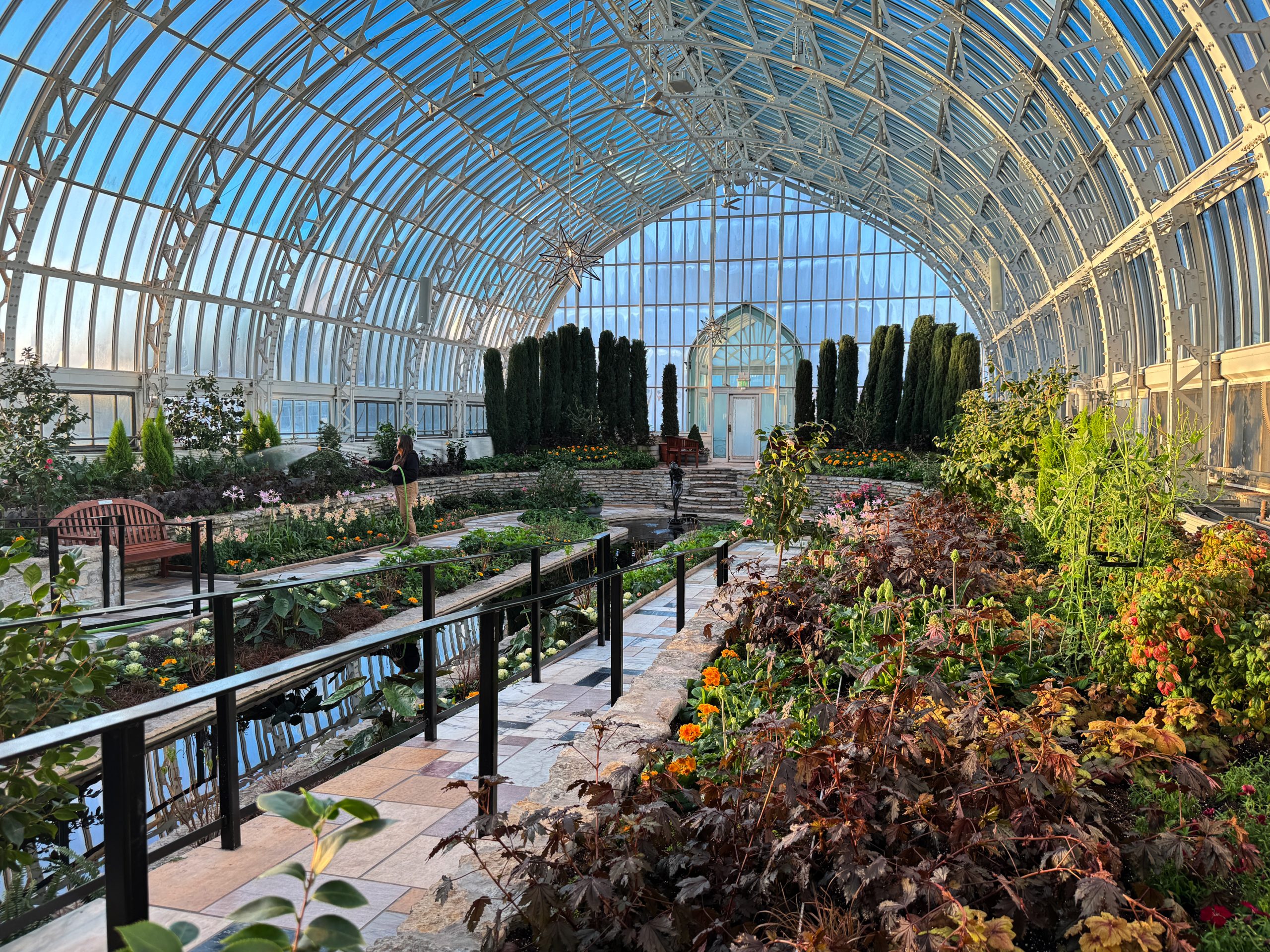
For one of the first times in its century-long history of service, the Marjorie McNeely Conservatory’s Sunken Garden closed to the public earlier this winter to allow for the construction of two pedestrian ramps that will make the space more accessible to visitors. The brief closure also gave Como the chance to give the wing—a favorite Twin Cities wedding destination—a little extra sparkle. As the new and improved space reopens to the public this season, here’s a look at some of the features that make the Sunken Garden so special to so many.

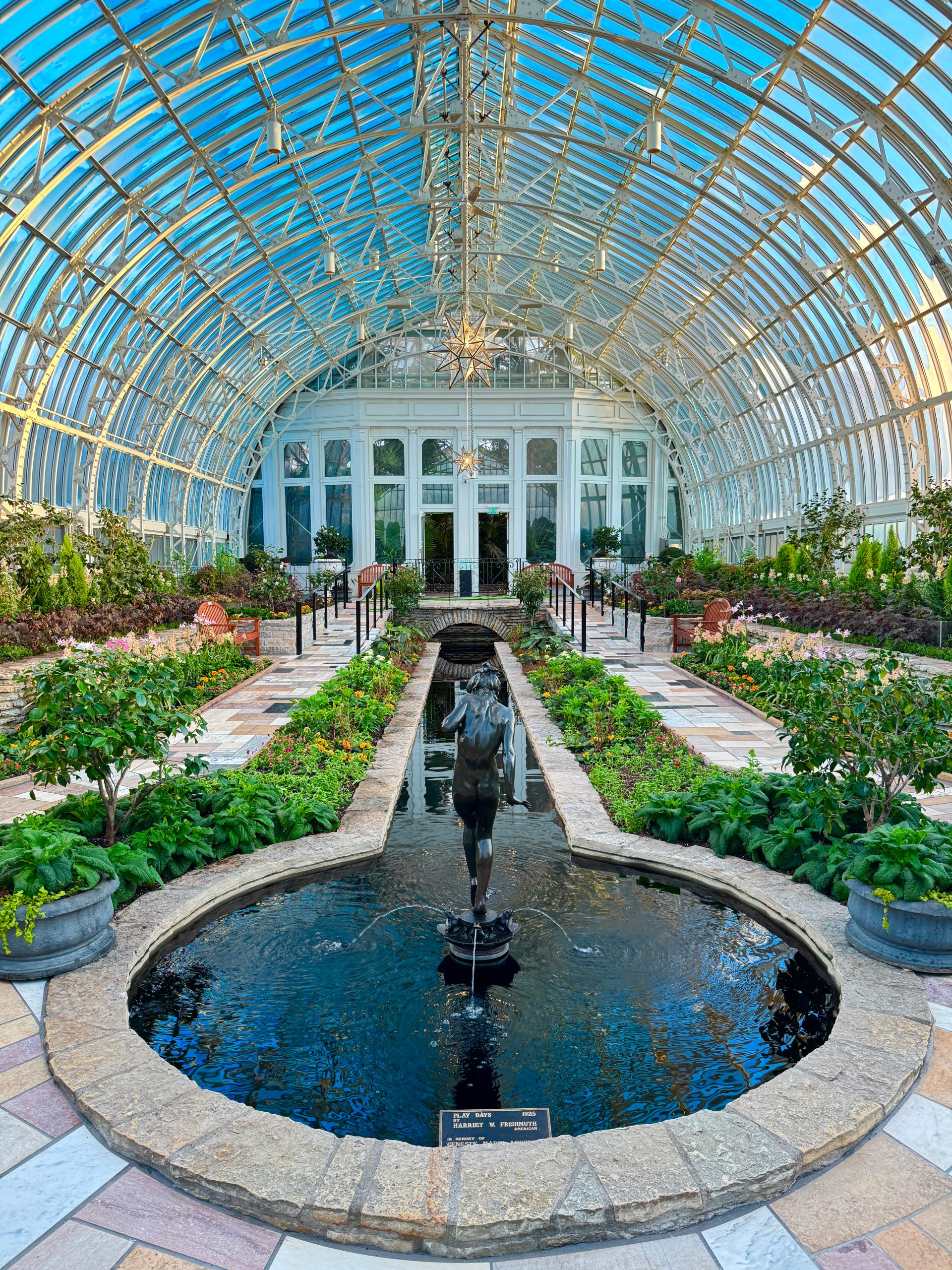
1). While the flowers come and go in the Sunken Garden, Minnesota’s most beautiful room has very deep roots. Originally opened as the Marjorie McNeely Conservatory’s south wing in 1915, the room was remodeled about a decade later to create the features we recognize today—the long, narrow floral beds, the lengthy reflecting pool, and the exceptional view from above that allows visitors to take it all in. “Sunken gardens were a trend in Europe at the time,” says Paul Knuth, the retired horticulturist who created the room’s rotating flower shows for more than 30 years. “But I think being able to see everything from one spot would have been the real inspiration. That view is easy on the eyes.”
2). A beautiful example of the Victorian glasshouse movement, the Conservatory’s listing on the National Register of Historic Places requires renovations to stay within the framework of the building’s original design, including recreating the distinctive marble flooring pattern on the new ramps. With masonry work that’s been kicking up a lot of dust, crews are also planning a deep cleaning of the windows and these Moravian star pendant lights. A traditional shape made popular in Germany in the 1830s, the star pendants were created by German immigrant and St. Paul craftsman Harry Fritsche. According to his grandson, Fritsche made and donated the now iconic lights to the Conservatory “as a gift to the city that welcomed him during difficult times,” and they have been hanging over the Sunken Garden since 1935.
3). “Play Days,” the beloved bronze sculpture at the south end of the Sunken Garden was also removed from the Sunken Garden this winter for repair and renovation. Created by Harriet Frishmuth, an American artist who studied with Auguste Rodin at Paris’s École des Beaux-Arts, the iconic sculpture is actually one of 99 known castings made of the work. In a fun twist of Como coincidence, this piece was donated to St. Paul in the 1960s by senior horticulturist Ariel Dressler’s godparents. “So many people feel a family connection to that room, and so do I, when I’m dusting that statue,” she says.
4). The Sunken Garden is a flower powerhouse, accounting for more than a third of the plants, plugs and bulbs grown each year in Como’s behind-the-scenes greenhouse. That number may even grow with the removal of the obsolete elevators, which has created more room for flower beds. “That’s something we’re excited about, because it’s a pretty significant new space for planting,” says Dressler. The spring and summer flower shows alone typically require up to 10,000 bulbs each year, which means that more than a million tulips, hyacinths, daffodils and other varieties have cycled through the Sunken Garden over the last century. “For years, Como Friends has offered the bulbs for sale when we’re finished with them, so it’s fun to run the numbers and imagine all of the decades that Como’s gardens have been making the community more beautiful, too,” says Dressler.
The Sunken Garden is also the site for Como’s Music Under Glass series this winter, a free concert series featuring local artists on selected Wednesday and Sunday nights. Visit comozooconservatory.org to learn more.
From polar bear medical procedures, to expert care for the gardens, to preserving and improving Como’s historic campus, your support made it all happen in 2024.

With her 30th birthday just celebrated, Nan is the grand dame of animal ambassadors at Como Zoo, continuing her reign as the oldest polar bear in North America. And thanks to a series of medical tests and procedures made possible this year with your support for Como Friends, this feisty alpha female is still living her best life in Polar Bear Odyssey with roommates Neil and Kulu.
Animal care is a constant at Como Zoo, but planning a full medical assessment for a polar bear is even more demanding, says senior keeper Allison Jungheim. Last spring, Nan presented with a short list of potential health problems that keepers and veterinarians decided to investigate. “Because we knew we wanted to get as much information as we could during the short time she’d be under anesthesia, we worked really hard to make sure we had every piece in place,” says Jungheim. During the 90-minute procedure in July, a dental team took a close look at her teeth, a veterinary team excised a mass on the side of her body, and another shaved a portion of her lower body to diagnose the vulvar dermatitis that was bothering her.
“We were able to get so much done that there was even time to give her a vaccination, and to collect a blood sample for a polar bear thyroid study they’re coordinating at the Oregon Zoo,” says Jungheim, who also serves as the Association of Zoos and Aquariums coordinator for the North American Polar Bear Species Survival Plan.
Providing state-of-the-art veterinary support to animals like Nan is just one of the things your support for Como Friends helped to make possible in 2024. Here’s a look:
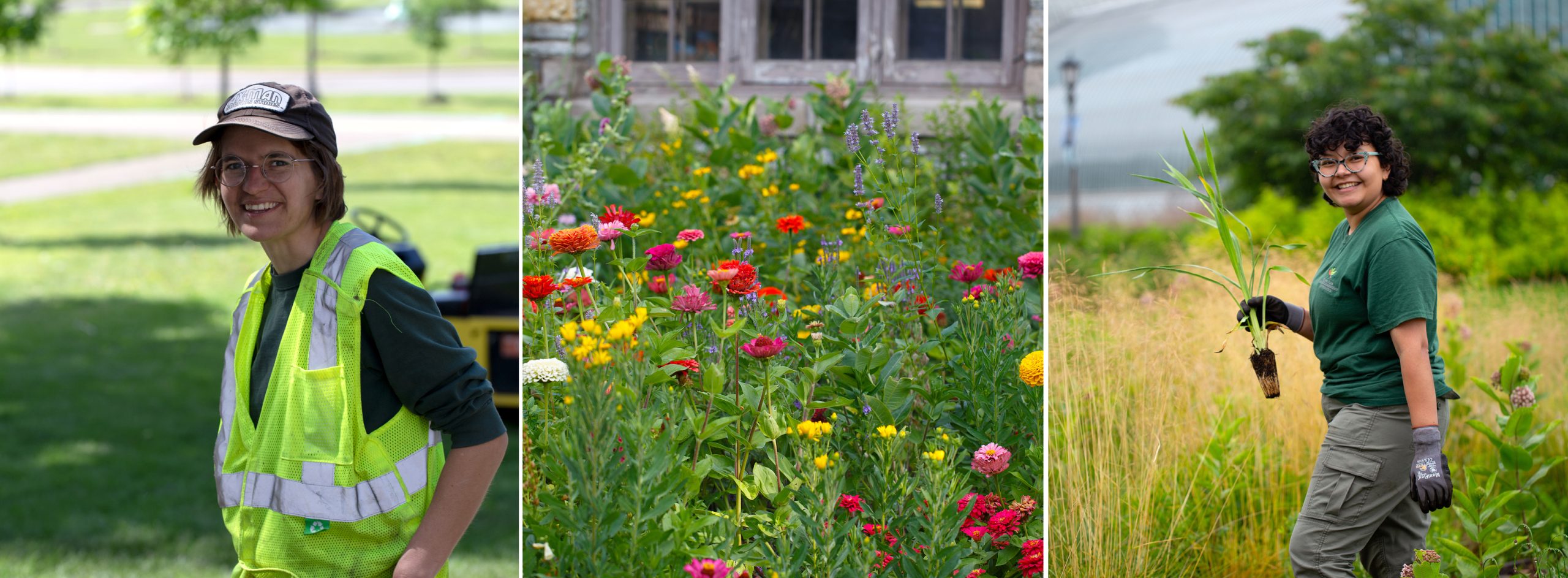
Greening the Marjorie McNeely Conservatory: For more than a century, Como has inspired the public with gorgeous gardens and floral displays, and now we’re helping highlight the beauty of sustainability. Thanks to contributions to Como Friends, horticulturists at the Conservatory have been introducing drought and heat-tolerant perennials and pollinator-friendly plants throughout Como’s campus. Your support also helps to provide the plant materials and professional expertise behind Como’s five seasonal flower shows, ensuring that the Sunken Garden is always Minnesota’s most beautiful room, no matter the season.
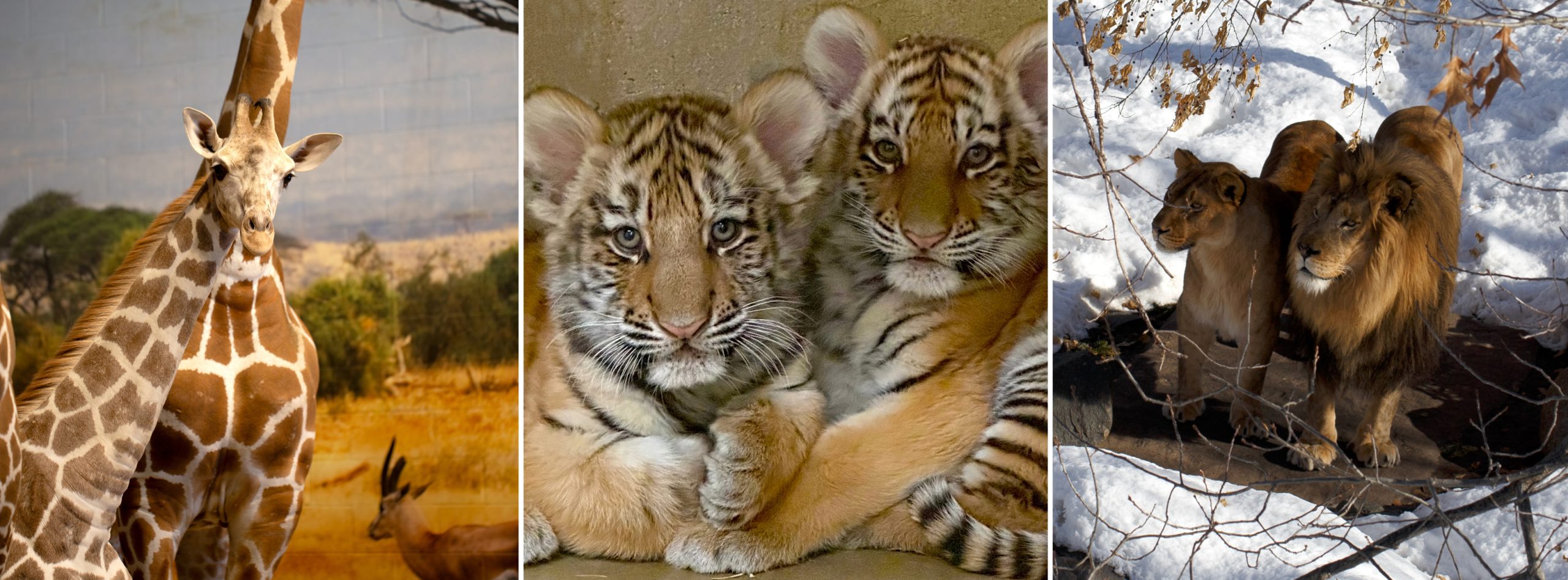
All Ages Animal Care: With tiny new arrivals like Amur tiger cubs Marisa and Maks and willowy nyala newborn Walter, Como Zoo’s keepers and veterinary staff had their hands full helping this year’s zooborns get off to a great start. Thanks to Como’s new on-site veterinary team, made possible in part by your support for Como Friends, the campus also had the resources and expertise to provide specialized care to adolescents like Ivy the giraffe and older animals like Mumford the lion, ensuring that Como Zoo’s animal ambassadors get the cutting edge care they need to thrive at every stage of life.
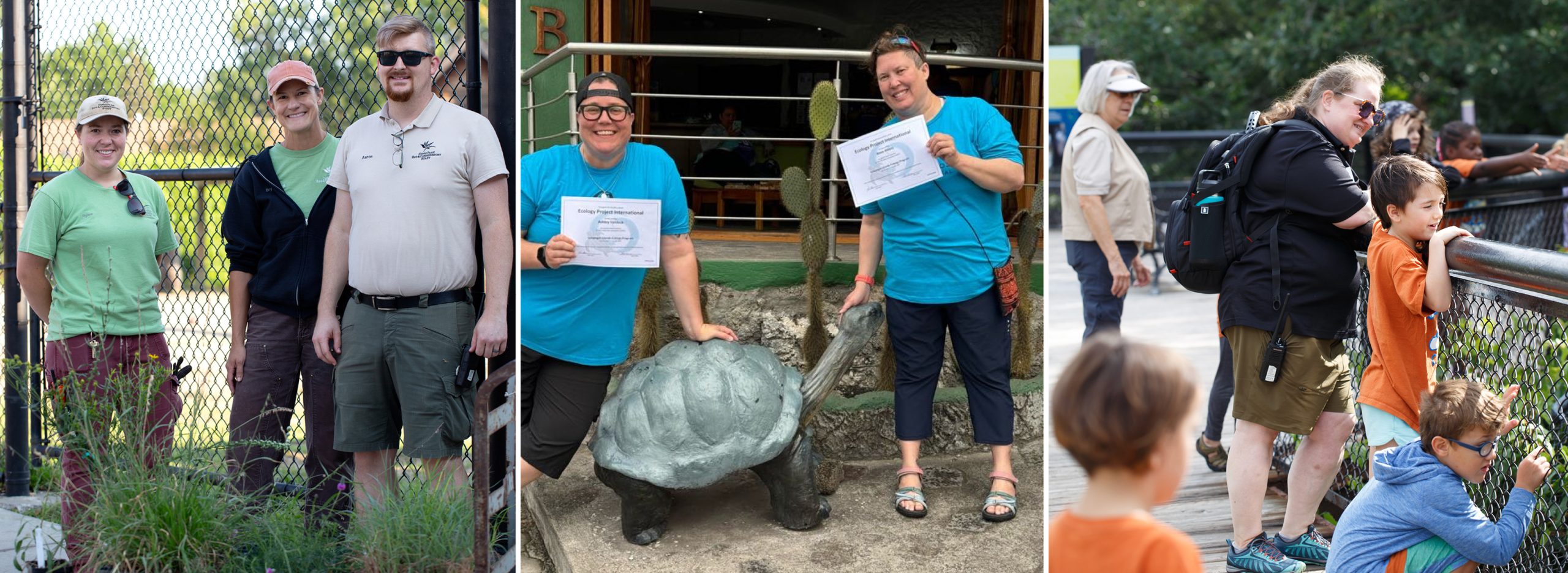
Connecting with Conservation: Promoting the value of conservation is Como’s mission, and this year, your gifts helped get the message out far and wide. Whether it’s telling a new story about the oak savanna ecosystem in Como Zoo’s bison habitat, or sending our intrepid education specialists to the Galapagos Islands to participate in field-based conservation and to meet tortoises in the wild, your support helps Como to connect with conservation efforts at home and around the world, while offering environmental education curriculum that teaches visitors about the profound connections between animals, plants and people.
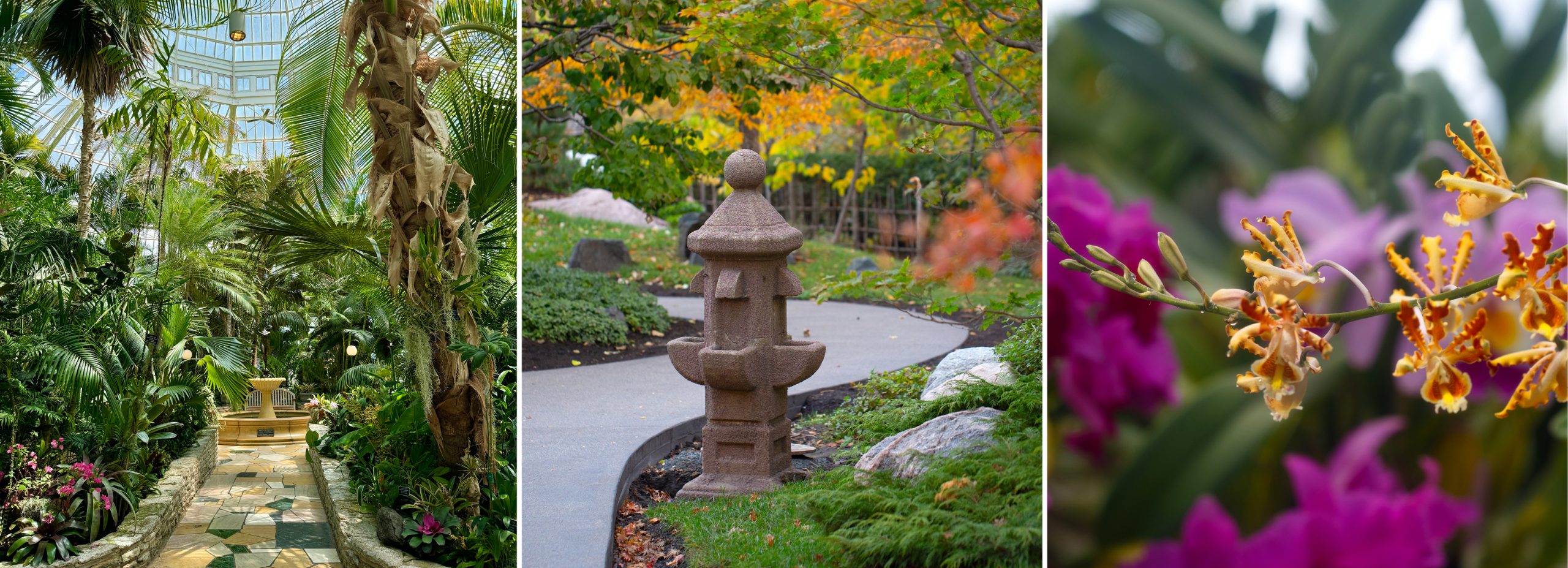
Preserving and Maintaining Como’s Historic Campus: From the iconic Palm Dome to the quiet corners of the Charlotte Partridge Ordway Japanese Garden, nearly every part of Como’s campus has a story to tell. In 2024, your contributions advanced maintenance on high-priority projects to preserve both historic and new assets at Como. Your support helped Como move forward on needed maintenance, from pruning tropical trees, to repaving pathways for better accessibility, to updating the venting that keeps Como’s Orchid Room in bloom.

Free Admission for Every Visitor: Como visitors came back in a big way in 2024, and your support made it possible. Now on pace to welcome more than two million visitors by the end of the year, Como’s free admission ensures that everyone in our community has access to the wonders of nature, every day of the year.
As a Como Friends supporter, you can take credit for all of this and more at Minnesota’s most visited cultural institution. Thank you for helping to make 2024 another year of growth at Como Park Zoo & Conservatory!
Como Friends donors Erin and Matt Wach have made a commitment to investing in the open-door policy that serves nearly 2 million visitors every year

“We were just out of graduate school, unemployed, and coming to Como was like a really great date that we didn’t have to plan for, or worry about,” says Erin. “It was a way to have fun, and feel calm, without facing any financial barriers. I think Como helped us through that time.”

Tell us your own Como story: Did you visit as a kid? What brings you to Como now?
Erin: I grew up in the western suburbs, but my mom was from St. Paul and she and my grandmother always brought me here. My grandma loved the plants, my mom loved the animals, and coming to Como makes it easy to get a little bit of both.
Como Friends supporters often get the chance to take part in sneak peek experiences to learn more about animals and plants. Have you taken advantage of any of those opportunities, and what have you learned in the process?
Erin: Going to member preview events and fundraisers like Sunset Affair has been awesome because you get more exposure to things that you might not see during the day when the crowds are here. How often do you get to spend time in a room with gorillas, and literally just have them watching you eat your dinner? And if you bring your friends, it’s kind of like having your own private party, which has been really cool. The unique nature of those experiences definitely inspires us to support Como.
Many people wait until later in life to make a real financial commitment to the nonprofits they care about. Why have you chosen to make that commitment now as younger people?
Erin: It’s an opportunity to set up that family tradition, and creating memories around a place you care about. Como is something really special you can share with your family, and by contributing to it, we’re able to see it grow.
What’s your pitch? Why do you think people should support Como Friends on Give to the Max Day?
This year, you can help choose the name of Como Zoo’s new baby nyala, born in September. Vote for your favorite name when you make a Give to the Max Day gift to Como Friends!
Pick your favorite name—Harvey, Stanford, or Walter—and vote by selecting your choice on the donation form.
Two Como educators traveled to the Galapagos Islands to bring home new lessons for Como’s conservation curriculum
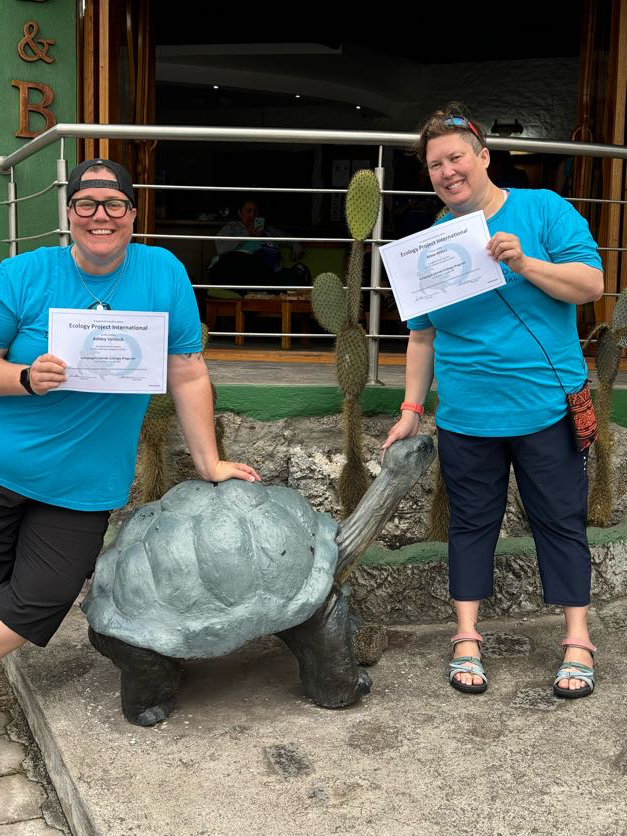
Since 2017, Como Friends’ Conservation Champions program has helped dozens of Como staff members pursue professional passion projects, from tracking snow leopards in Kyrgyzstan, to finding cool ways to cut down on single-use plastics on Como’s campus, to rehabilitating injured penguins on the coast of South Africa.
While the Conservation Champions program is open to applications from everyone on Como’s campus, it wasn’t until Anne Ahiers and Ashley Verdeck got a nudge from the Education & Conservation Curator, Bekah Hanes, that the pair of education specialists decided it was time to make a pitch of their own. Their plan? To join a special program dedicated to educators and ecology in the Galapagos Islands, and to take over Como’s social media accounts with real-time posts about what they were learning on the way.
Their adventure started last July, when the pair joined Ecology Project International and met with their group in Quito, Ecuador. Their cohort of fellow educators came from as far away as Australia and Kazakhstan, and quickly bonded over their common love of tortoises, which they encountered on their first day, roaming through the highlands. “Just to see tortoises out in the greenery, in their natural ecosystem was amazing to us,” says Verdeck. “We were all acting like little kids, we were so excited.”
The group got the chance to collect biometric data on the 13 different tortoise species that occupy the Galapagos Islands, including one nearly 100-year-old animal that had never been studied before. As the group toured the volcanic archipelago, they could also see how each species has adapted to its own microhabitat.
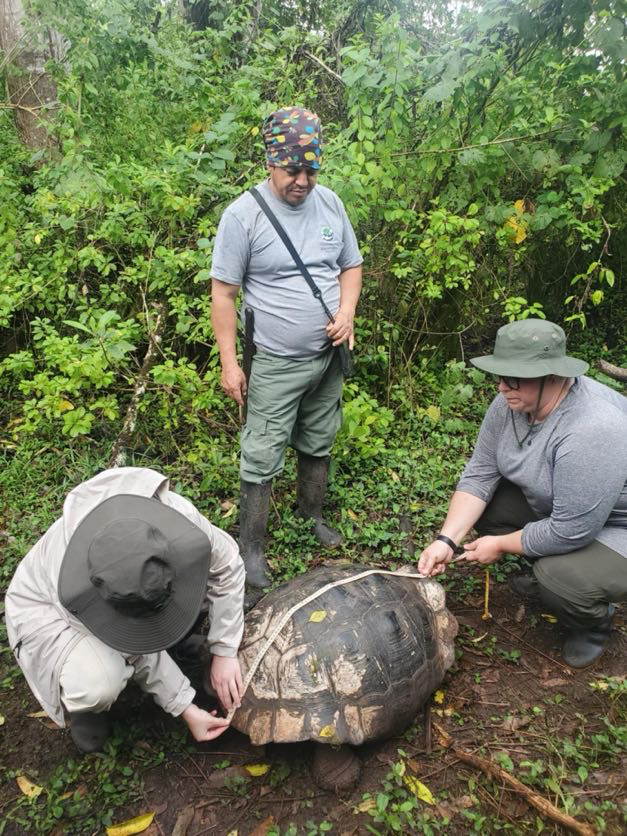
“You’ll have tortoises that look very different from one island to another island,” Ahiers explains. “Tortoises that live where it’s very green and rainy look a lot like Como Zoo’s Irwin, who eats plants and grasses on the ground. But tortoises that live in scrubland have a different shape and size, including an aperture that’s a lot wider, so they can reach their heads up and eat cacti.”
Verdeck and Ahiers got a chance to visit a tortoise breeding center, where they visited the memorial for Lonesome George, the last ever Pinta Island tortoise in the world, who has become a conservation icon for the Galapagos. The team also took part in highland restoration, helping with a conservation project working to manage invasive African snails, and studying their effect on the ecosystem.
Another day, they hiked to the famed Tortuga Bay, performing a survey on the prevalence of microplastics. “We were walking on a pristine beach, with no trash anywhere, but when you start sifting through it, you find these microplastics that are the size of a needle tip,” says Verdeck. “You start to realize how hard it is to get away from this problem.”
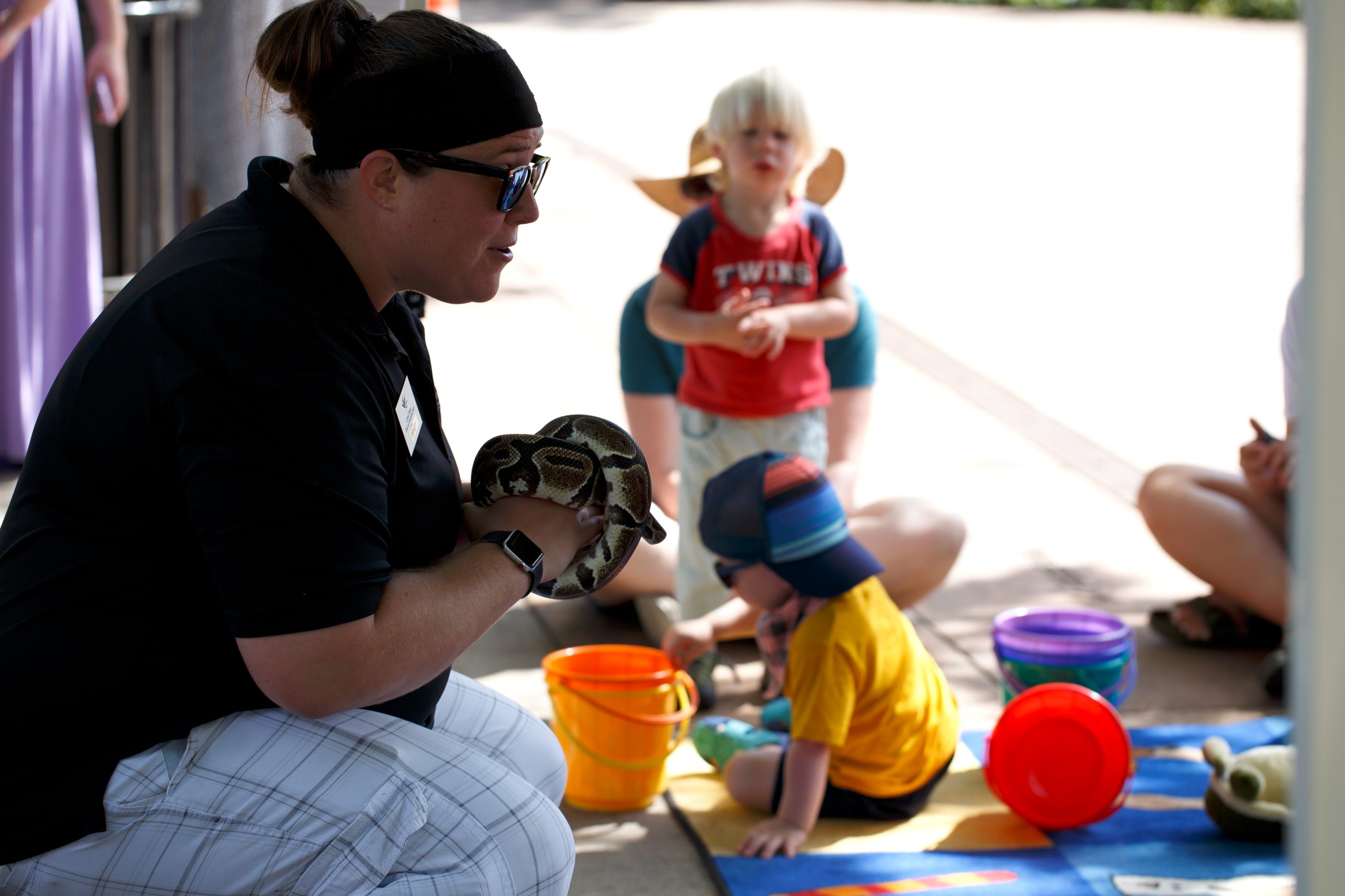
While moments like this were eye-opening for Ahiers and Verdeck, the pair say it was also inspiring, helping them to create a new Little Explorers curriculum that mimics some of the activities and lessons they learned during their trip. “You want to start kids young, and get them caring about conservation early in life—the earlier the better,” says Verdeck. “If you can teach them not to throw wrappers on the ground, and to put them in the garbage right away, that’s a good place to start.”
As the team posted updates about their travels, they also made strong connections with other educators in their group that have continued even since they returned to Como. “We were the only non-formal educators on the team, and sometimes it can be hard to translate why zoos are here, and what our role is,” says Ahiers. “But we have an important contribution to make, because we’re here to teach people about conservation, about what we can do to keep species safe and thriving, and to protect ecosystems. Conservation Champions really helped us to make those connections.”

Como Brings Conservation to Life
From the first breaths taken by Como Zoo’s new tiger cubs, to the Conservation Champions trip to the Gálapagos for educators Anne and Ashley, Como Park Zoo and Conservatory is on a mission to bring the value of conservation to life in every season.
On Give to the Max Day, your generosity helps bring conservation to the forefront every day at Minnesota’s most visited cultural destination. From crucial breeding programs to preserve our planet’s most endangered animals, to sustainable habitats that tell deeper stories about the Earth’s diversity, your support helps Como Park Zoo and Conservatory welcome the next generation to discover the wonders of nature through unforgettable face-to-face encounters, fantastic education programs, and always-free admission.
And thanks to a matching gift from the Como Friends Board of Directors and a generous donor, your gift will be doubled, dollar for dollar, up to $50,000. Thank you! Give to the Max Day
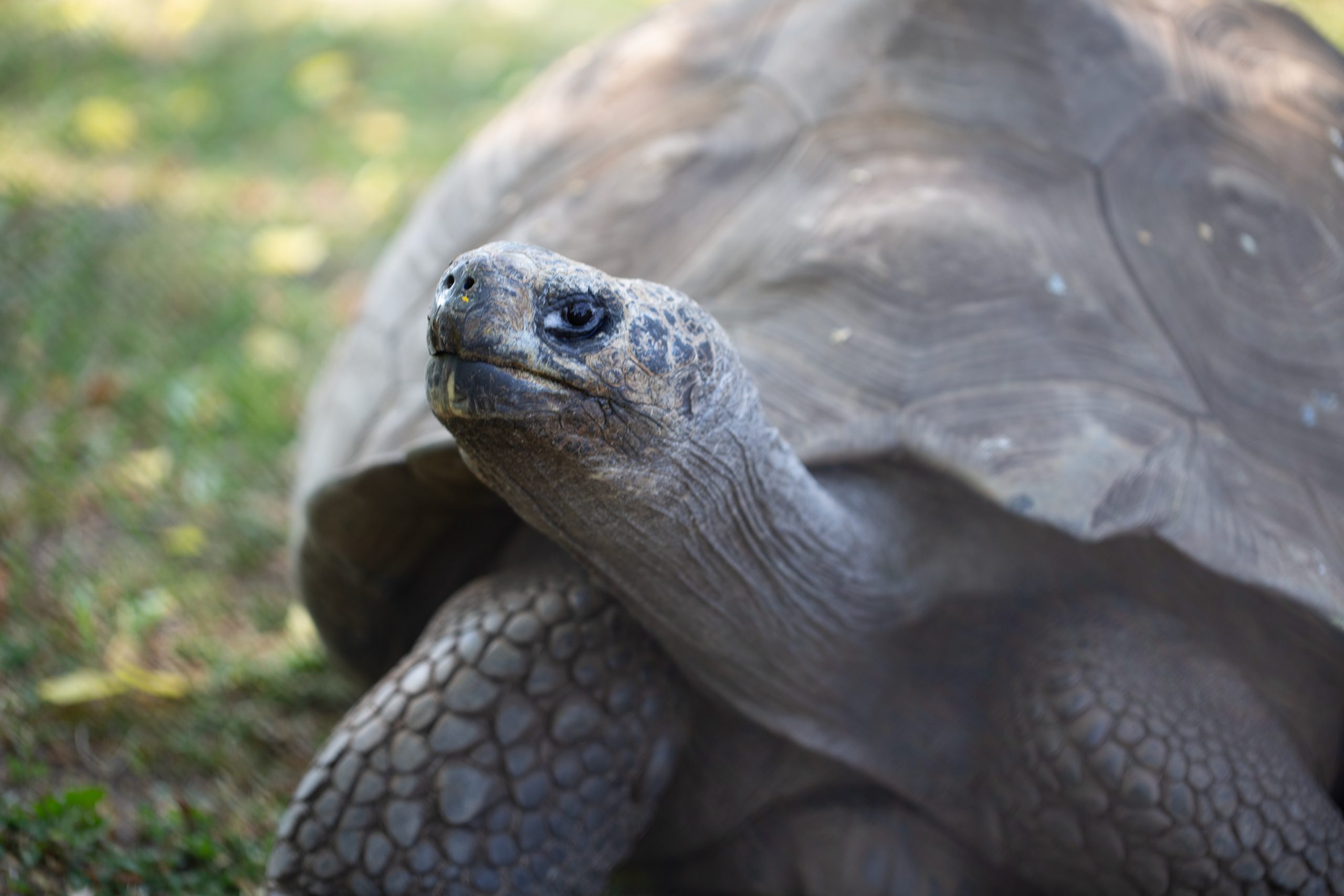


Thanks to your support for Como Friends, a new generation is discovering career options in animal care and horticulture

For Como Zoo apprentice Sophia Dady, the trick is building trust with Ruby, the newest bison to live in Como’s historic barn. Over the course of the last year, Dady’s calm demeanor (and hundreds of carrots) have helped her to build a bond with the young bison, teaching her to follow a training target. This new husbandry skill now allows keepers to get a closer look at different parts of Ruby’s body, depending on where the target is positioned.
While few zoo interns ever get the chance to take on an important long-term project, animal training is all in a day’s work for Dady. A member of St. Paul’s Right Track apprentice program, Dady is one of 9 zookeeping and 4 horticultural apprentices at Como this year, earning 20- to 40-hours-a-week pay while they take on entry-level responsibilities throughout Como Zoo and the Marjorie McNeely Conservatory.
Though unpaid internships and volunteer conservation roles have often been the career path to jobs in animal care, the Right Track program helps to remove the economic barriers to participation for youth from cost-burdened households. “Right Track is designed to ensure that you don’t have to work without pay, or have multiple side jobs, to take advantage of a career-building opportunity,” says Lianna Sanders, the Como project manager who oversees the Right Track apprentices.


This year, Como has expanded the Right Track program to include horticultural apprentices like Willow Stephens, who recently had the opportunity to collaborate with horticulturist Rylee Werden on the design and installation of the Fall Flower Show. Hands-on experiences like that, and having the time it takes to dive into a potential career is another important part of the program, which also allows young people to attend college during their apprentice tenure.
Being fully immersed in animal care at Como has allowed Dady to take part in everything from primate training to observing behind-the-scenes veterinary care, while also attending Right Track professional development sessions in resume writing, financial literacy, and more. “Because the zookeepers see you more often, they trust you and allow you to take on your own projects, which is so important,” Dady says. “You’re given a bit more independence to find out what you like to do and what you’re good at, which is important as you’re developing your career.”
RightTrack apprentices earn a living wage while working in a variety of roles at Como. Additional funding from Como Friends helps apprentices purchase uniforms, heavy work boots, and other tools to be successful and safe on the job.
Great Late Breaking News: Como Zoo Right Track Apprentice Gabby Metzler (pictured below) was recently hired at the Fort Wayne Children’s Zoo as a marine mammal and aquarium zookeeper. And Sophia Dady has been hired as a temporary zookeeper at Como Zoo in the Tropical Encounters habitat as well as their small animal, reptile, and amphibian Animal Support Building.
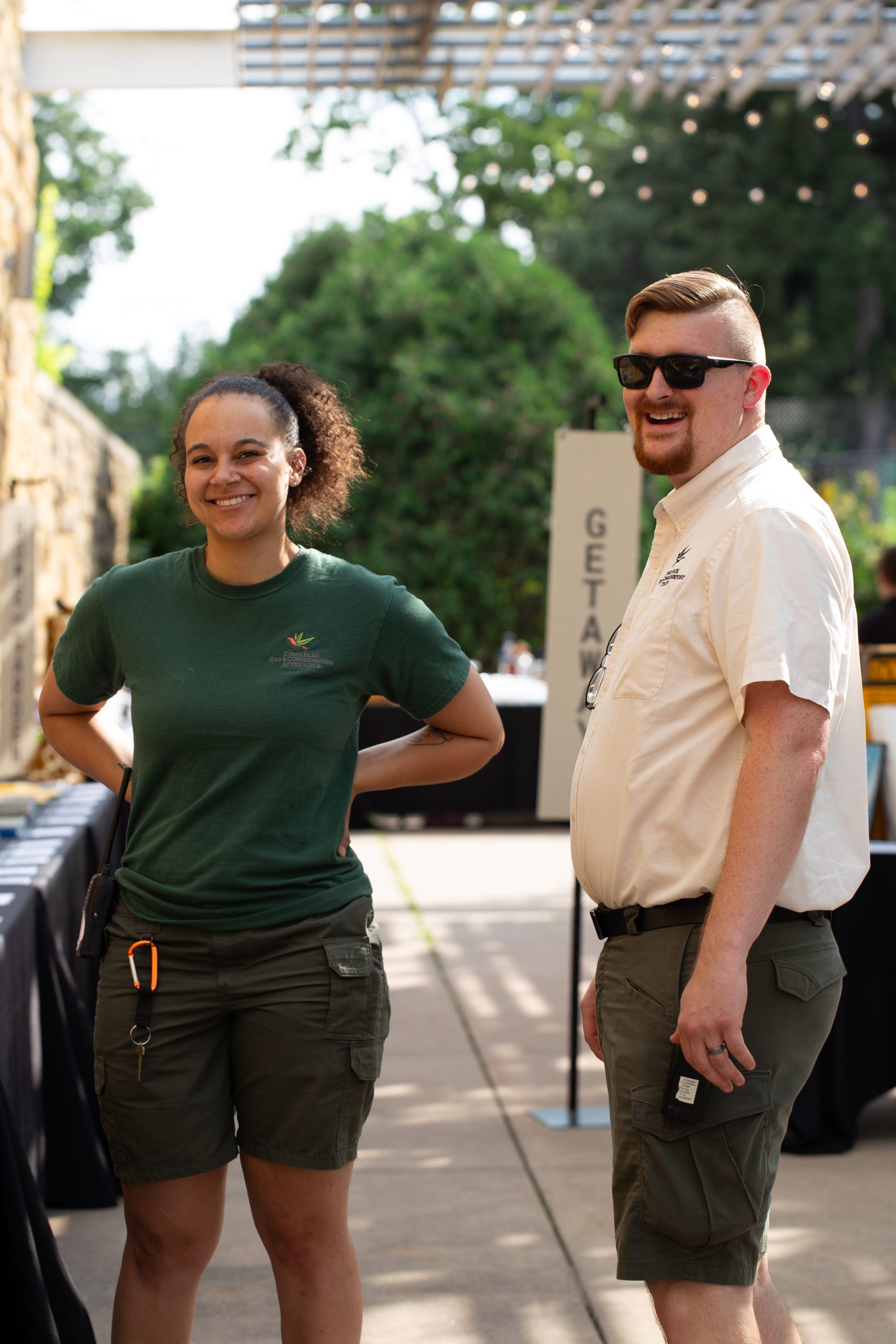
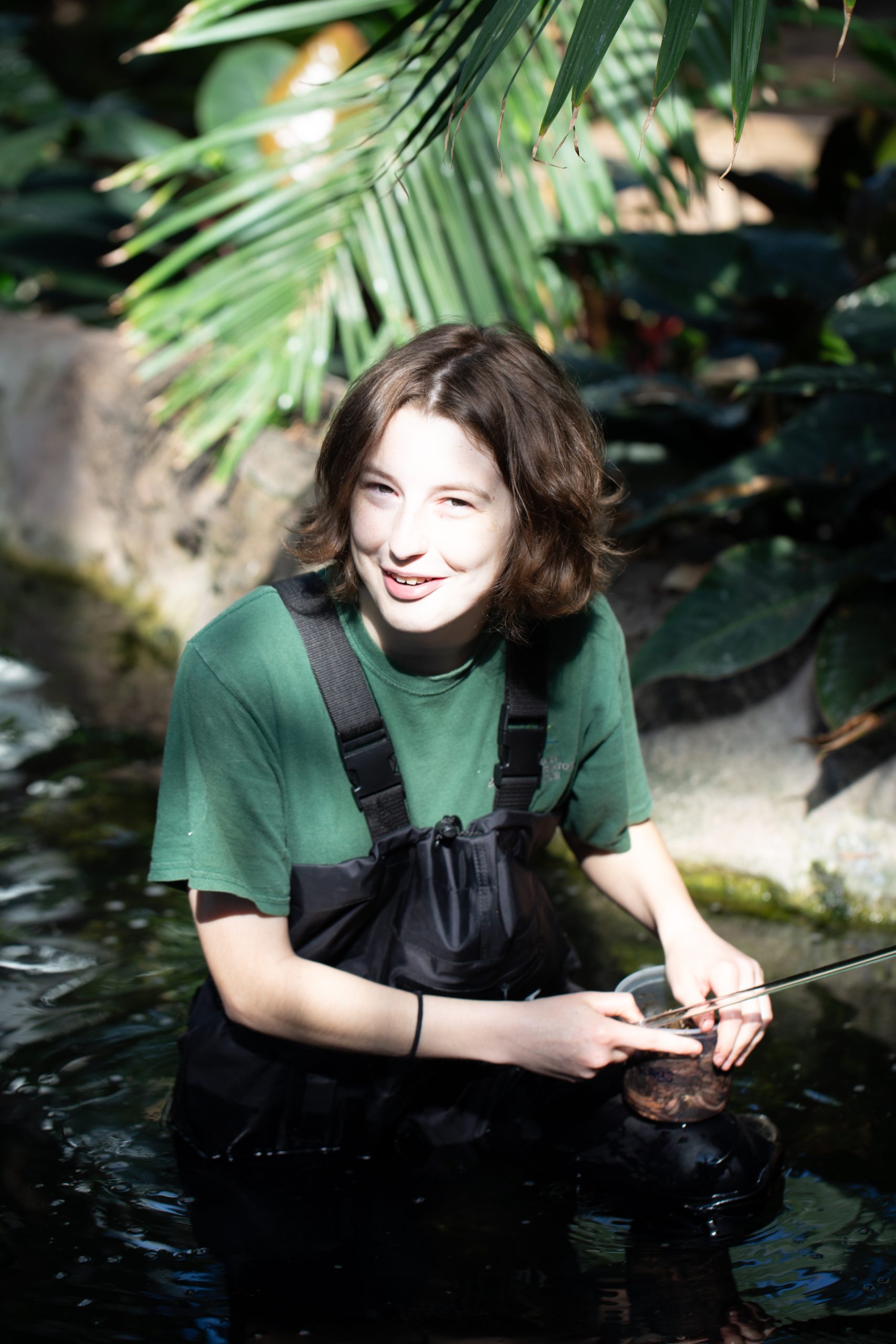
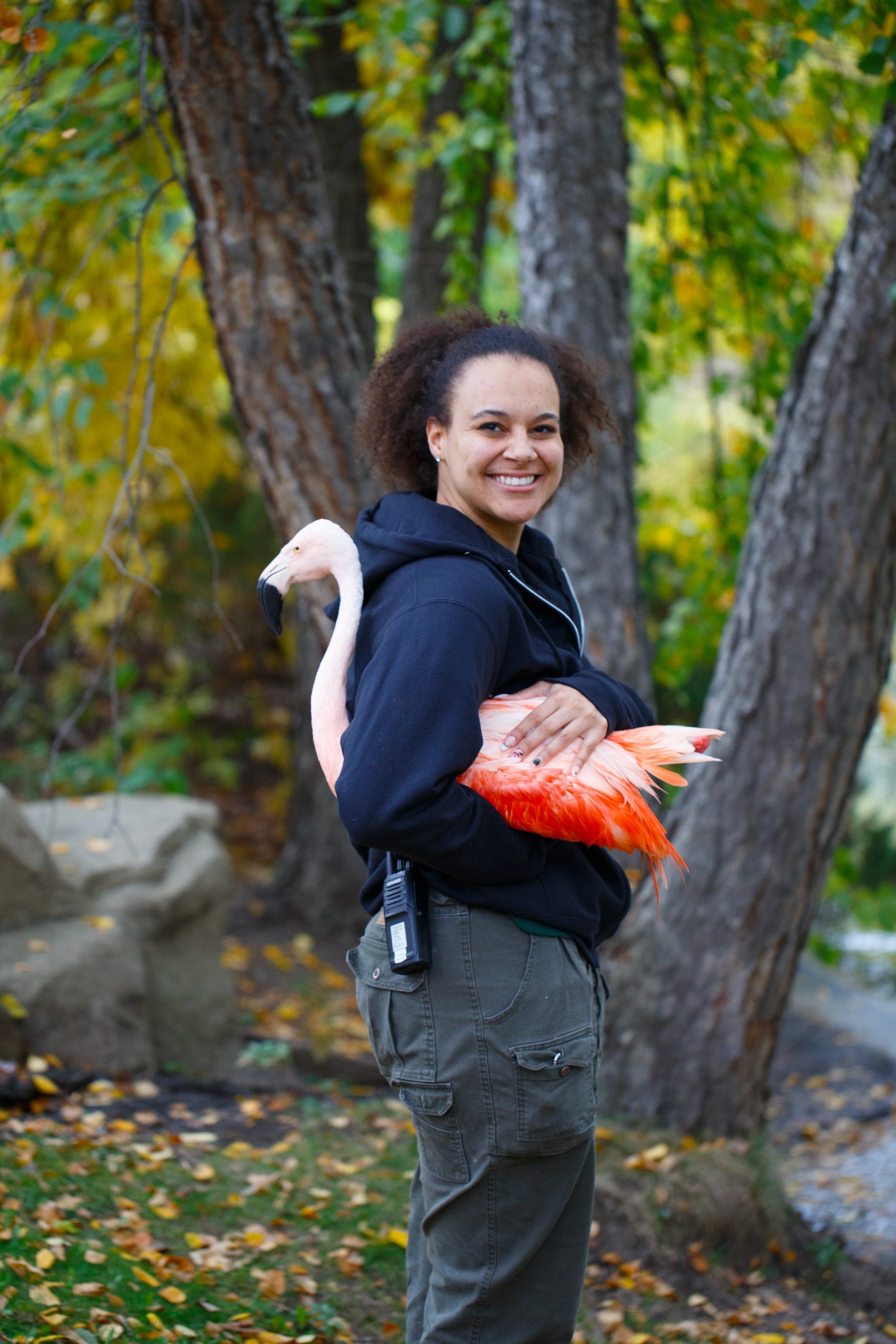
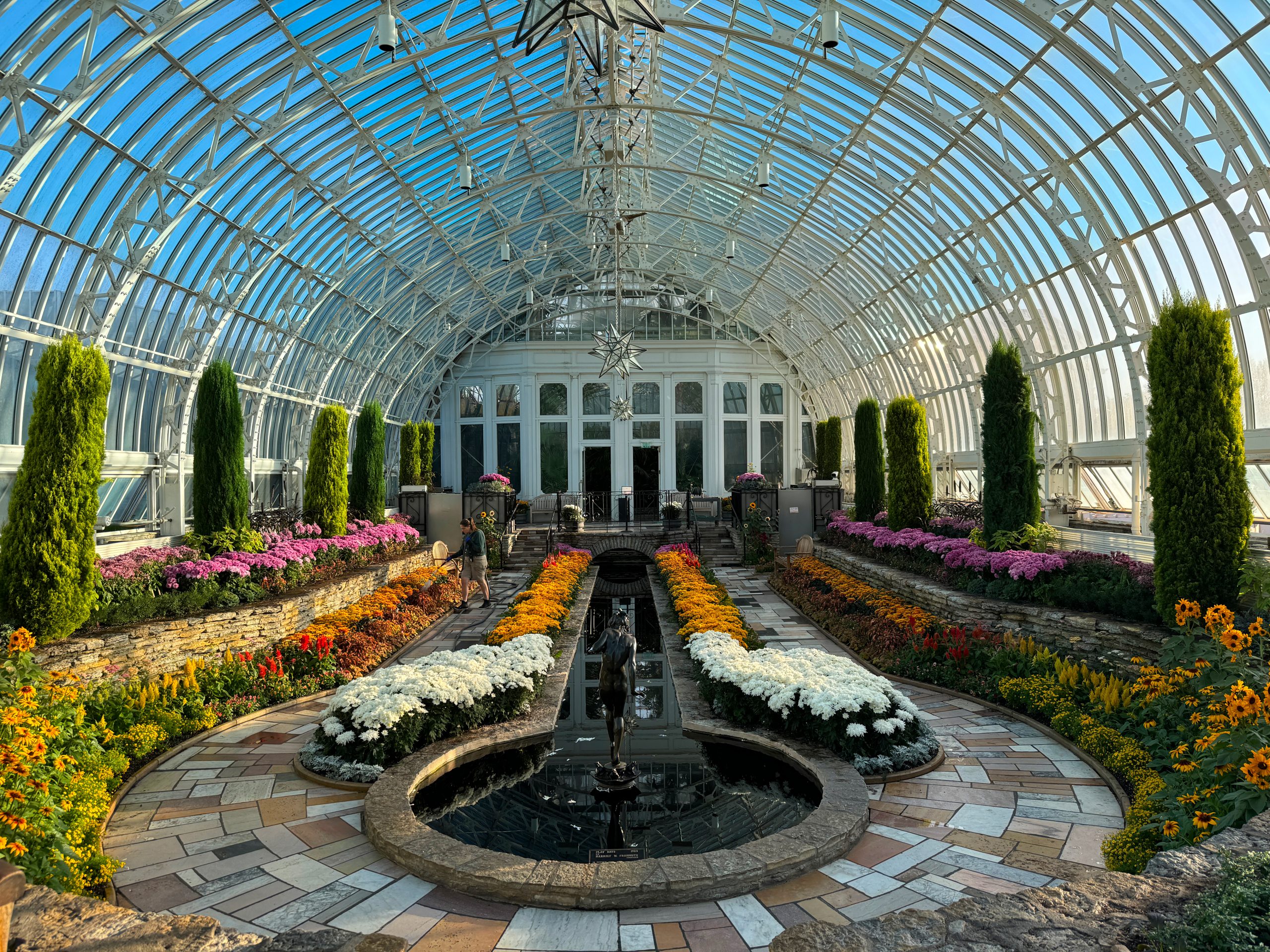
The final Flower Show of the year celebrates the warmth of autumn

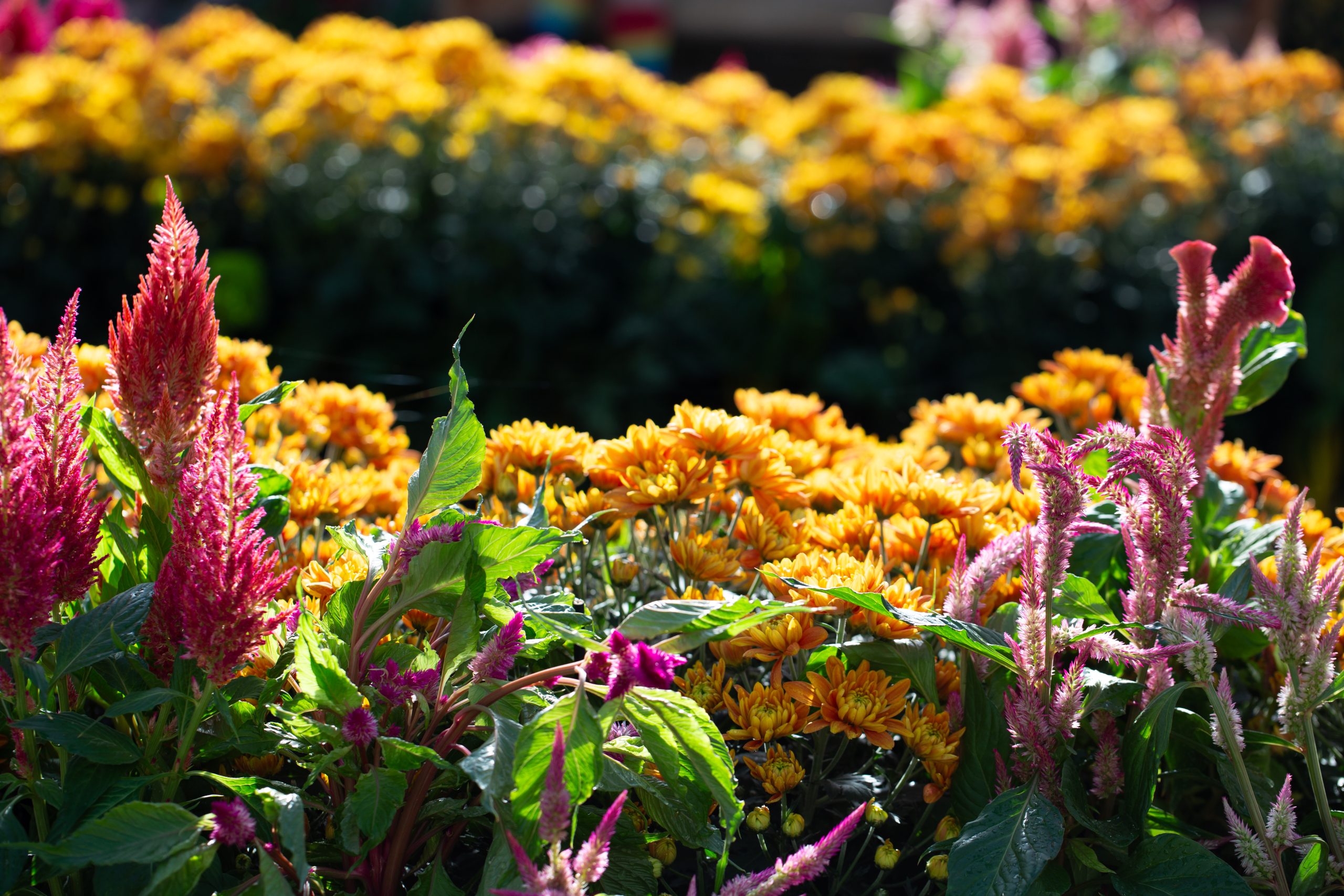
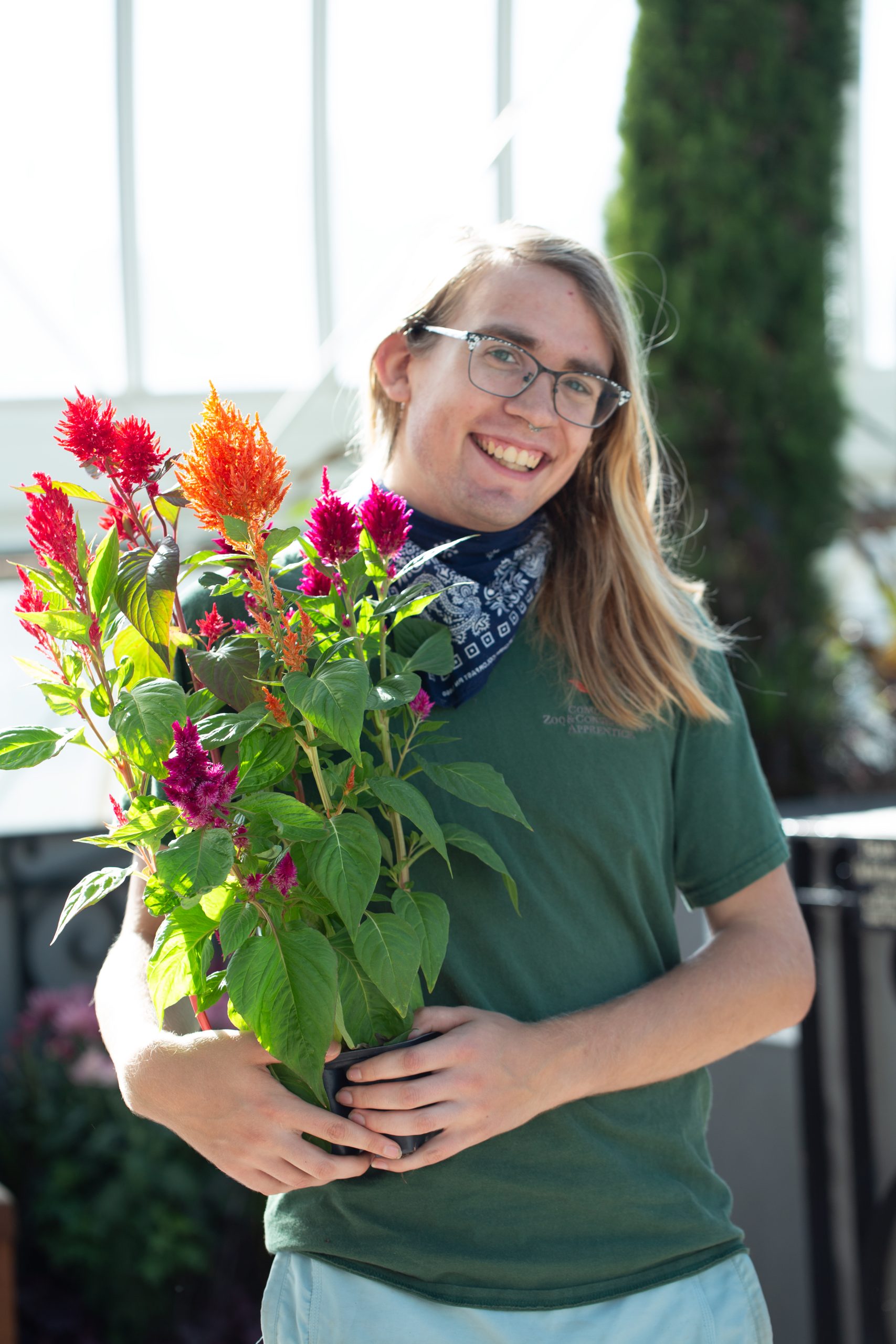
Right Track apprentice Willow Stephens grew up coming to Como, where the Sunken Garden once played host to a family wedding. This season’s show features her favorite flower—celosias “pampas plume”—as a supporting player.

A long-running design trend in fashion, hair, and homewares, the ombre pattern is now making its horticultural debut in the Sunken Garden, where waves of yellow, gold, pink, and purple chrysanthemums ripple against the room’s reflecting pool.
“The theme we were going for was ‘sunset on the water,’” says Willow Stephens, the Right Track horticultural apprentice who co-designed the show along with Como horticulturist Rylee Werden. “The white mums at the end of the pool represent the bright sun, and then you see the colors around it fade away, yellow to orange, pink to purple.”
And now through November 16, Como’s Fall Flower Show is taking its inspiration from the color palette of Como Zoo’s lions, Mumford and Maji. Sunken Garden flower shows are free to the public, and made possible, in part, by your support for Como Friends. Thank you!
An autumn tradition for more than a century, designing the Fall Flower Show at the Marjorie McNeely Conservatory is a cool project for any young horticulturist to have on their resume. But this season’s display is extra special—it will be the last shot of color in the Sunken Garden before it closes for renovations that will make the historic room more accessible to visitors with strollers, wheelchairs, and other mobility challenges. While it’s under construction, Como’s horticulturists, and an event and display company are planning a poinsettia display for the Visitor Center porch.
“There’s never a great time to close any corner of Como, particularly a garden that visitors love as much as the Sunken Garden,” says Como Campus Director Michelle Furrer. “While we won’t be able to experience the Holiday Flower Show, we are planning a special exhibition, Winter’s Blooming Wonderland, that includes the traditional poinsettias on the Visitor Center Porch.”

That’s why horticulturists came up with a particularly colorful plan for this season’s two-part flower show. Following the sunset theme, which runs through October 27, the second half takes its inspiration from the color palette of Como Zoo’s lions, Mumford and Maji, and will run from November 1 through 16.
In addition to traditional mums, Werden says visitors will see her favorite plant, the viola “antique shades,” and many other vibrant supporting players. “The cooler temperatures and shorter days do restrict the types of plants that we can select, but we’ve chosen some that give the room a nice fall feel—chard and kale, marigolds, millet, and grasses all look great with these mums.”
“We’re really excited about having a room that’s more accessible, and that more people can appreciate,” says Werden. “And one thing we really like is that these changes will even create a little more space for garden beds.”
Symbolizing joy, luck, friendship, and rebirth, chrysanthemums have been the centerpiece of the Marjorie McNeely Conservatory’s fall flower shows since 1915. This year’s show highlights the versatility of mums by featuring the same plant side by side—one in the traditional shape, the other pruned back to create a show-stopping central bloom.

To keep all of these plants healthy, Werden recently released hundreds of lacewings into the Sunken Garden. These tiny but mighty beneficial bugs can help protect chrysanthemums from pests known as “thrips,” and the potentially deadly viruses they carry. The Integrated Pest Management program was funded in 2024 by your support to Como Friends. Thank you!
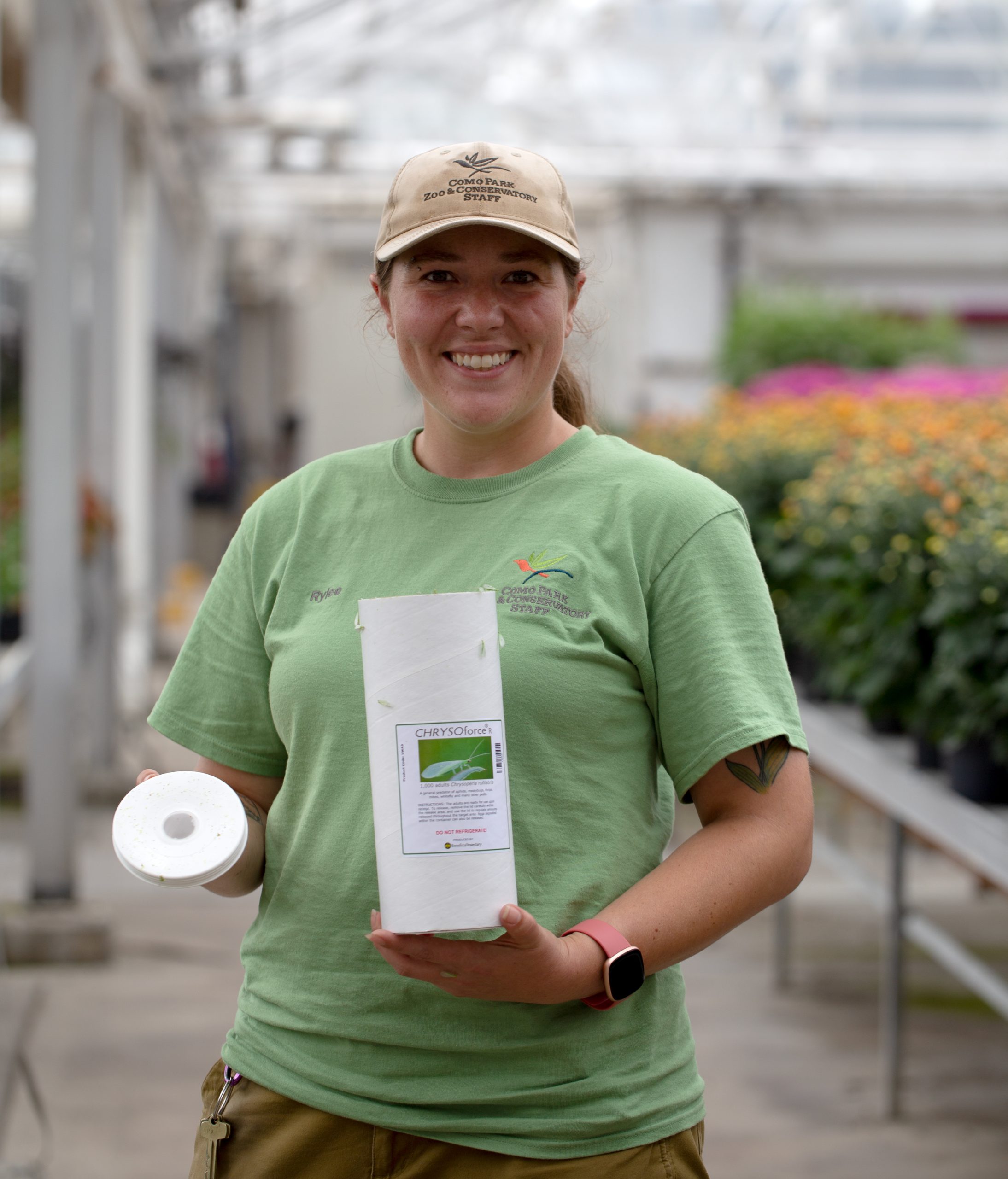

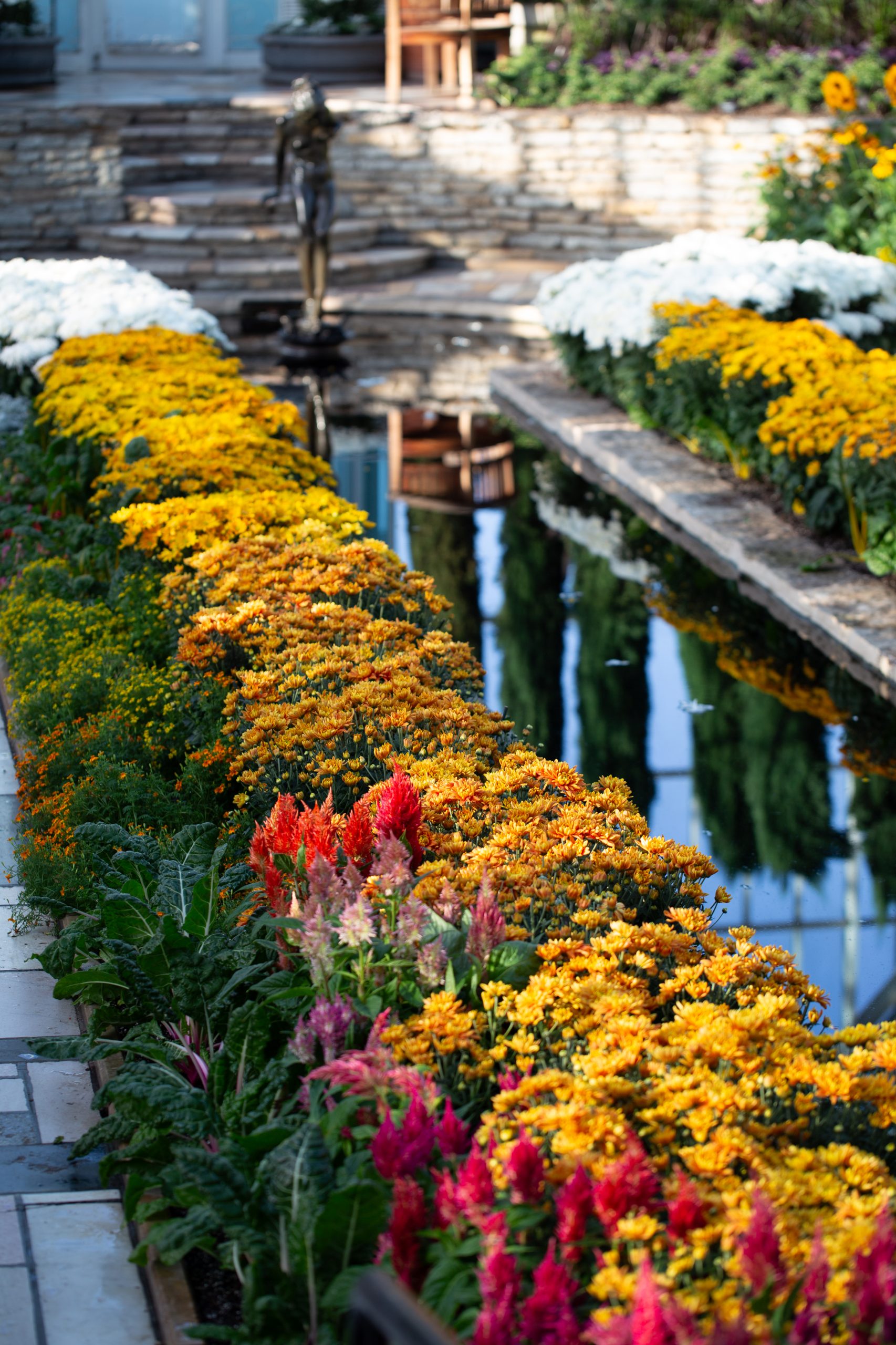
Watch your inbox for a Como Friends’ invitation to a special donor preview of Winter’s Blooming Wonderland, which will be on display in Como’s Visitor Center porch in December. Sign up here.
Fall Sunken Flower Show plant list: Celosia, Yarrow, Viola, Kale, Marigold, Swiss Chard, Dusty Miller, Coleus, Black Eyed Susan, Millet, Aster, Amaranth, a variety of Sunflowers, Ornamental Peppers and Kale, and Pennisetum

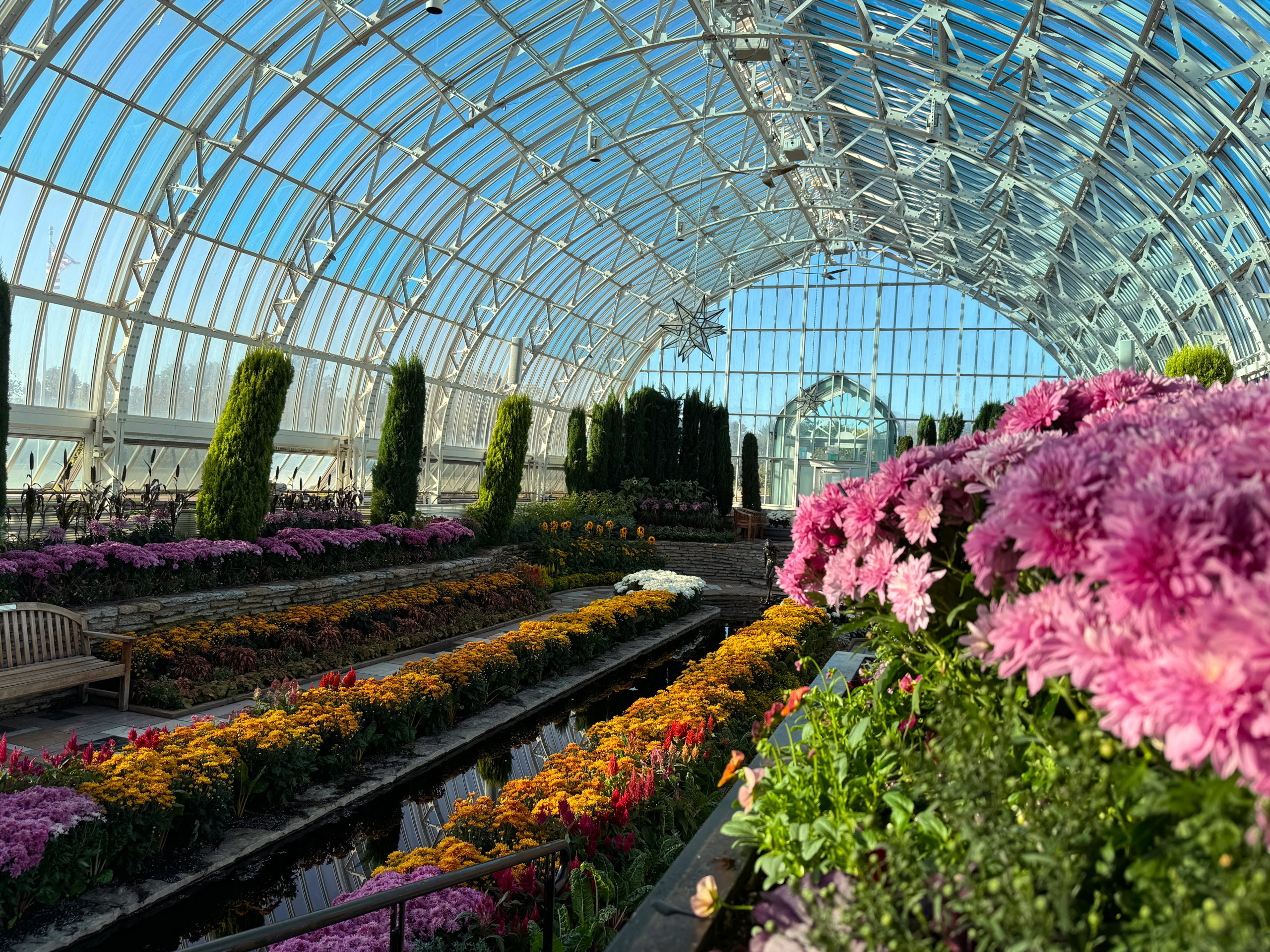
Each year Nature Walk volunteers engage with an estimated 250,000 visitors, most of them younger children, role modeling the idea that caring about conservation is cool
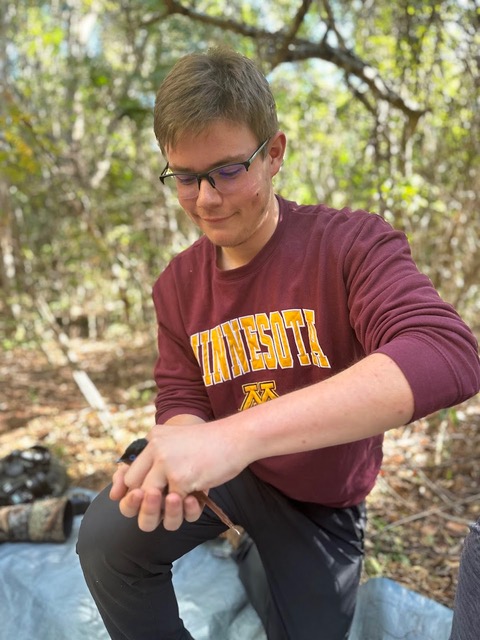
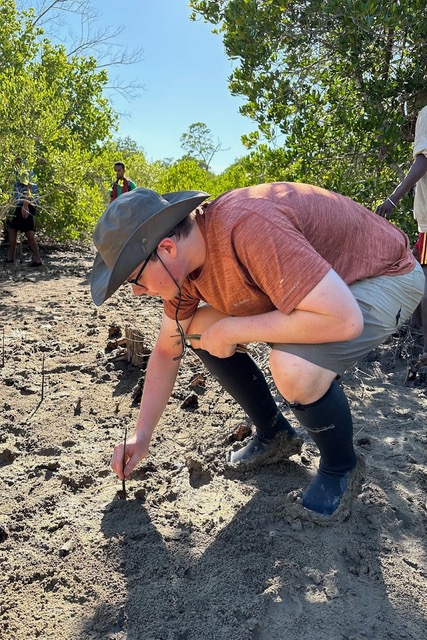
Wally Hlavac, a conservation biology major at the University of Minnesota, spent his summer traipsing across Madagascar, doing field surveys of the island’s birds, butterflies, and lemurs. He credits his time as a Como Nature Walk volunteer with helping him take the first step.
Hlavac was a summer camper at Como several years ago when he encountered his first Nature Walk volunteer, one of 50-some teens recruited each spring and summer to help bring Como’s animal and plant collections a little closer to Como’s nearly two million annual visitors. “I think he came in to show us a rabbit, and I decided that was something I really wanted to do, too,” says Hlavac, who applied and was accepted into the selective program when he was in ninth grade.
Through Nature Walk, teens are provided training on a variety of Como’s conservation themes, from the rainforest and reptiles, to beneficial bugs and plants, that they go on to share with Como visitors at interpretive stations arrayed around Como’s grounds. “It was the first time in my life that I got to teach people about conservation and concepts that I’m really passionate about,” Hlavac says.
The program, which includes professional development training, also pushed him to develop greater confidence and public speaking skills. “I was a really awkward kid, but being able to go to Como and talk to people, and answer their questions was really great for me,” he says. “It motivated me to try hard, and get Como visitors engaged, because those encounters felt really good.” Each year, in fact, Nature Walk volunteers engage with an estimated 250,000 visitors, most of them younger children, role modeling the idea that caring about conservation is cool.
After a pause during the pandemic, Como’s Nature Walk program was back at full power this summer, with a full complement of teen volunteers on campus sharing their insights on the smallest insects and the tallest giraffes. While not every teen will go on to pursue careers in conservation, Hlavac says there’s no doubt the experience helped him recognize that protecting the natural world could be his calling.
“I think the overall curriculum of Nature Walk really does inspire a love for natural science in any capacity, and learning more about animals and plants and being able to share that with people was really exciting,” he says. “I know it really cemented conservation in my mind as something I want to continue doing.”
This year, your support for Como Friends made it possible to invest in Como’s Nature Walk program with the hiring of Maddie Becker to fill a new assistant role.“Working with Nature Walk has been a fantastic experience. The kids have worked hard this summer, and it’s been so uplifting to help foster an environment where they’ve not only been so welcoming and enthusiastic with the guests that visit their carts, but also in their relationships with each other. Each day they express so much joy for life and the natural world that I am left with nothing but immense hope for our future.”
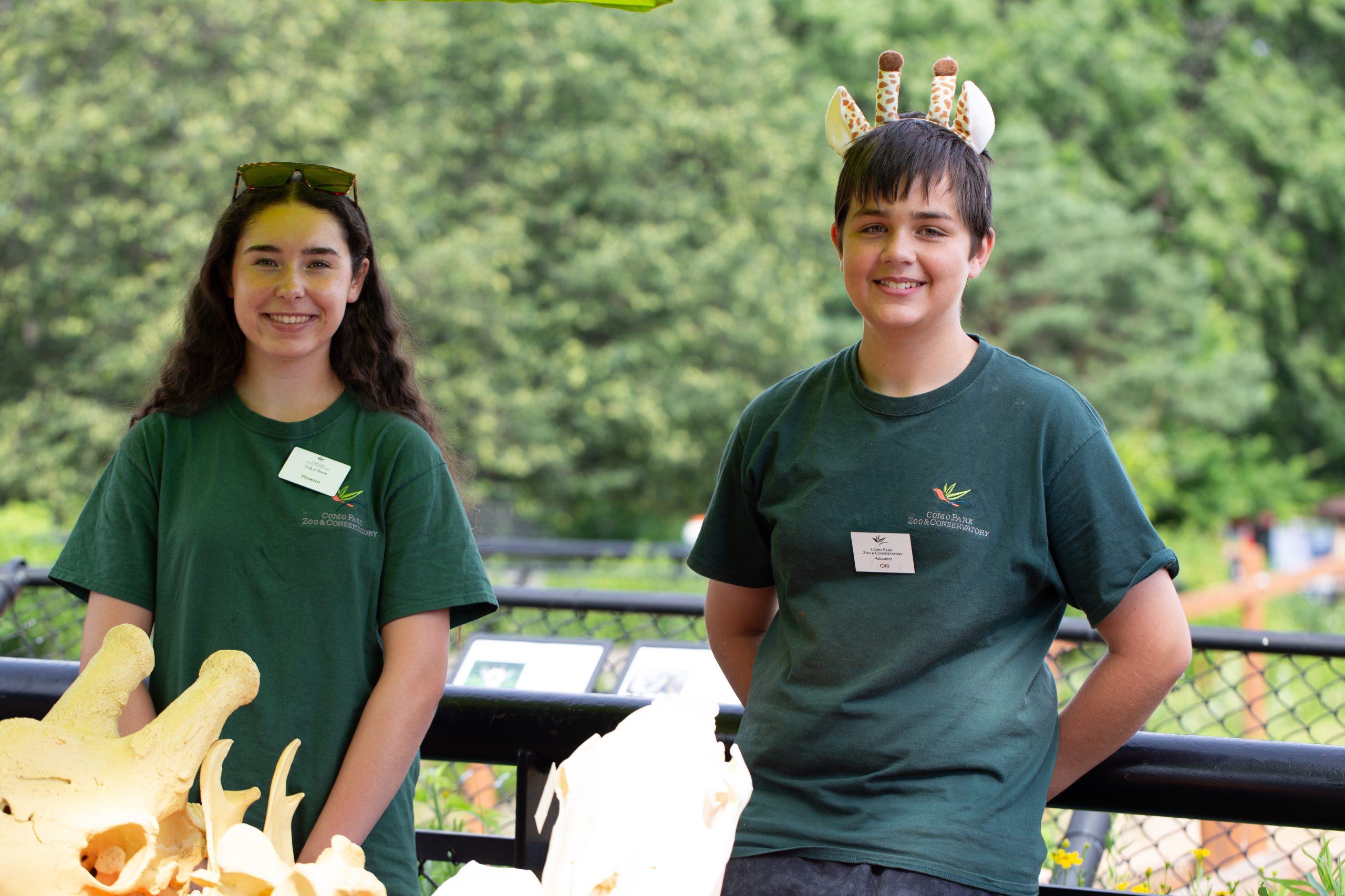

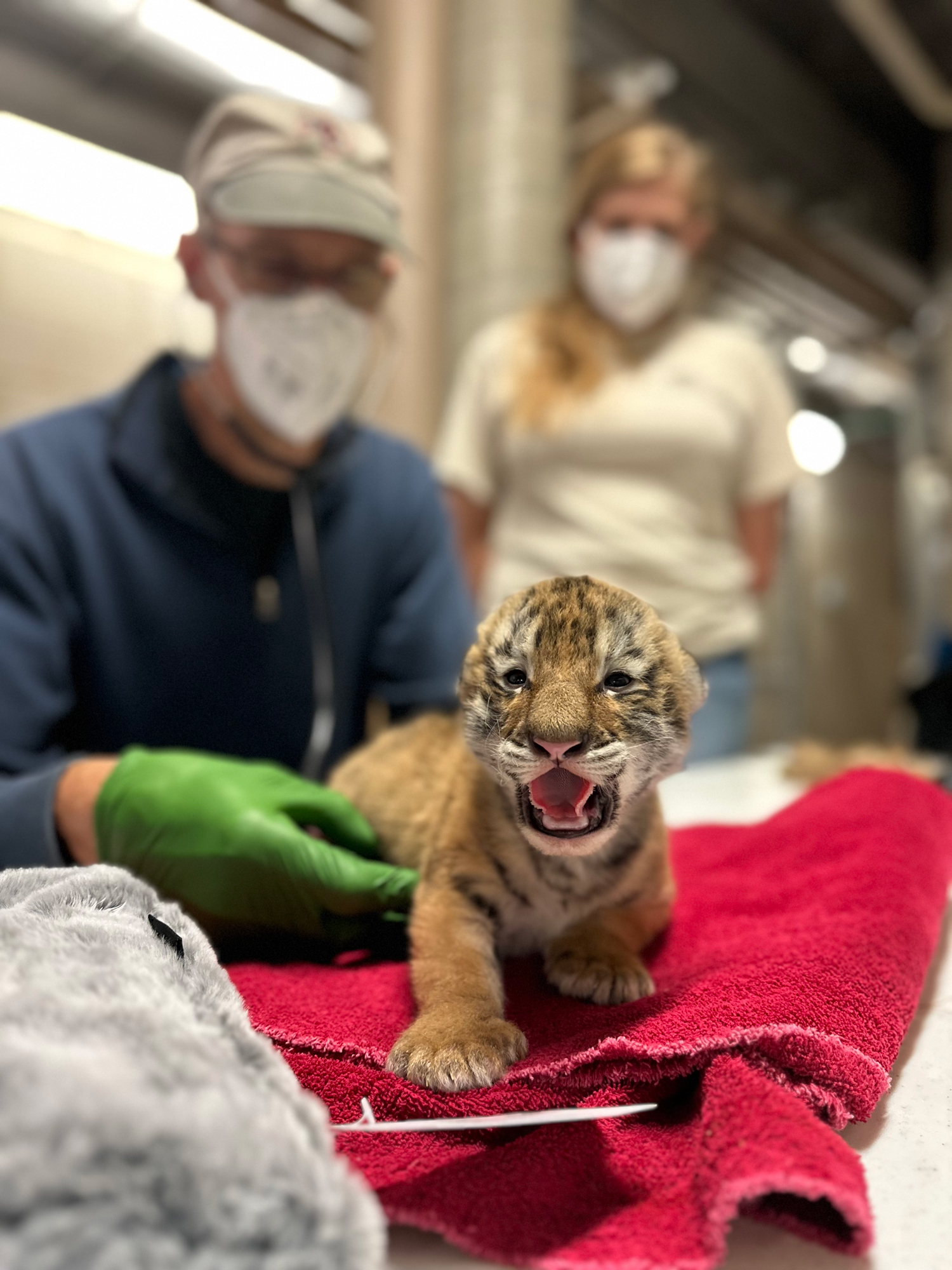
TWO CRITICALLY ENDANGERED AMUR TIGER CUBS BORN AT COMO PARK ZOO & CONSERVATORY
St. Paul, MN, [September 4, 2024] – Como Park Zoo & Conservatory is thrilled to announce the birth of two critically endangered Amur tiger cubs on the morning of August 29th. These cubs—a male and a female—are the first tigers born at Como Zoo in more than 41 years, marking a historic and exciting moment for the zoo and its conservation efforts.
The cubs’ mother, Bernadette, is 7 years old and was born on September 14, 2016, at the Milwaukee County Zoo in Wisconsin. She joined Como Zoo from the Oregon Zoo in October 2023. The father, Tsar, is 11 years old, born on July 6, 2013, at the Sedgwick County Zoo in Kansas. Tsar has been a resident of Como Zoo since February 2019. This is the first time both Bernadette and Tsar have become parents.
The pairing of Tsar and Bernadette was made following a breeding recommendation from the Association of Zoos and Aquariums (AZA) Amur Tiger Species Survival Plan (SSP), a program dedicated to the management and conservation of Amur tigers in accredited institutions across the country. With a gestation period of approximately 104 days, the arrival of these cubs offers new hope for this critically endangered species.
“This is an extraordinary milestone for Como,” said Michelle Furrer, Como Park Zoo & Conservatory’s Director. “The birth of these tiger cubs is not only a testament to the dedication and expertise of our animal care team but also a beacon of hope for the conservation of Amur tigers worldwide. We look forward to sharing their growth and milestones with everyone who visits Como Park Zoo & Conservatory.”
Both mother and cubs are in good health and will remain in their private, calm maternity den for the next few months. This period is crucial for mother-cub bonding and for the cubs to grow strong enough to explore their outdoor habitat safely. Zookeepers and veterinary staff are monitoring the new family closely via cameras, observing Bernadette being a diligent and attentive mother—cleaning, feeding, and keeping the cubs warm.
“These cubs represent a significant success for the Amur Tiger Species Survival Plan and for the future of the species,” said Wes Sims, Director of Animal Care & Health at Como Park Zoo & Conservatory. “Our team is incredibly excited about the birth of these two tiger cubs, especially since they are the first offspring for both parents. It’s a testament to the dedication and hard work of our team that these amazing animals have successfully bred in our care.”
While Bernadette and her cubs will remain off-exhibit for some time, Tsar will continue to be visible to visitors in his habitat. Como Park Zoo & Conservatory will provide regular updates on Bernadette and her cubs through its social media channels, offering the public a chance to follow along as the cubs grow.
Amur tigers, also known as Siberian tigers, are the largest tiger subspecies, with males reaching up to 400 pounds. They once roamed across Siberia but are now confined to a small region around the Amur River in the Russian Far East. With fewer than 500 individuals remaining in the wild, they face critical threats from habitat loss, poaching, and human-wildlife conflict.
In addition to celebrating the birth of these cubs, Como Park Zoo & Conservatory also seeks to enhance its facilities through a proposed Big Cat Habitat project. This initiative represents a significant opportunity to advance Como’s mission of education and conservation. The project aims to improve the welfare of these majestic creatures while providing visitors with more enriching and immersive experiences. The habitat will include ADA and energy efficiency upgrades, ensuring accessibility for all community members. Como is actively seeking funds through a State Bonding appropriation to bring this project to life and ensure future generations can continue to connect with these ambassadors of their species.
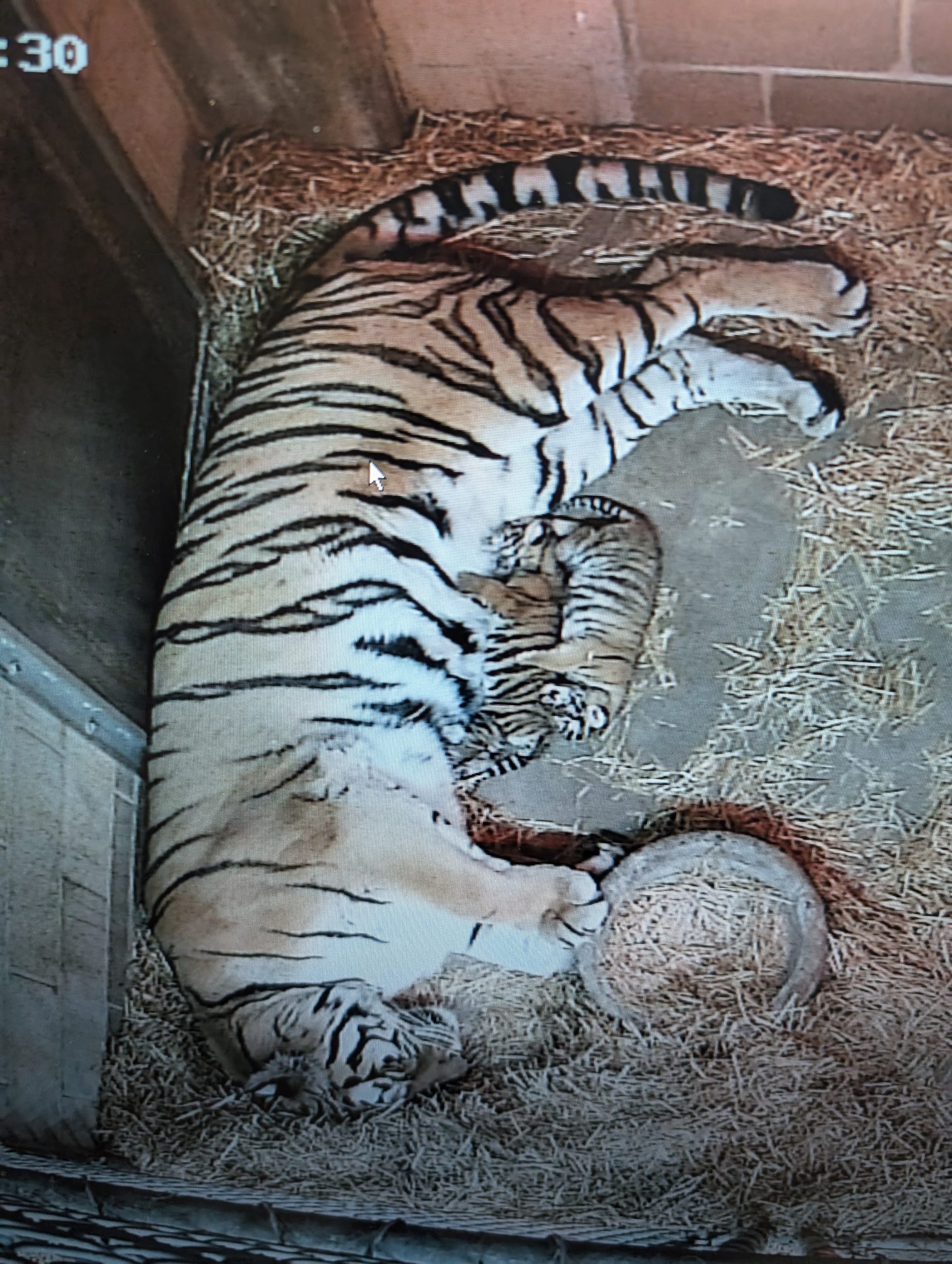
The following story appeared in the Summer 2024 Edition of the Como Friends Insider, the quarterly newsletter for Como Friends supporters. Give today to stay up to date on all things Como, with behind-the-scenes conversations with zookeepers, horticulturists and educators who carry out Como’s conservation mission.
Experts from the Tiger Species Survival Plan think Como Zoo’s male tiger, Tsar, and Bernadette, a female who recently came to Como from the Oregon Zoo, would make a great match. But after a few months of behind-the-scenes meet and greets, the two tigers are still taking things slow.
In fact, that’s the strategy that large cat keepers Hans Jorgensen and Caitlin Allessi have been sticking to since Bernadette made the move to Como Zoo a few months ago. Since tigers can be ferocious with each other—even their mates—keepers have been keeping their encounters as short and positive as possible. Solitary by nature, tigers are the rare breed of animal that depends on induced ovulation, which means that females don’t release their eggs until after successful breeding behavior has taken place.
While Bernadette showed signs of being in estrus earlier this spring, and the pair have successfully copulated on multiple days, keepers continue to keep a close eye on their interactions. “Even a few months after being introduced, there’s still risk involved, so we monitor their behaviors closely both when they’re together and when they’re separated,” says Allessi. While there’s no predicting if the pair will have success, tiger gestation typically takes just 100 days. “Will there be cubs? We can’t say at this point,” says Jorgensen. “But they both appear to be receptive to the possibility.”
(Photos of tiger cubs and Bernadette in their den taken by Senior Keeper Jill Erzar, and Zookeepers Hans and Caitlin.)
The tallest mammal on earth, giraffes also have the longest legs in the animal world, with an average “inseam” of 72 inches. As young giraffes grow, healthy limb development is a critical step in supporting their full adult weight of more than 2,000 pounds.

That’s why Como Zoo keepers and veterinary staff have been keeping a close eye on Ivy, a reticulated giraffe calf born in November to mother Zinnia. Like all young giraffes, Ivy was up and walking within minutes of her birth, but as she’s grown, keepers have noticed an unusual bend in the bones of her ankles.
“Over time, we started noticing that her legs were growing inward a little bit, and they were bumping into each other when she walked, which is why we started getting concerned,” says Wes Sims, director of animal care and health at Como Zoo. Equine surgeons from the University of Minnesota’s veterinary school diagnosed Angular Limb Deformation or ALD, a limb condition that’s common in horse foals as well.
Recently, hoofstock and veterinary staff took the extra step of anesthetizing the young giraffe to take x-rays to help inform her treatment plan. “After studying those x-rays, it was determined that she was not a good candidate for some of the typical surgeries that equine surgeons would want to perform in these cases,” says Sims. “Instead, she’ll be on stall rest for an extended period of time. Joint inflammation is something we want her to avoid for a while, so we don’t want her to risk going up inclines and declines or running around too much.”
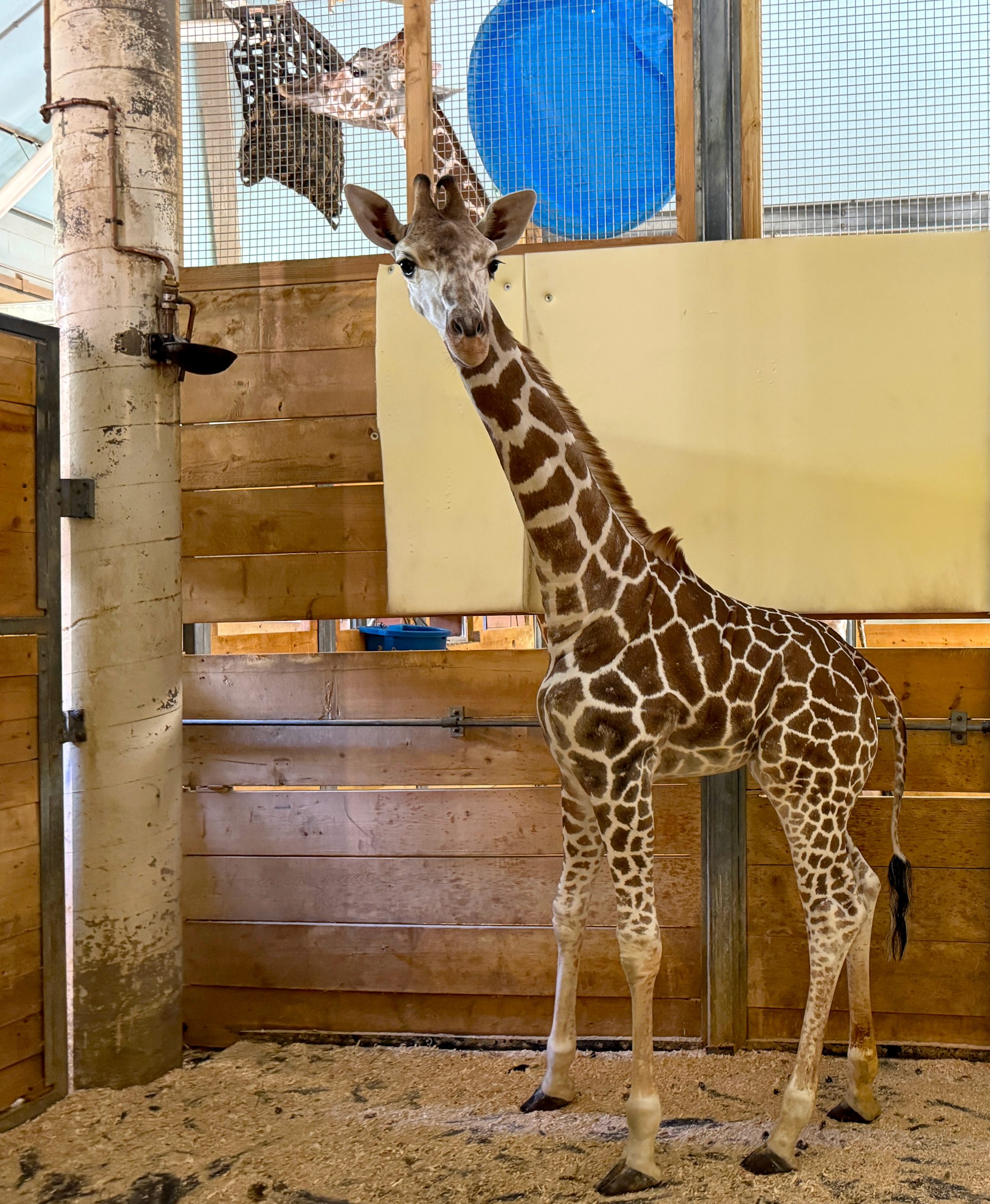
While the young giraffe remains in the Hoofstock Building’s behind-the-scenes habitat, Ivy has been getting plenty of attention from zookeepers, who provide daily enrichment to keep her engaged and curious. She also enjoys the companionship of her mother Zinnia, age 8, and her “aunt” Clover, age 23, who often choose to stay indoors with the young giraffe.
Though many Como Zoo visitors have shared how eager they are to see the young giraffe in her outdoor habitat, Sims says keeper talks that include updates about Ivy’s health conditions have helped convey how important stall rest is during this critical time in her development. “We’re doing everything we can to keep things calm and low key for her while we wait to see some progress,” says Sims.
Elevated Care for All of Como’s Animals
From portable x-ray machines and ultrasound monitors, to high-tech equipment that supports animal vision, dental health, and water quality, your support for Como Friends is critical to providing the cutting-edge care that keeps animals like Ivy healthy and curious.
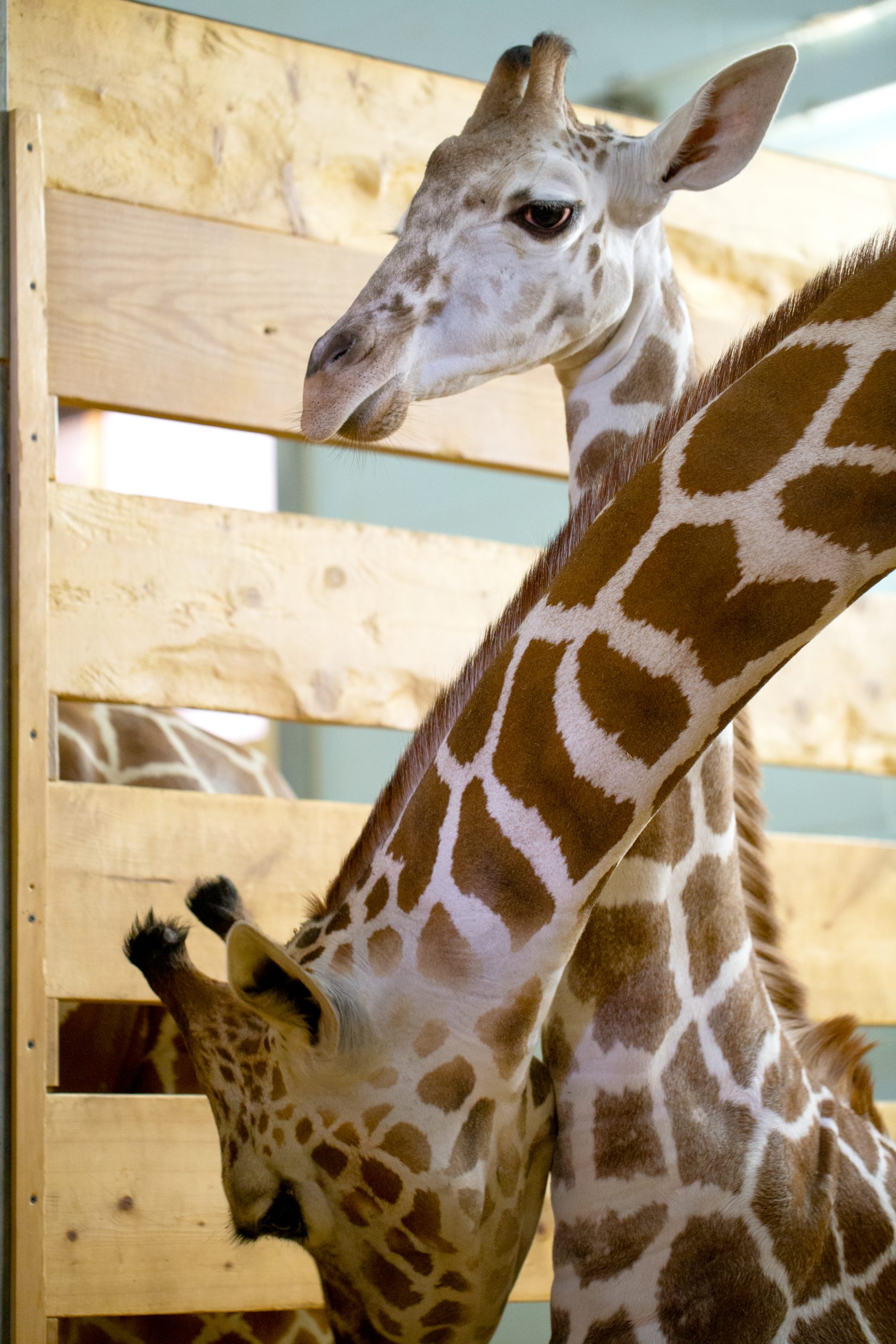

Your support for Como Friends helped Mutambi the gray crowned crane recover quickly after a wing injury, and rejoin breeding partner, Houdini
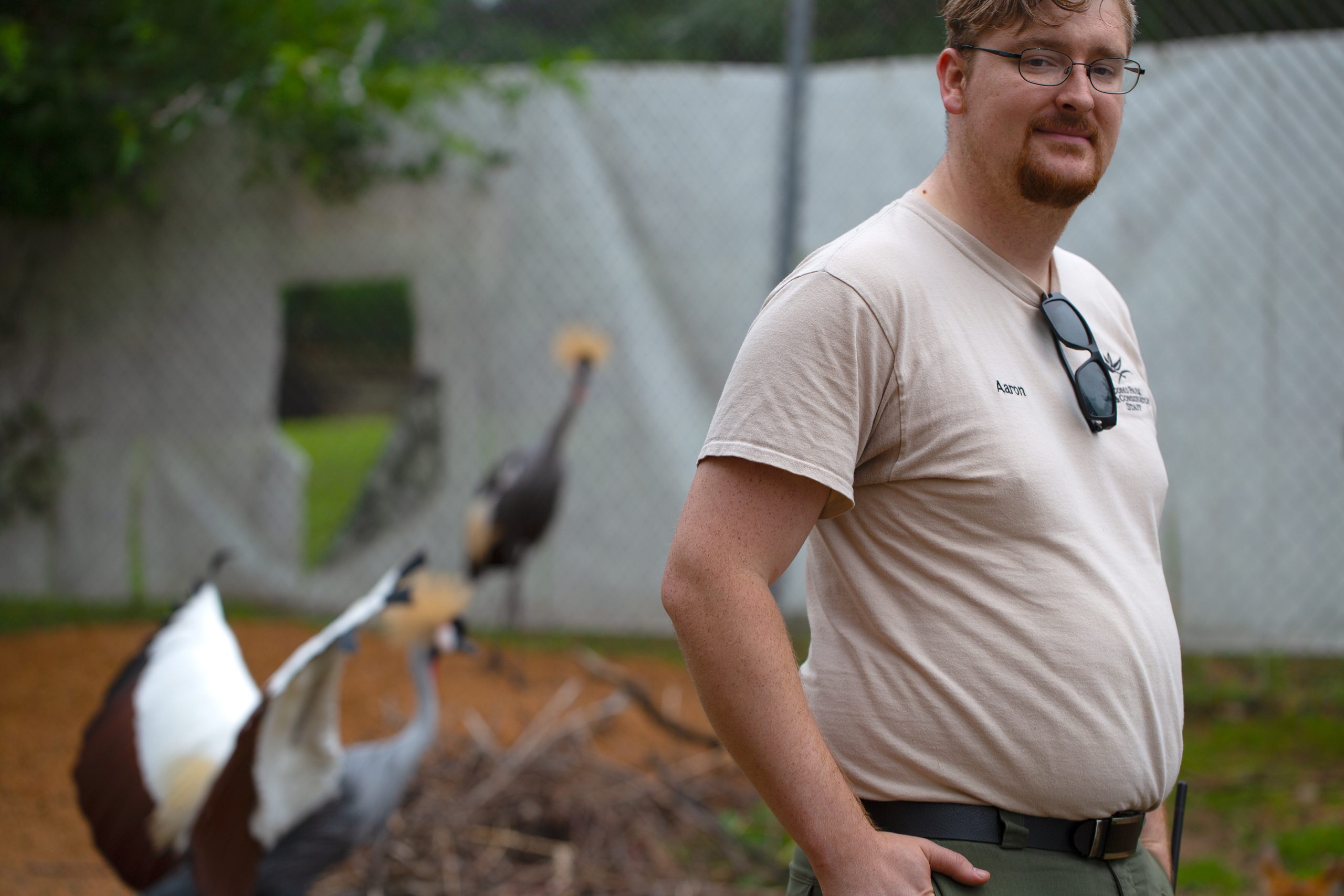
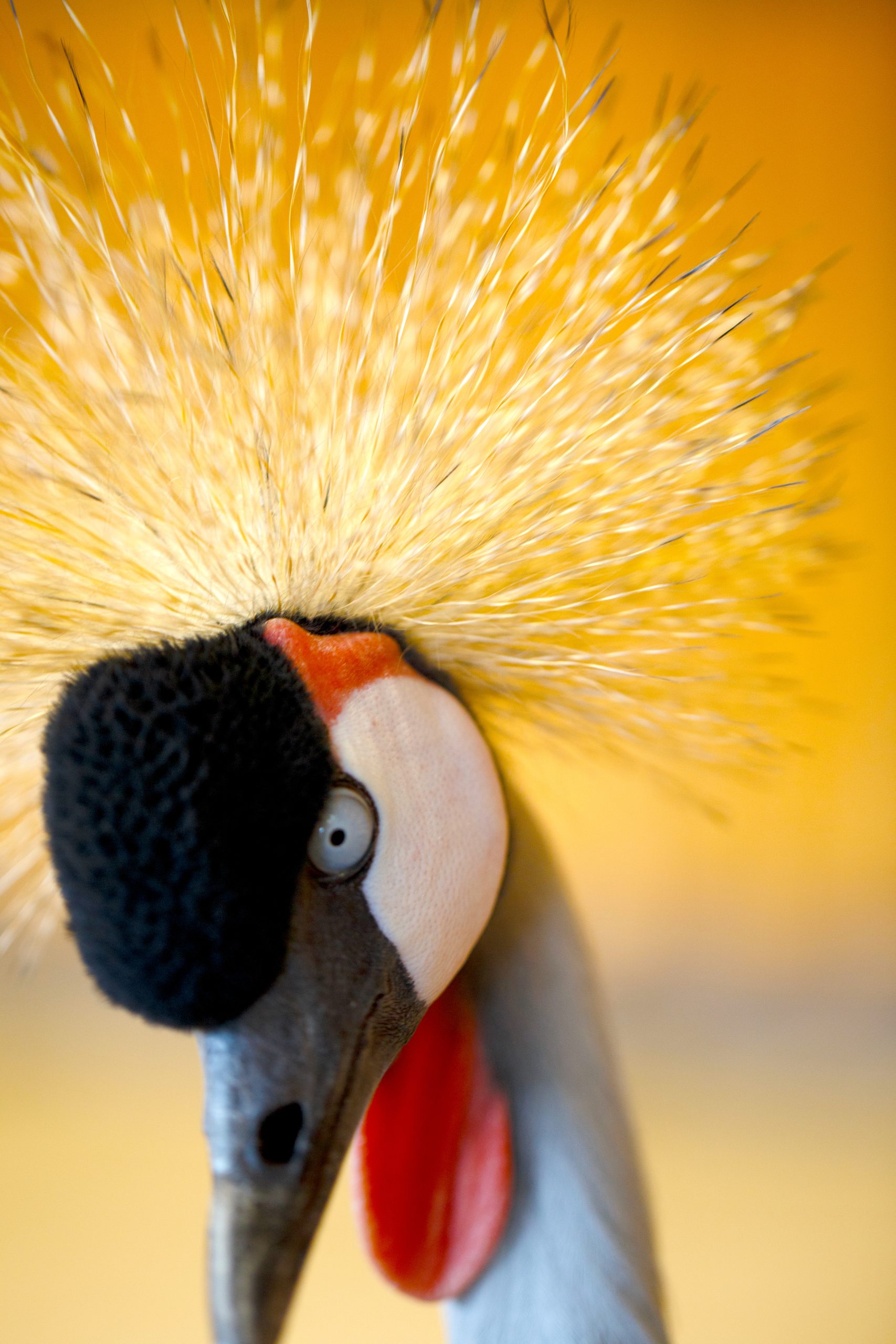
Earlier this spring, Mutambi the gray crowned crane had an unexpected run-in with one of the Grant’s zebras as they raced through the African Hoofstock habitat in what may have been a mating pursuit. While zookeepers didn’t see the collision, they were on the spot with Como’s veterinary team within minutes, using a new portable x-ray machine—funded by Como Friends supporters—to get a better understanding of her injury.
“It was basically a dislocated elbow that vets were able to pop back into place and bandage up for a couple of weeks,” says Como Zoo hoofstock keeper Aaron Nelson. “She just wasn’t able to get out of the way in time, and may have even spread her wings to make herself look bigger, which was probably not the right move for her to make in that situation.”
Fortunately, Mutambi has made a full recovery, as Como visitors will see this summer. Together with her breeding partner Houdini, the pair have begun demonstrating a few of the moves in the elaborate mating dance this ancient and endangered crane species is known for.
“They’re a visually striking animal to look at, but they’re also very charismatic, especially this time of year,” says Nelson. “Not only do they do these really intricate courtship dances with each other, they’re also accompanied by these kind of booming and rhythmic-sounding vocalizations that are very unique.”
Como Zoo’s gray crowned cranes were selected as a breeding pair for the Species Survival Plan, the Association of Zoos and Aquariums program designed to ensure the survival of selected species in zoos that are endangered or threatened in the wild. While the young pair have yet to show signs of breeding behavior, keepers are encouraged by their mutual interest in each other.
“Like most crane species, gray crowned cranes are monogamous and they will bond with one mate for pretty much their entire life,” says Nelson. “The courtship dancing is a really good sign, because it means they’re pair bonded at the very least. The fact that they are vocalizing at each other and doing these dances is a really good sign that they’re at least interested in each other.”
Elevated Care for All of Como’s Animals
From portable x-ray machines and ultrasound monitors, to high-tech equipment that supports animal vision, dental health, and water quality, your support for Como Friends is critical to providing the cutting-edge care that keeps animals like Mutambi healthy and curious. At Como Friends’ upcoming Sunset Affair: Our Wild World, your generosity helps to invest in elevated care for more than 1,200 animals at Como Zoo. Buy your ticket today or make a contribution to our Fund-a-Mission program to support the animals, plants and people that come together at Como Park Zoo & Conservatory.
